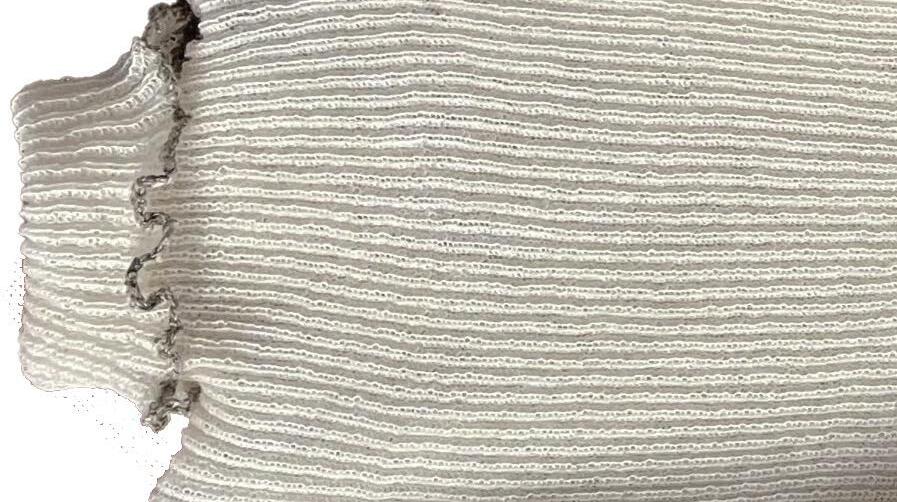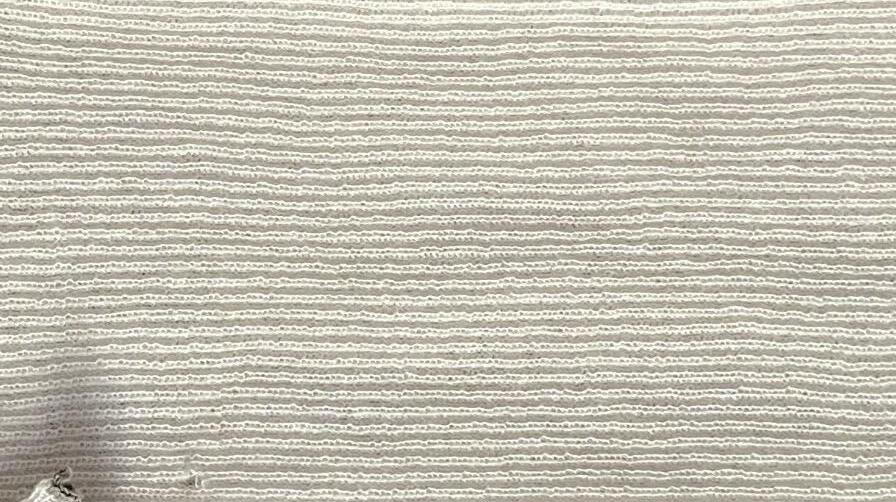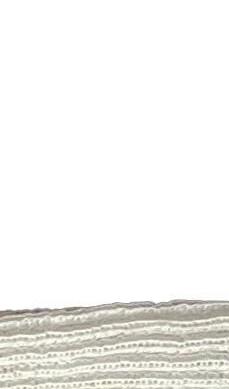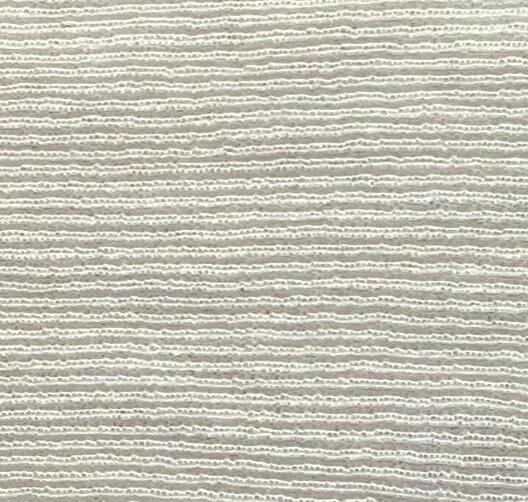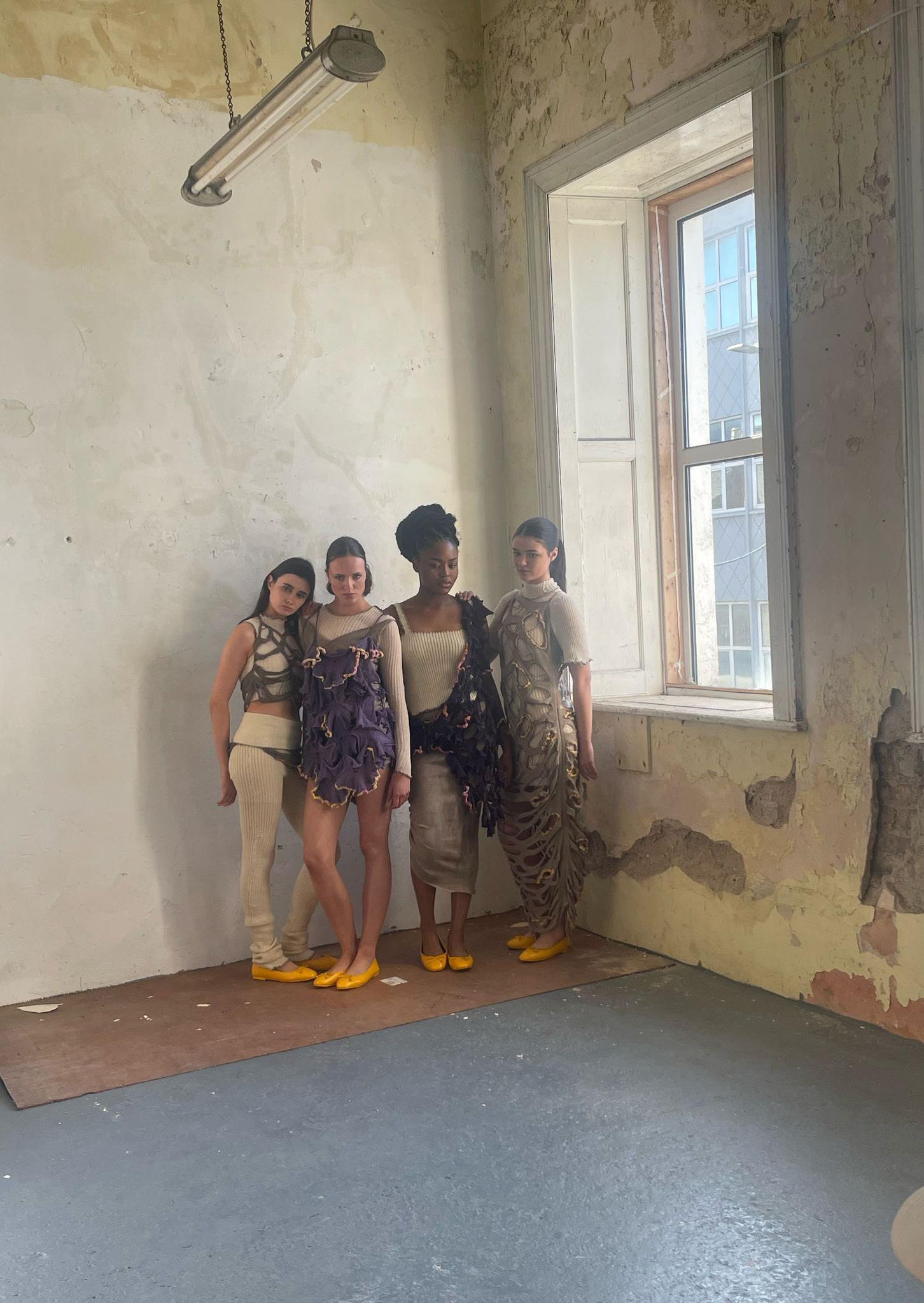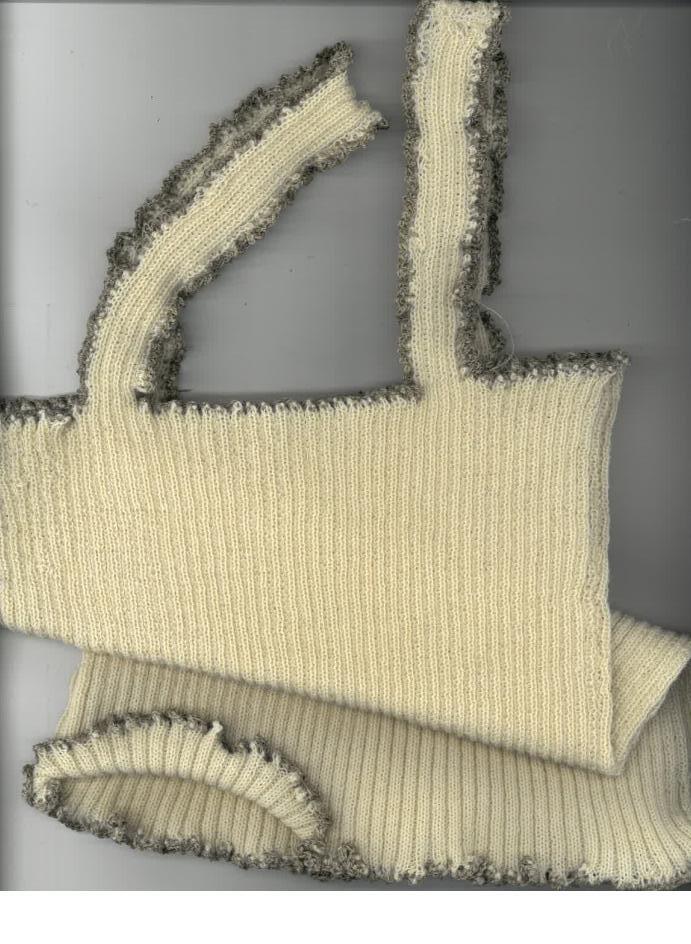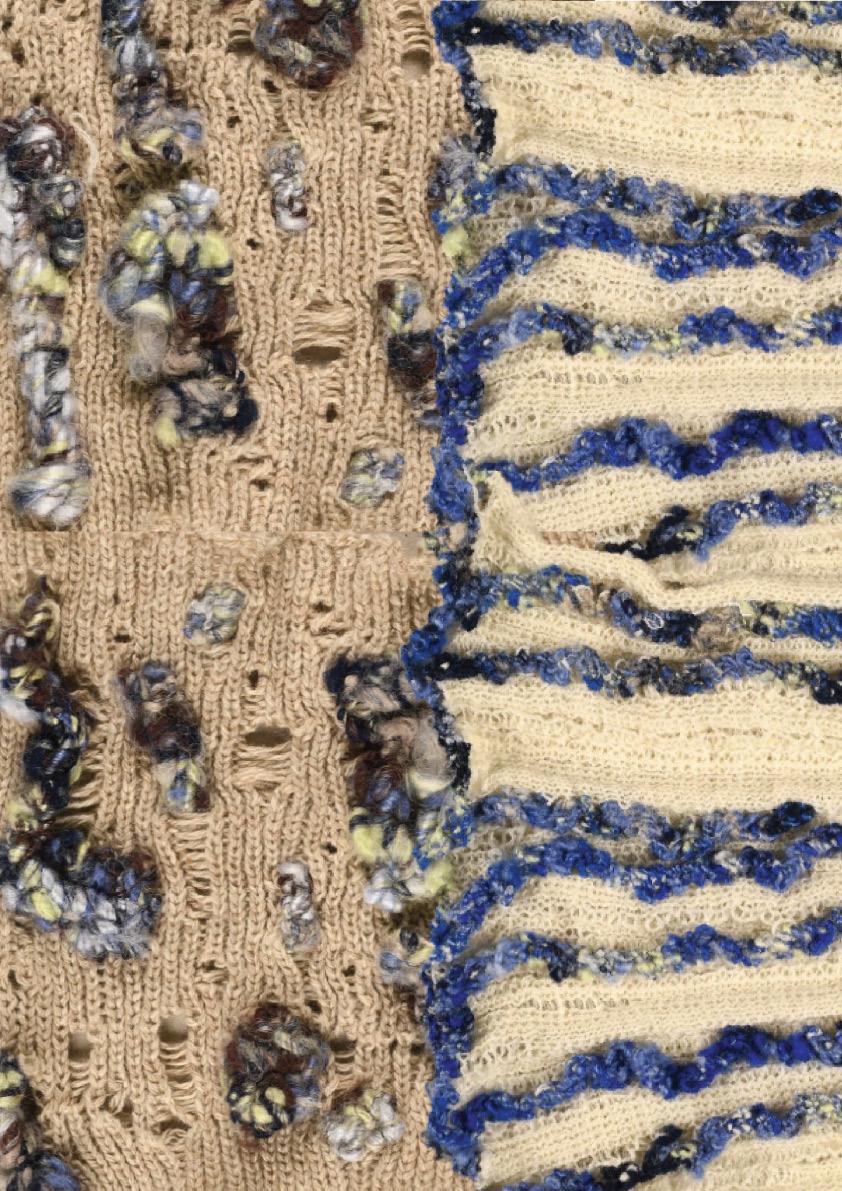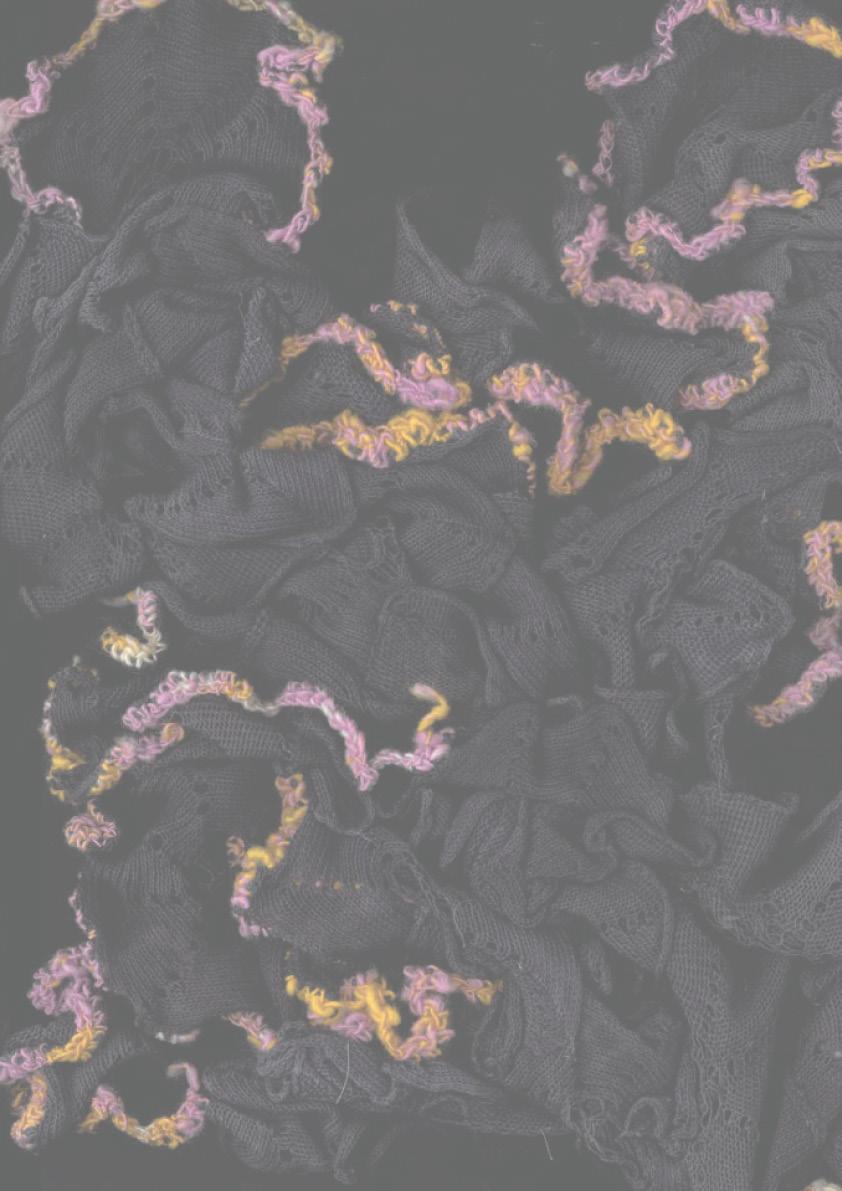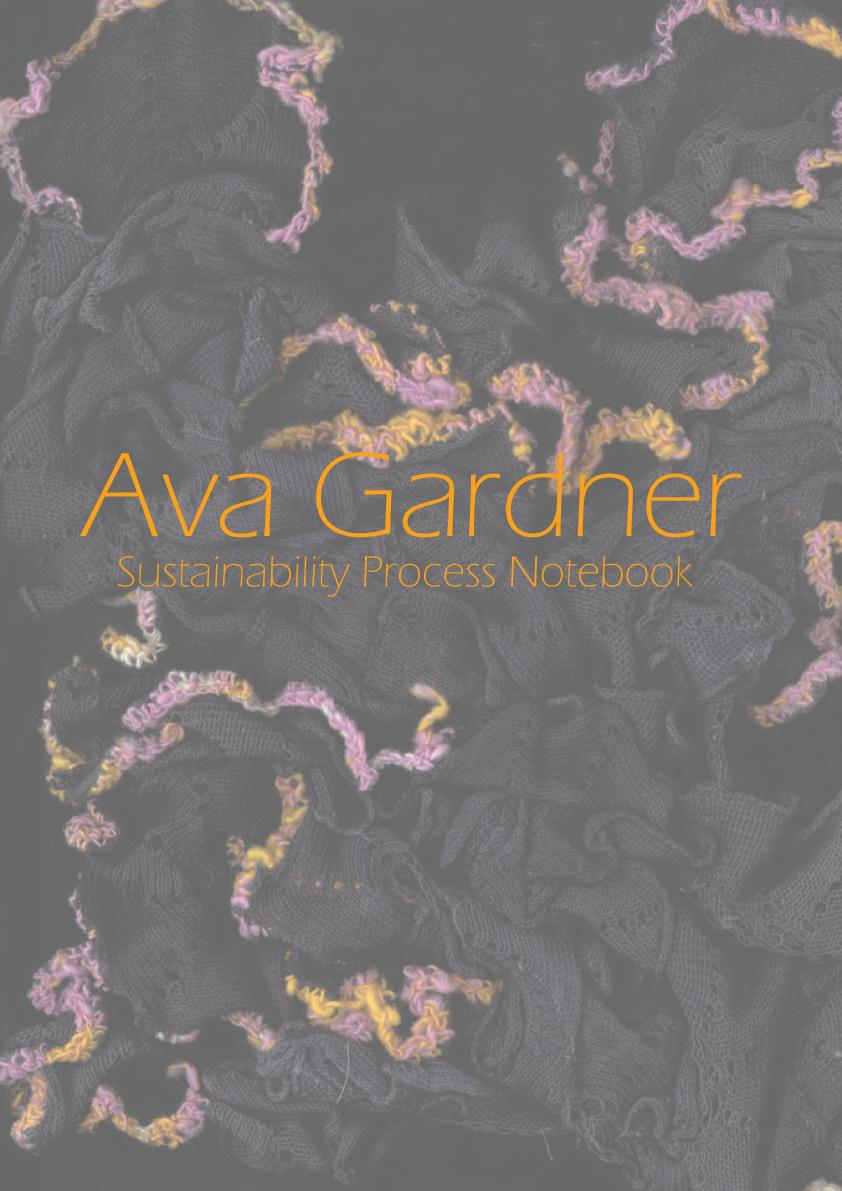

Background
The concept of my graduate collection is based on the principles of biomimicry. Biomimicry is a practice that takes inspiration from the innovative solutions found in nature and translates those principles into human engineering and design. By observing and emulating strategies that organisms use to solve challenges, biomimicry offers us a way to address issues that are comparable to those we face in modern society. The term itself, “biomimicry,” literally translates to the imitation of life or being.
One of the biggest benefits of utilising nature as a model for design and problem-solving is that, unlike human-engineered solutions, which frequently disturb or fail to cohabit happily with nature, natural systems function in harmony with their surroundings. By adopting biomimicry as a design philosophy, we can develop products, processes, and systems that address critical challenges, such as achieving sustainability and fostering harmony with life on earth.
Biomimicry is an approach to innovation that seeks sustainable solutions to human challenges by emulating nature’s time-tested patterns and strategies.
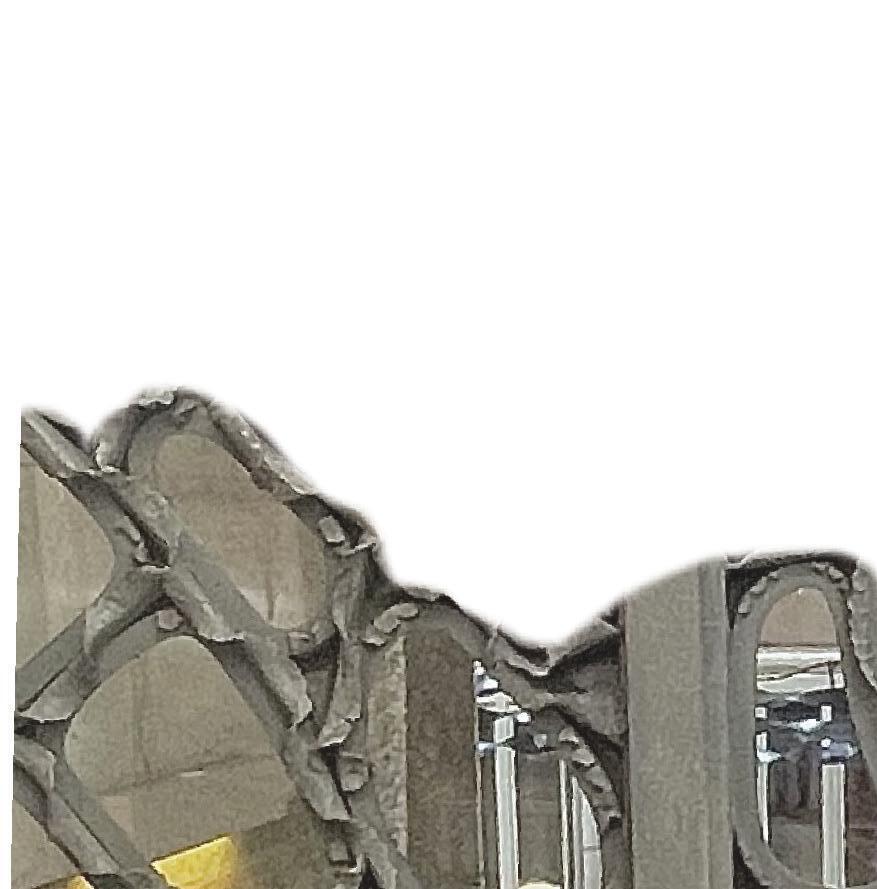
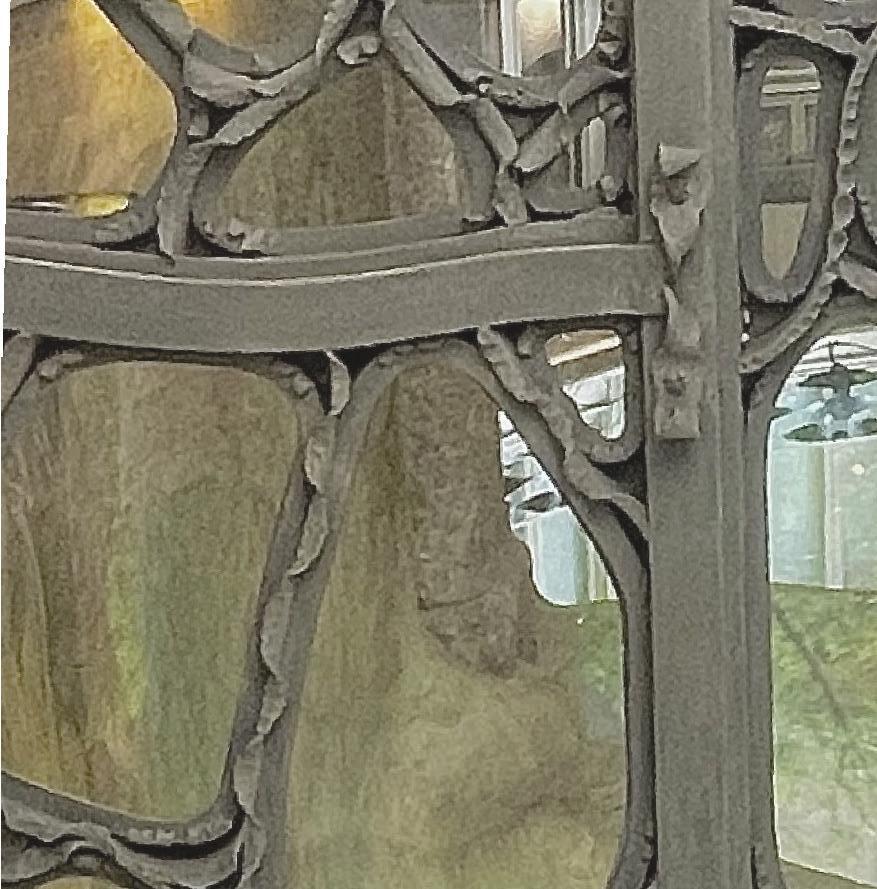
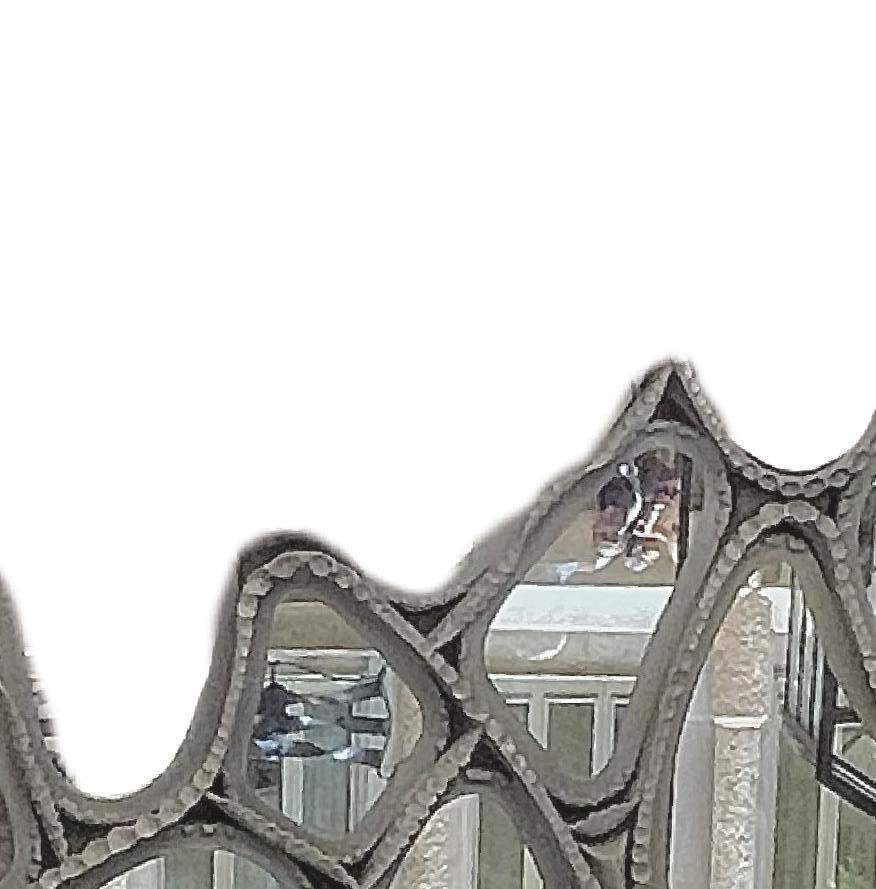
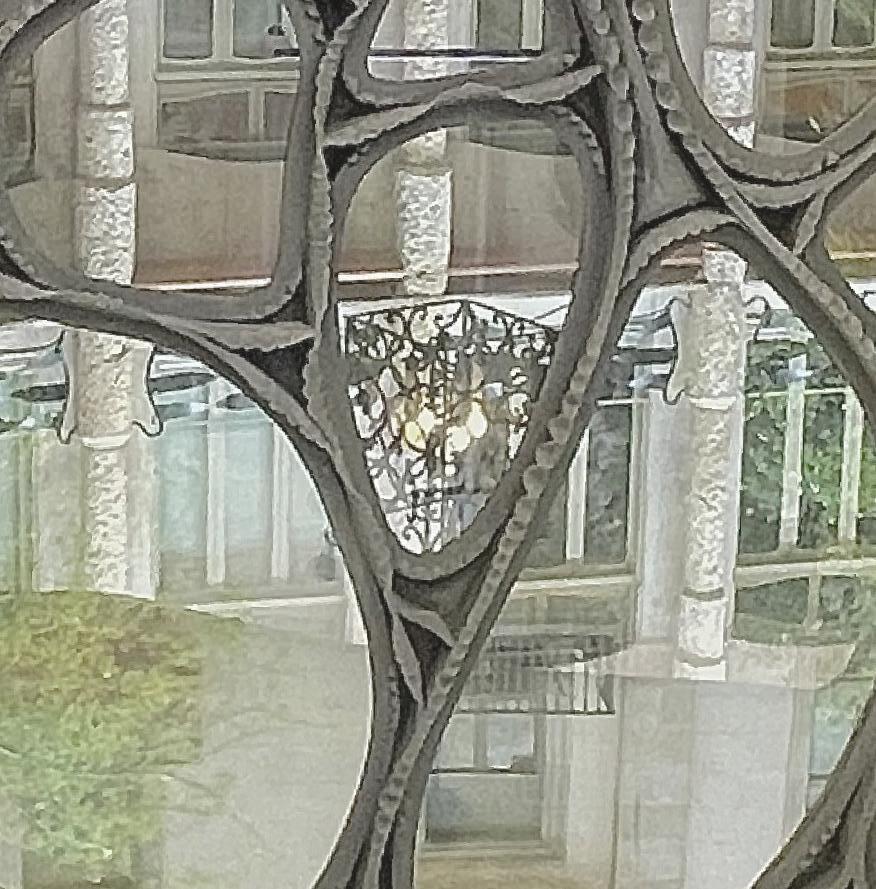
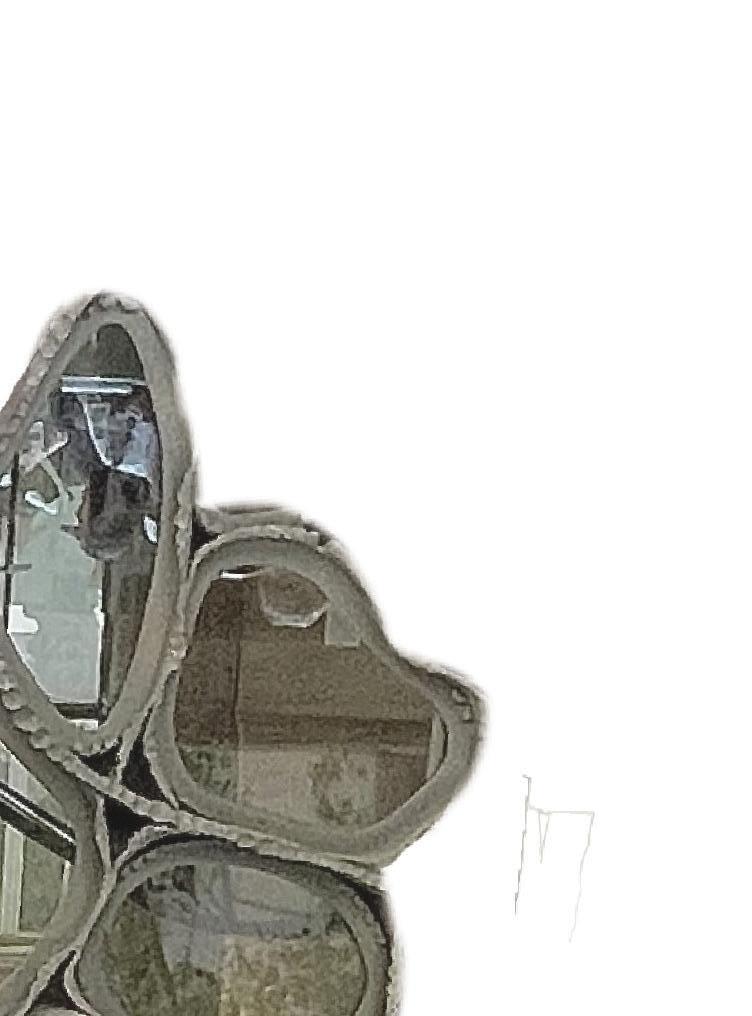
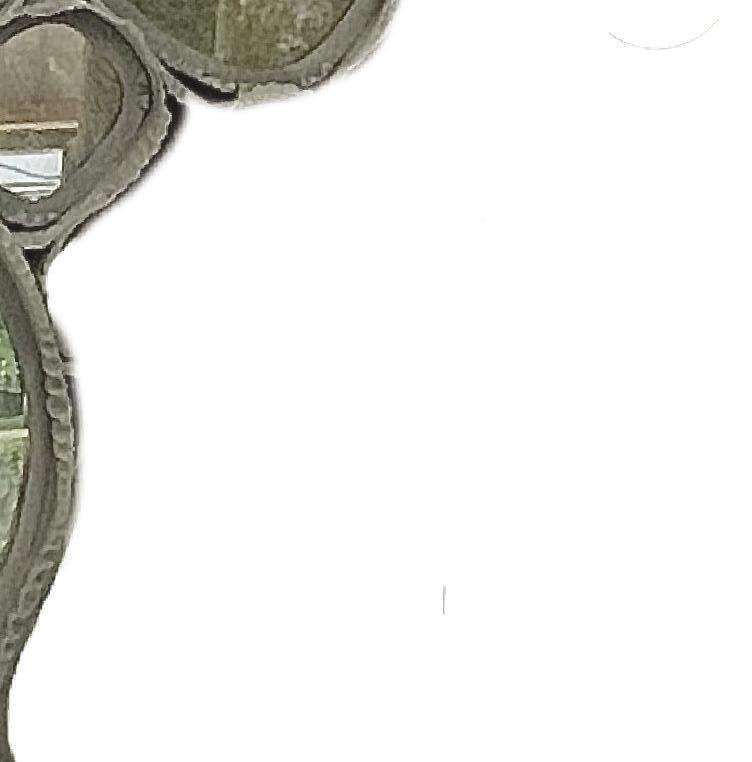
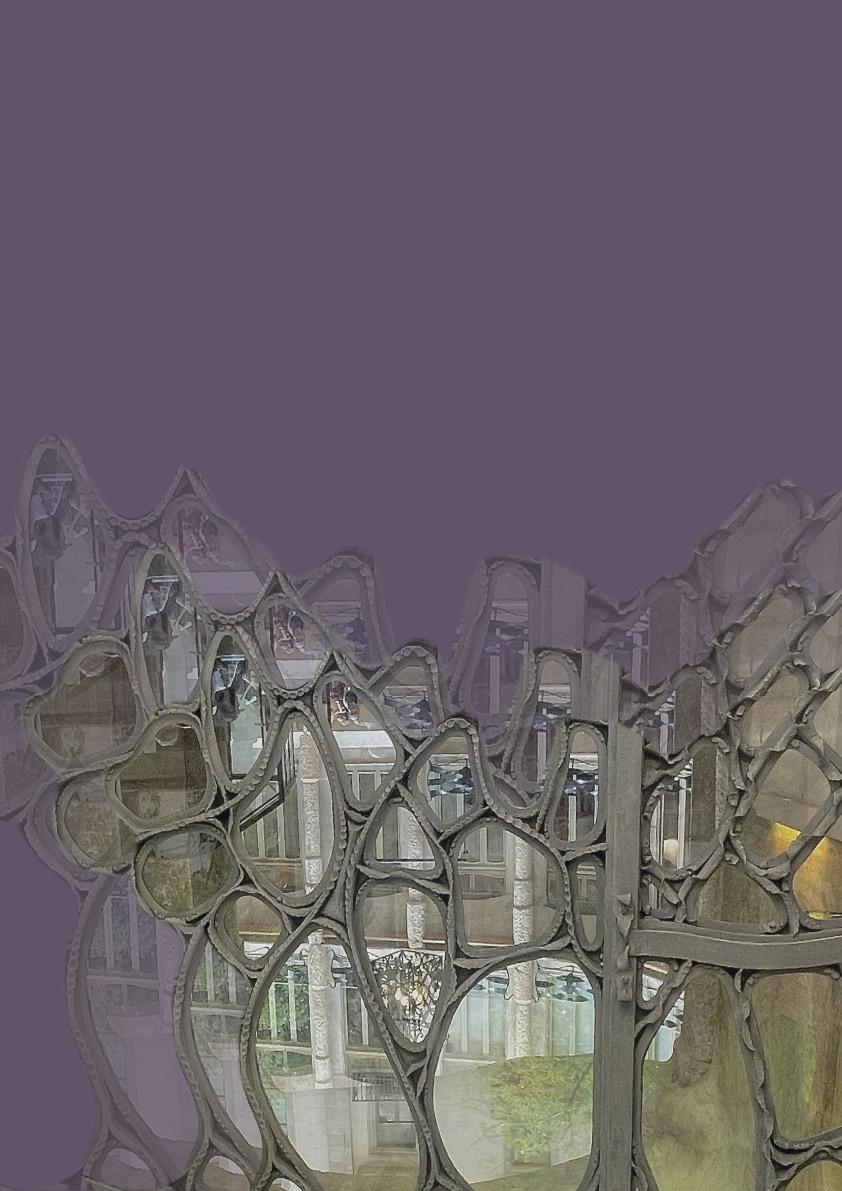


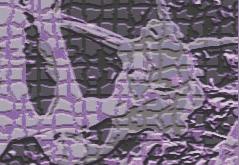
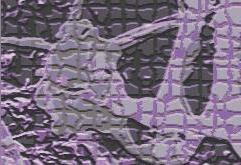

Gaudi and Biomimicry
My project concept started when I was exploring the different archaeological works around Barcelona. An artist whose work stood out to me was Antoni Gaudi, and his art helped me develop my ideas. Antoni Gaudi was a Catalan artist renowned for his unique and innovative designs that combined Gothic and Art Nouveau influences. His art is distinguished by organic shapes, bright colours, and complex details influenced by nature and religion. Some of Gaudi’s most famous projects are the Sagrada Familia, Casa Batllo, Casa Mila and Park Guell. Antoni Gaudi was a pioneer of biomimicry in architecture,drawing inspiration from nature to create organic, harmonious designs.

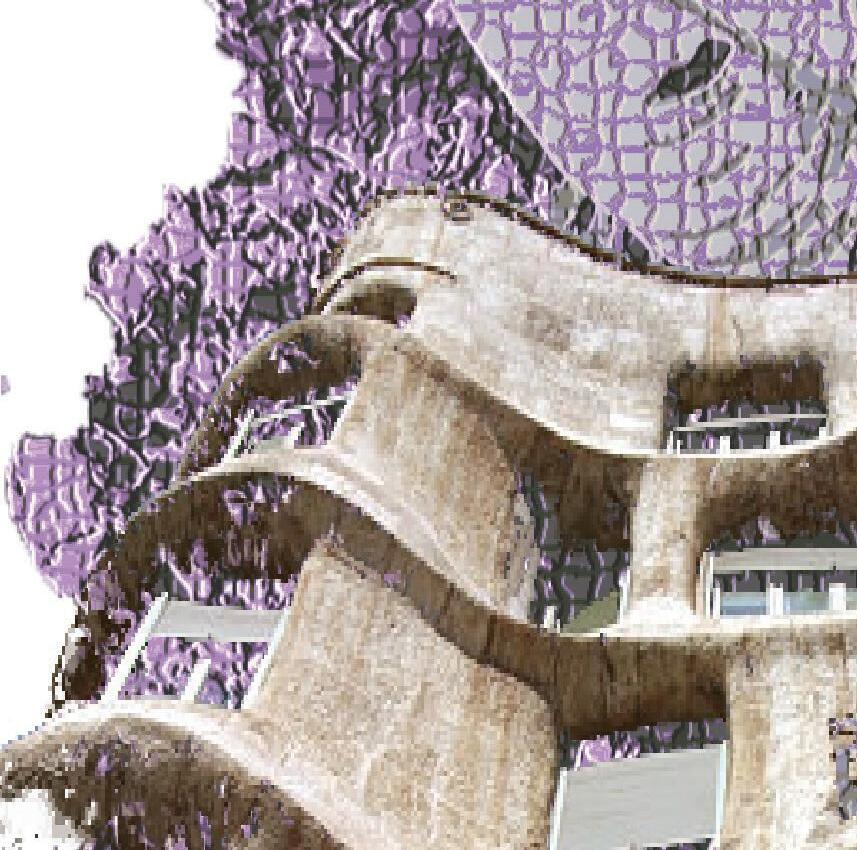
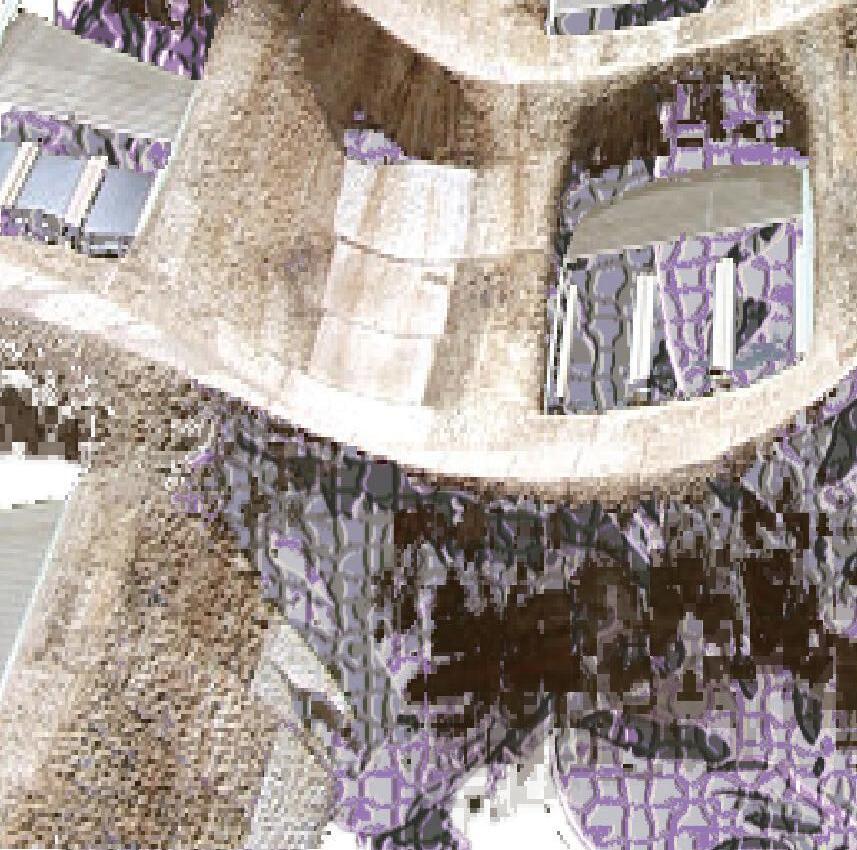
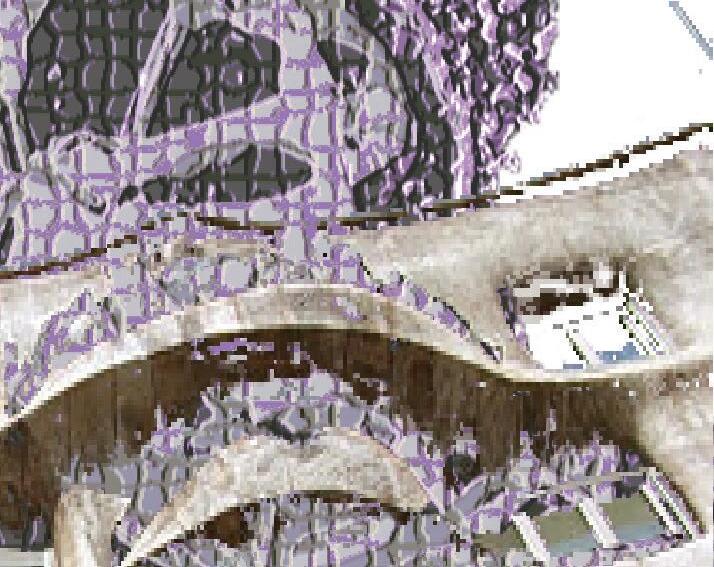
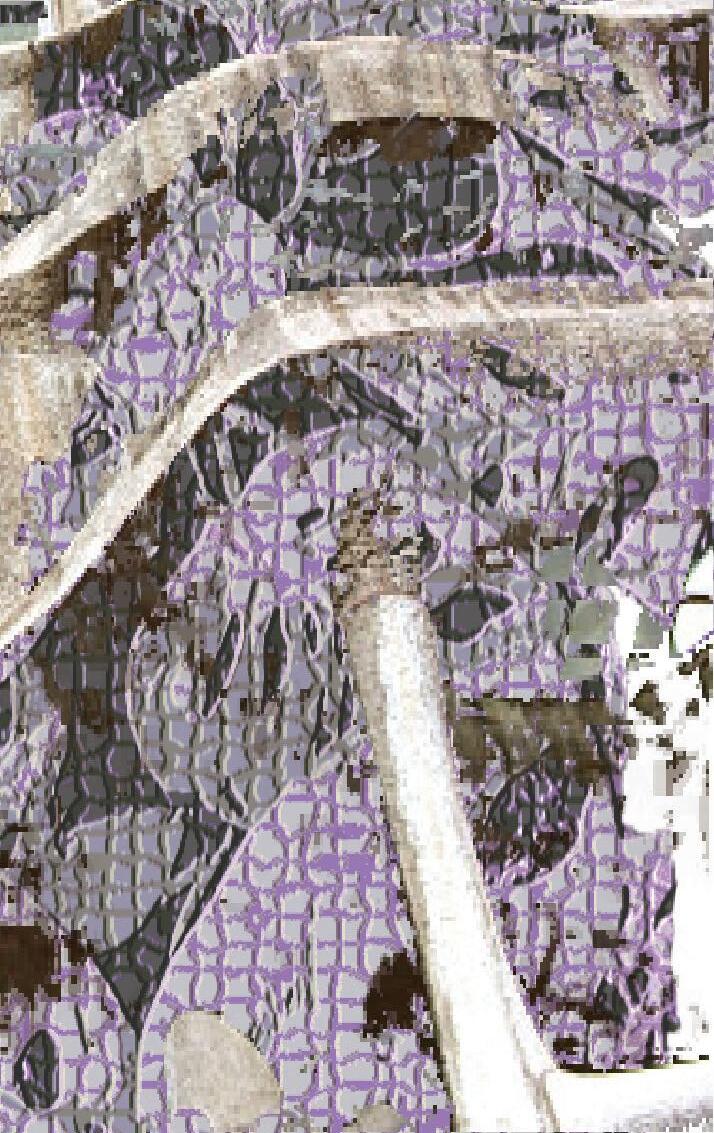

His structures mimic the forms, patterns and structural principles found in plants, animals and geological formations, blending aesthetics with functionality. His archaeological works combines manmade structures and the beauty of the natural world seamlessly
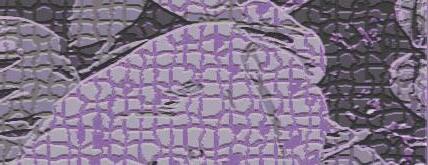
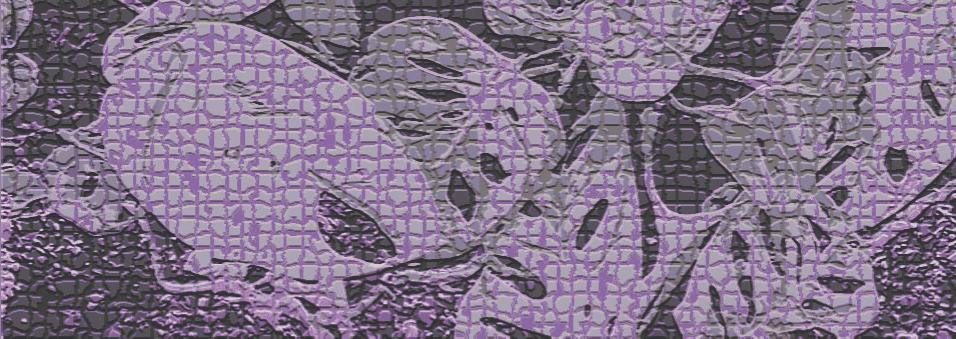
Gaudi and Biomimicry
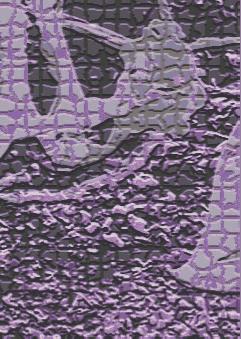
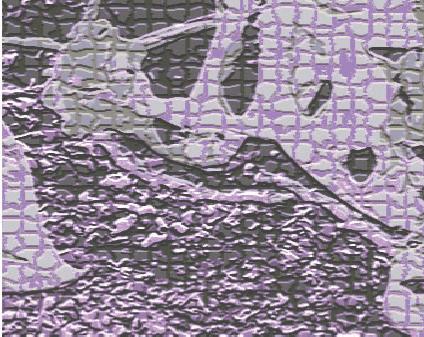
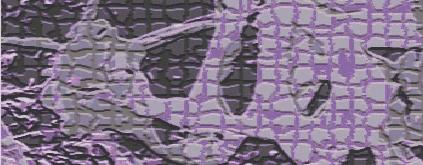
Some examples of how Gaudi integrated biomimicry practices into his work is in the Sagrada Familia, where tree like columns branch out to support the ceiling, resembling a forest canopy, this creates a natural ambience and also distributes weight efficiently Casa Mila features self-supporting stone walls inspired by honeycombs, ensuring both stability and openness. Park Guell incorporates rock formations that seamless integrate with the natural landscape, mirroring the curves and structures found in the surrounding environment.
Casa Batllo’s exterior resembles the surface of a tranquil; sea with it undulating forms and iridescent blue and green tiles mimicking the movement of water. The balconies, shaped like skeletal remains, resemble fish gills or the bones of marine creatures. Gaudí’s use of biomimicry was not just artistic but also highly functional, making his buildings more durable, energy-efficient, and structurally sound. His nature-inspired approach continues to influence modern architects and designers, proving that nature is the best engineer
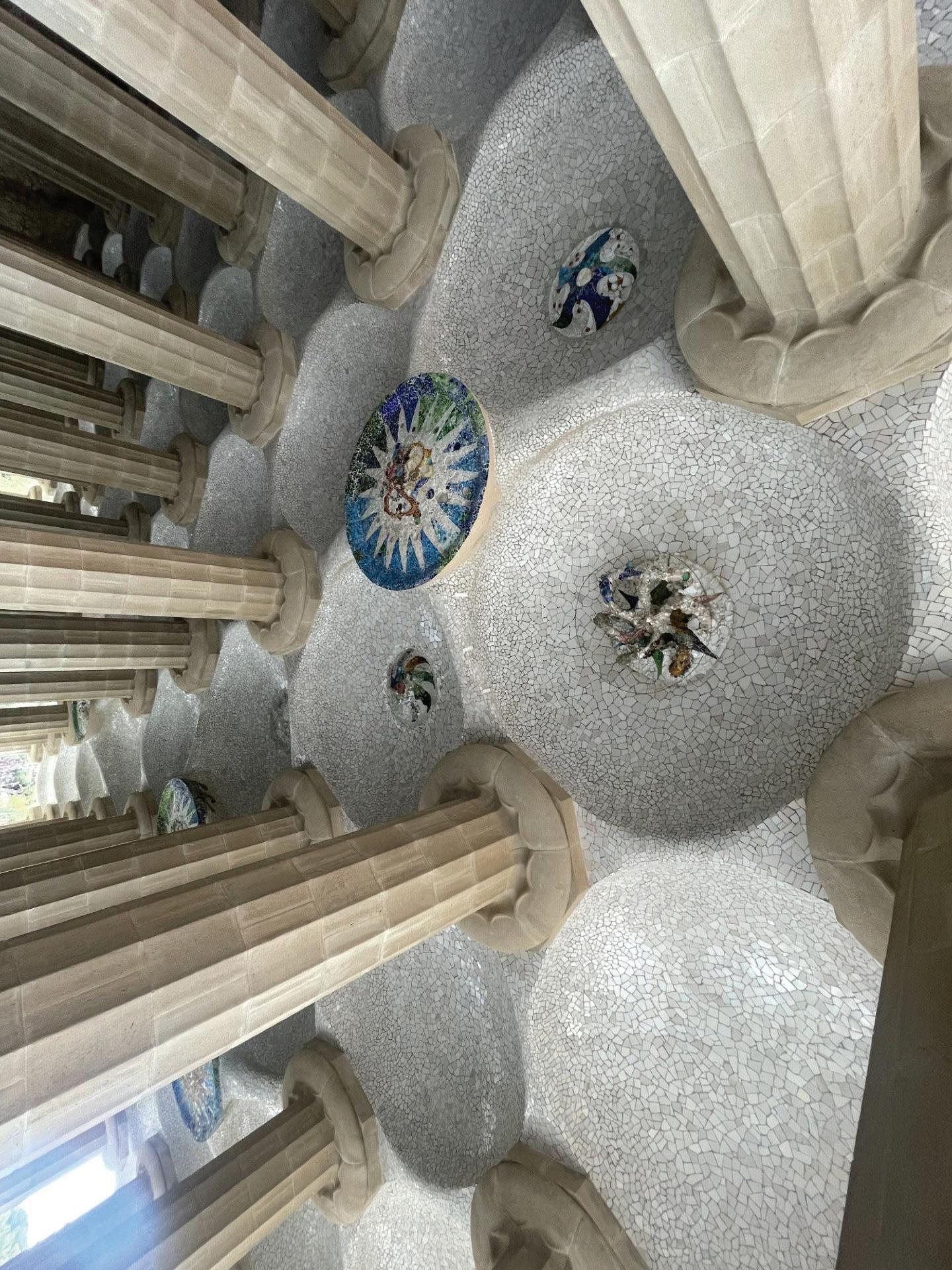
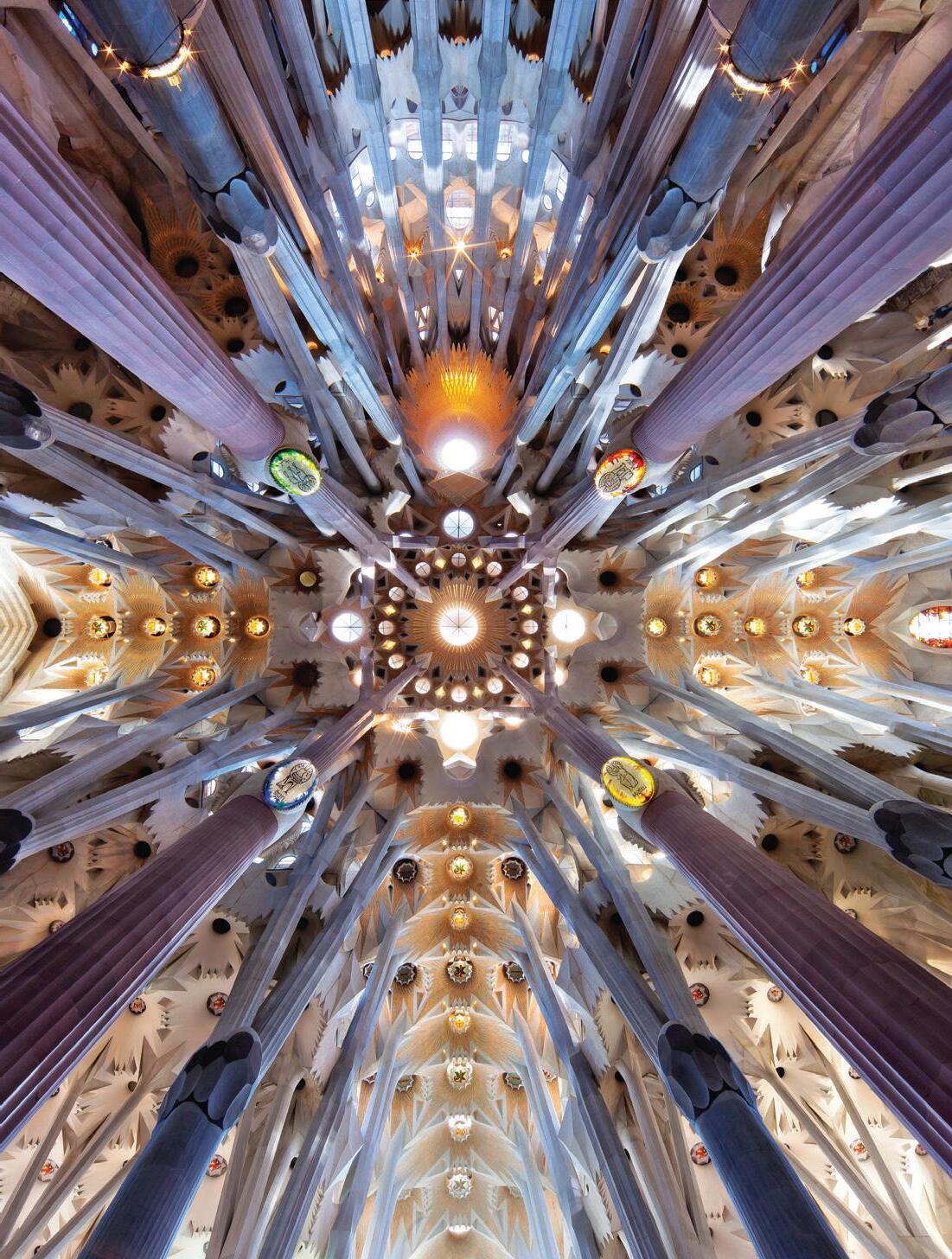
Biomimicry as a Design Tool
Nature is a common source of aesthetic inspiration for fashion designers. While colours and patterns may directly inspire palettes and motifs, the appearance of organisms can influence the shapes, contours, and textures of designs.
Designers can use biomimicry to create innovative materials and textiles by studying natural fibres like spider silk, lotus leaves and shark skin to create fabrics that are lightweight, durable or water repellent.
We can construct garments that mimic natural forms, adaptive clothing that responds to environmental conditions. We can use natural pigments found in nature or create coloration without dyes by studying microscopic structures that reflect light. Many natural systems operate in closed loops where “waste” is a resource.
Fashion inspired by these cycles can use circular design principles — creating clothing meant to be repaired, composted, or endlessly recycled, just like organic matter in an ecosystem
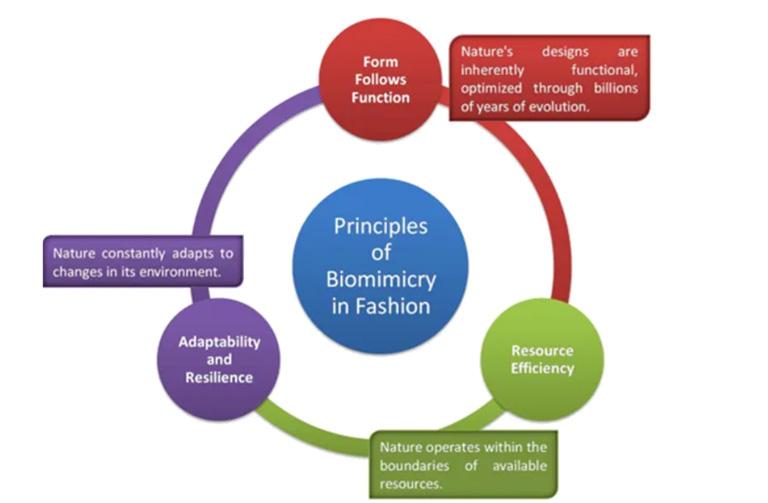
Biomimicry and the Circular Economy
The natural world has provided us with the building blocks for human design. Techniques such as structural strength, material recycling, self-cleaning, self-repair, and energy conservation have inspired humans for thousands of years The circular economy aims to address these detrimental effects, which include the emission of toxic materials and greenhouse gases, structural waste, and contamination of the air, land, and water. Circulating goods and materials is the second principle, which emphasises maintaining their worth. Designing for durability, reuse, remanufacturing, and recycling ensures that items, components, and materials remain in circulation within the economy. In particular bio-based products are effectively employed to cycle between natural ecosystems and economic systems. By preventing the depletion of non-renewable resources and guaranteeing the sustainability of renewable resources, a circular economy also actively works to save and enhance the environment. In addition to prioritising the use of renewable energy over fossil fuels, which contribute to environmental decline, it encourages the return of important nutrients to the earth to stimulate regeneration.
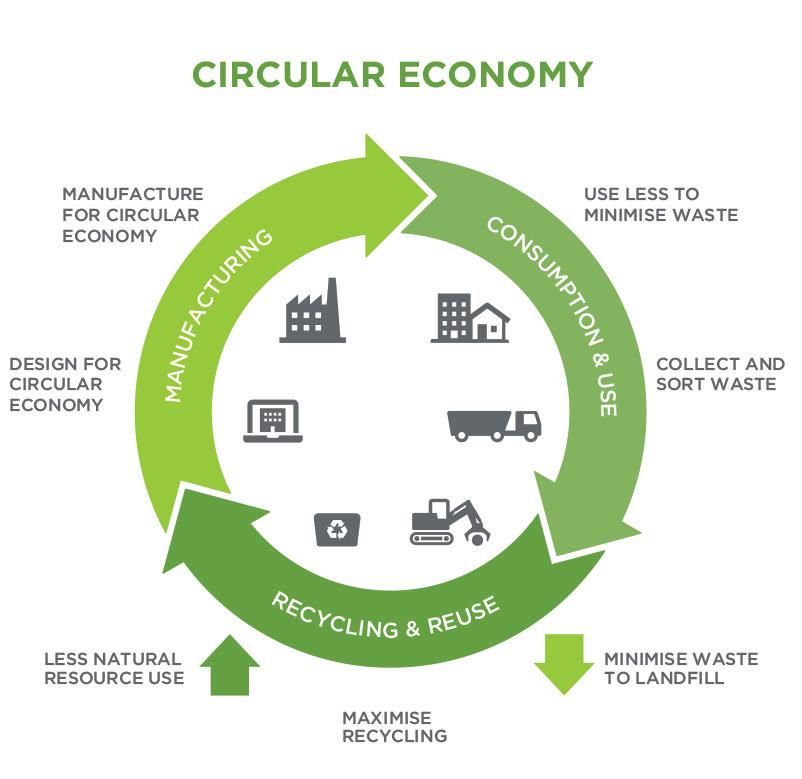
Application of Biomimicry
My research on biomimicry is within the context of sustainability in the fashion industry, exploring how natural design solutions can help combat the escalating environmental impact caused by this sector.
Werewool is a biotechnology firm that uses biomimicry to create sustainable fibres that do not require chemical dyes. Werewool is using innovative research to create a solution to the chemical dye problem while also reducing the amounts of water waste that traditional dyeing requires. Werewool creates fibres with colours incorporated into their molecular structure rather than depending on traditional dyeing methods. This method draws inspiration from the way that some natural creatures, such as coral and jellyfish, create colour using their proteins rather than pigments or dyes. This innovative company’s biomimetic method tackles two important difficulties in the fashion industry: the environmental harm caused by synthetic chemical dyes and the problem of fabrics remaining in landfills.
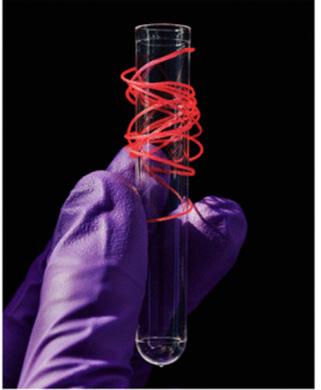
Ananas Anam founded the company Pinatex, which uses pineapple leaves to create a plantbased leather substitute. The leaves are considered a waste product of pineapple harvest, so Pinatex is also adopting a zero-waste method to creating this sustainable textile. The product is inspired by the strength and durability of pineapple leaf fibres. Traditional leather is known for its durability and strength, but it also contributes to a very environmentally damaging type of production. Pinatex is a great example of biomimicry, taking an agricultural waste byproduct, and making an environmentally friendly product inspired by the source.
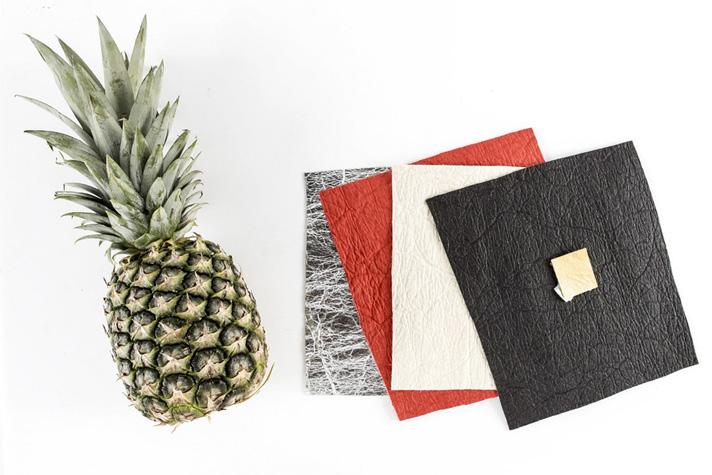
AMSilk is a company based in Germany, and it is one of the world’s first industrial suppliers of biotech-produced materials that are based on silk proteins. AMSilk uses biotechnology to produce bioengineered spider silk fibres. Their process utilises microbial fermentation, a technique that replicates the natural silk production of spiders by using genetically engineered bacteria. To make this bioengineered silk, the scientists isolate the DNA sequences that are responsible for the spider silk production and introduce those genes into microorganisms that then produce the silk proteins. These proteins are harvested and spun into yarn, creating a fibre that retains the properties of spider silk while being suitable for industrial use. The resulting product has qualities such as being five times stronger than steel by weight, combined with elasticity and a lightweight structure. This biomimetic approach exemplifies how scientific understanding of natural systems can lead to sustainable innovations.
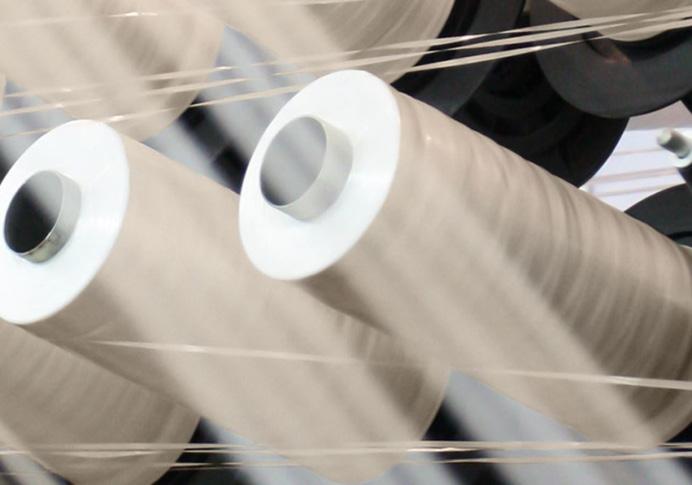
I used the research I gathered on Antoni Gaudi, biomimicry and circular design to create a collection that was deep rooted with sustainable ideologies. Using Antoni Gaudi as a primary source, for his aesthetics and biomimicry principles. Broadening my knowledge on how to create something completely circular. I created a collection that was an intersection of manmade and the natural world.
A Symbiosis of human design and nature
My collection incorporated natural dying, modular designs, regenerated fibres, designing for biodegradability and zerowaste construction. This variety of techniques all helped both my design work and the message behind my collection, both aesthetically and functionally.


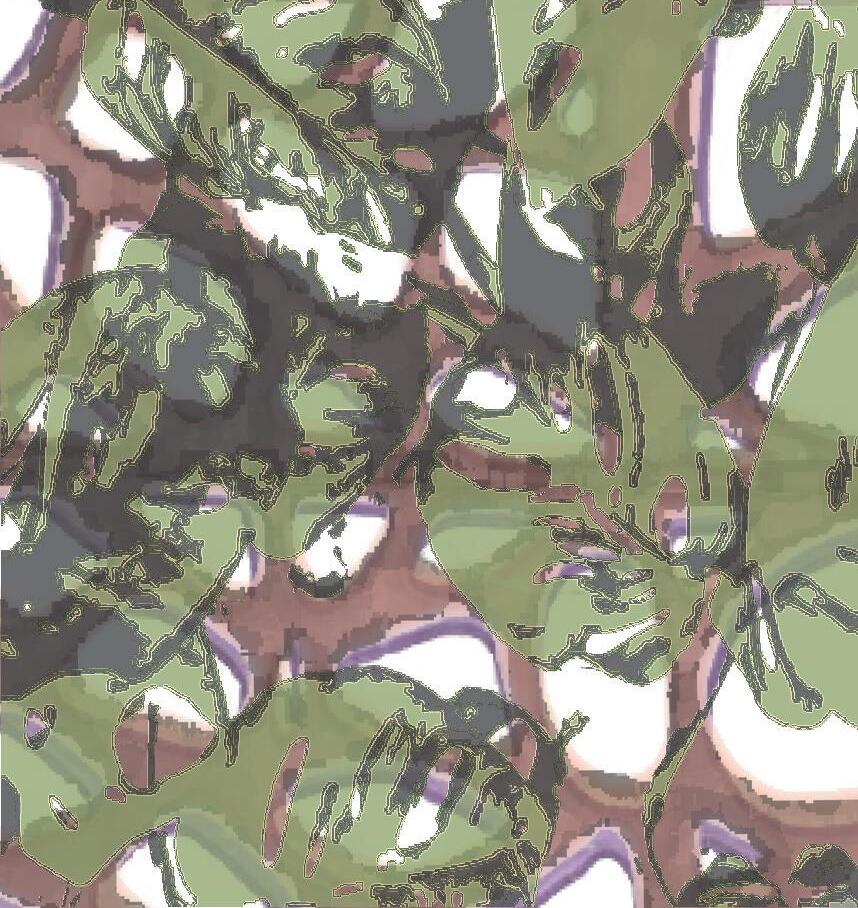
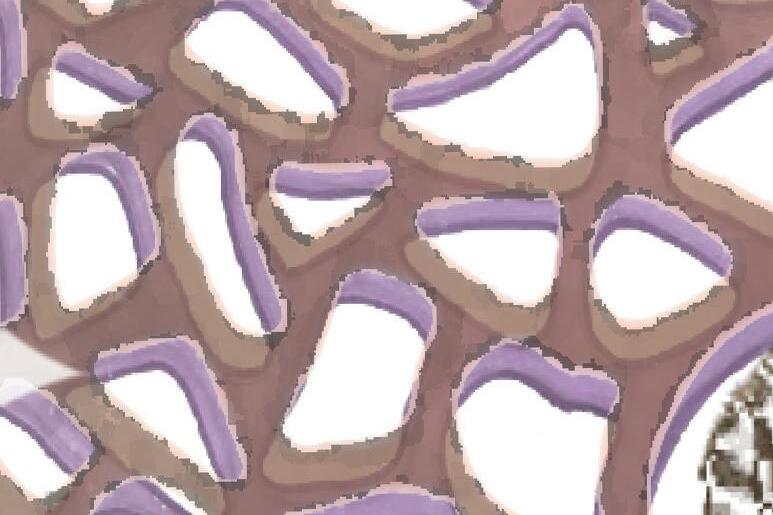
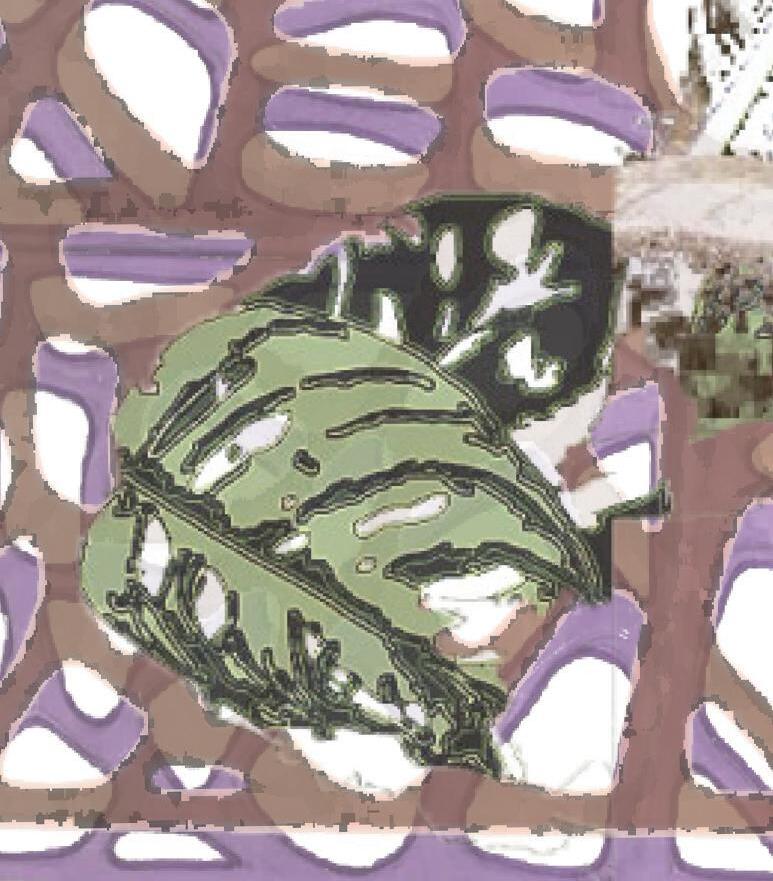

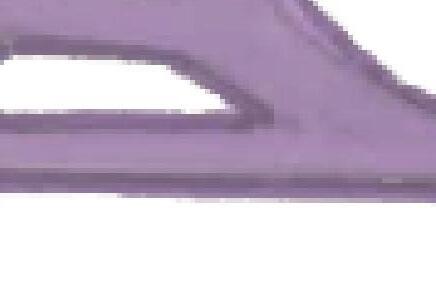






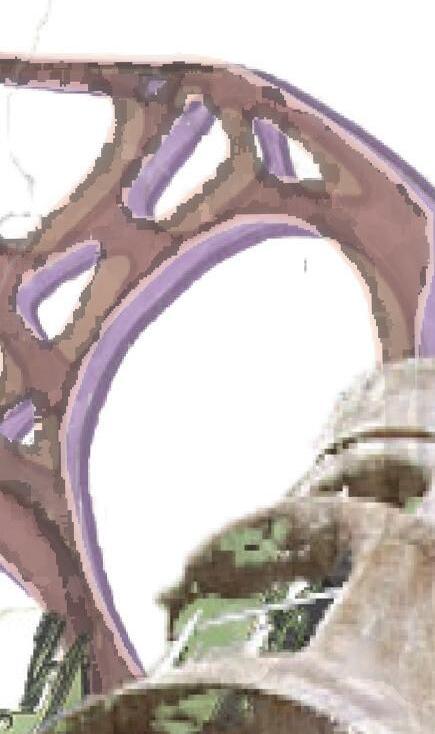
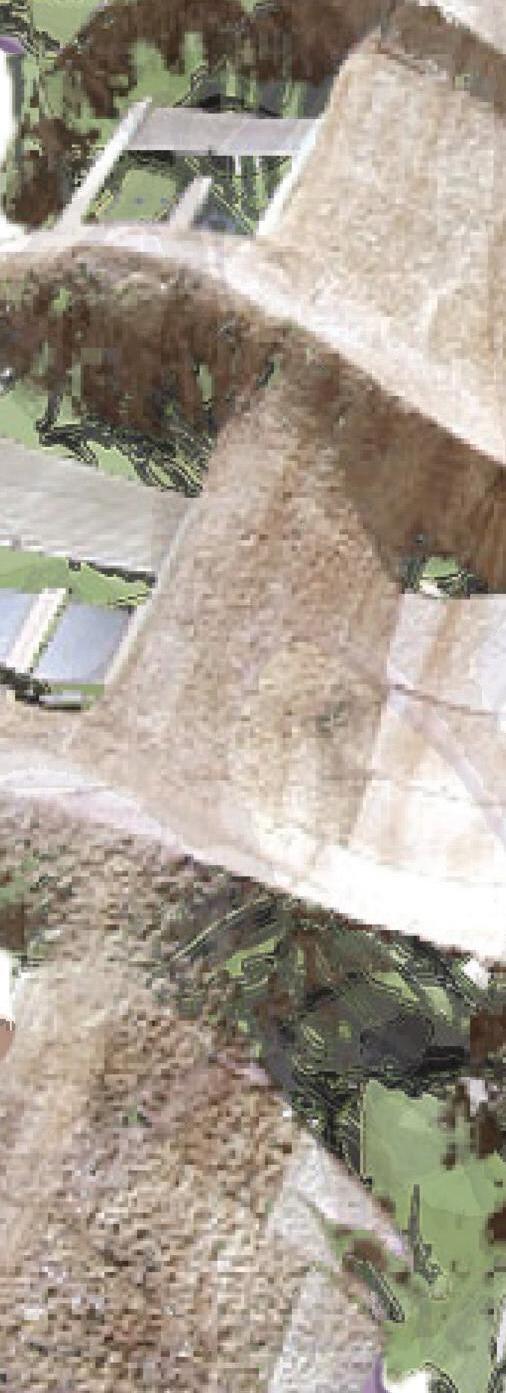
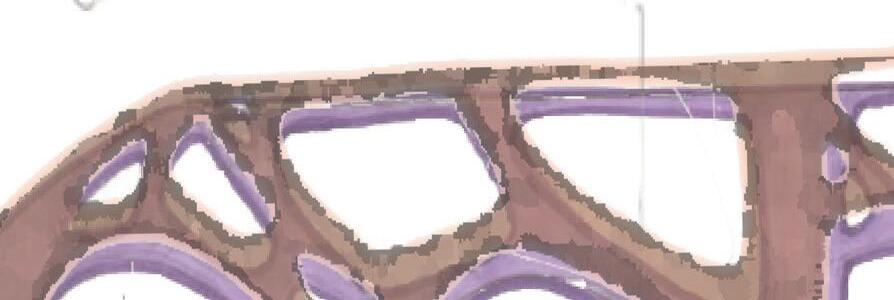
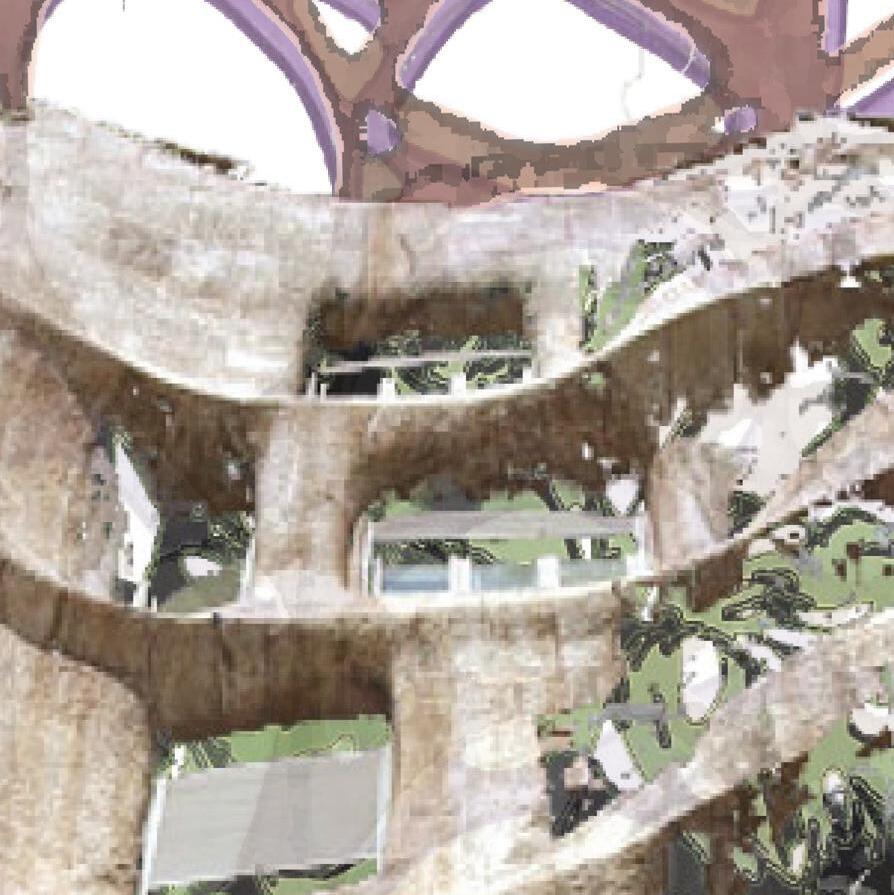
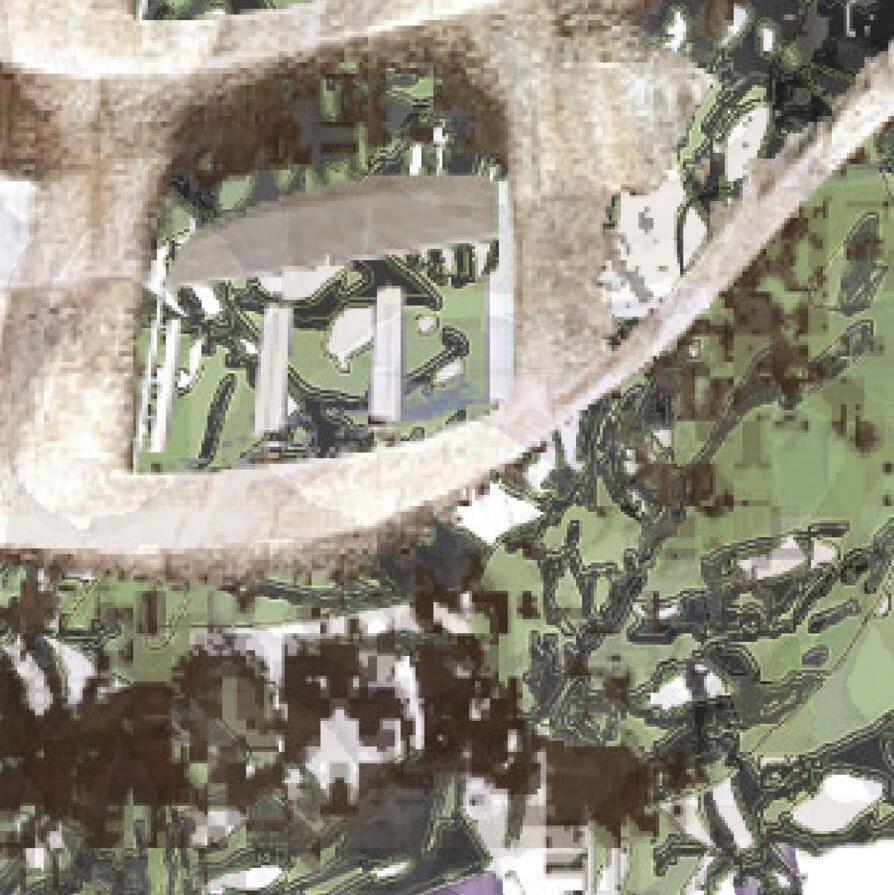




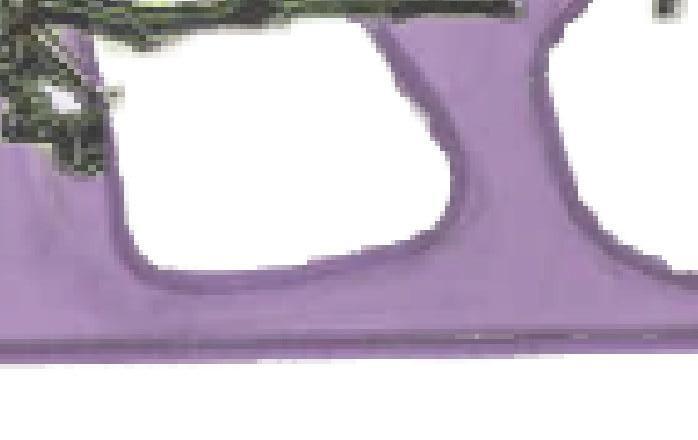
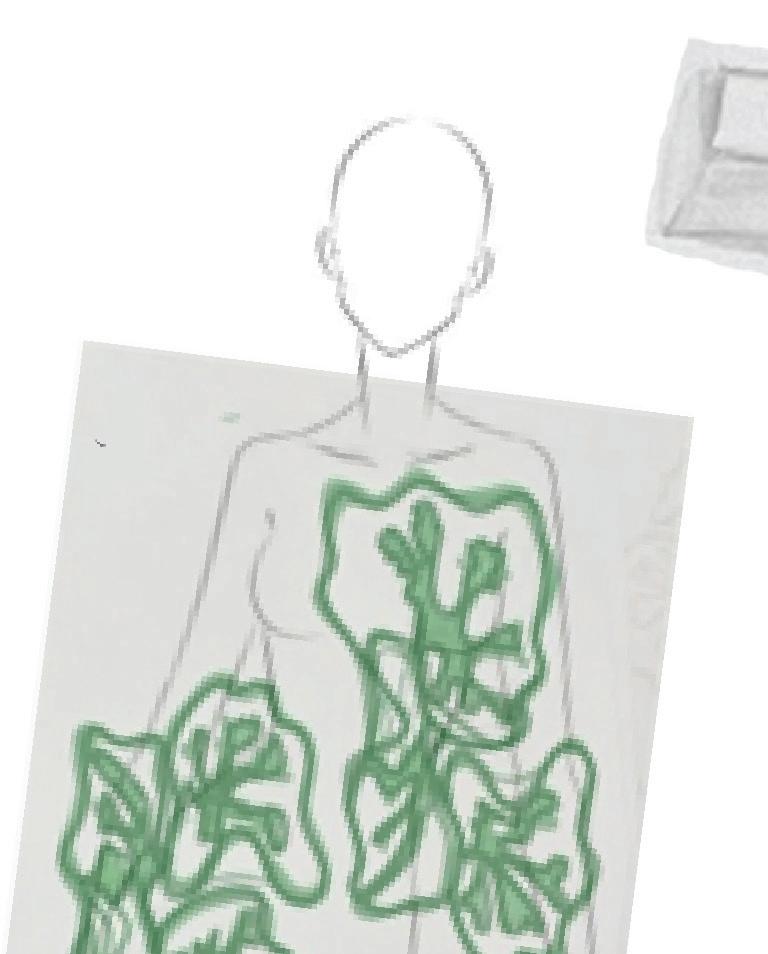
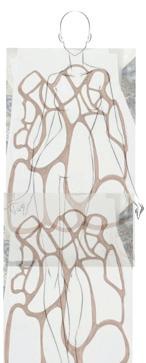
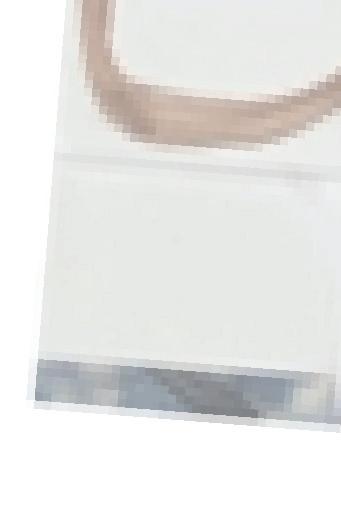



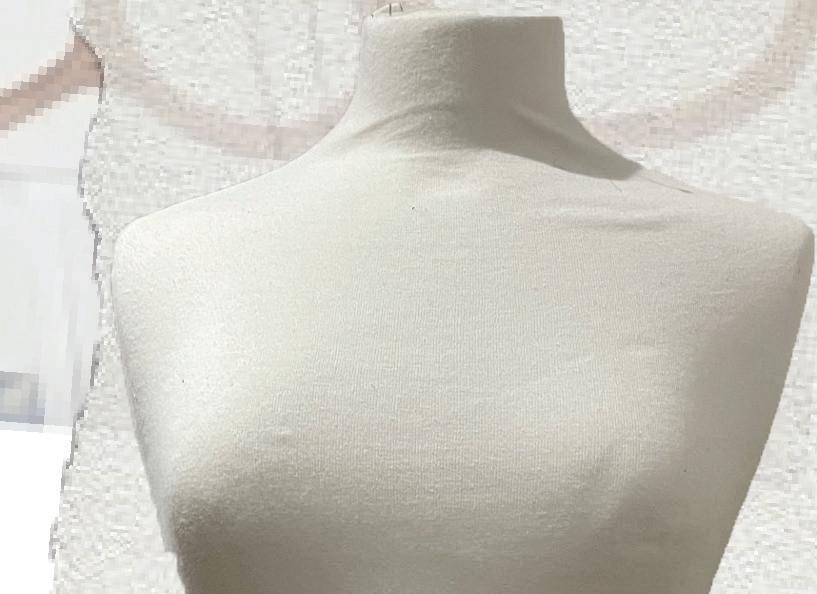
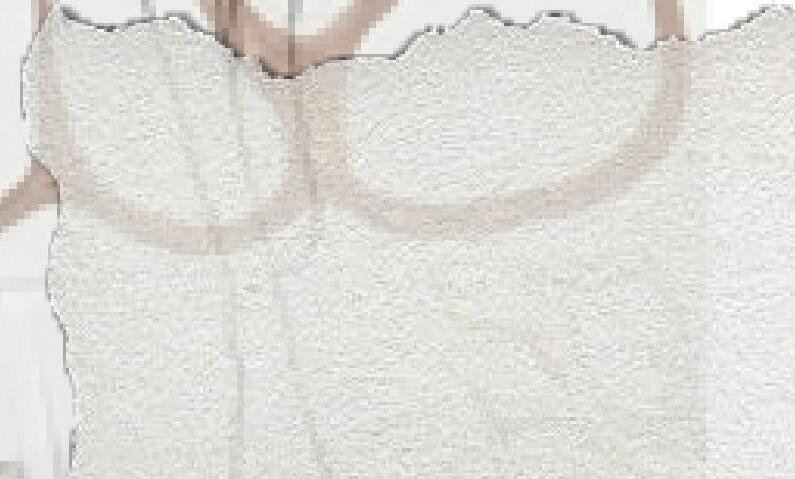
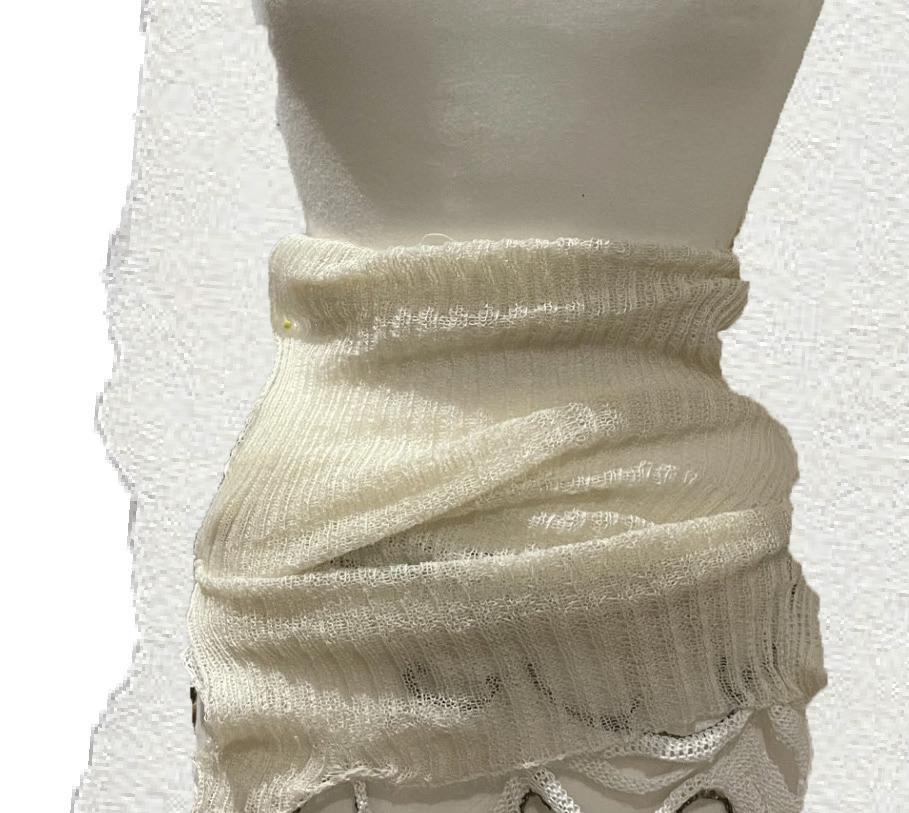

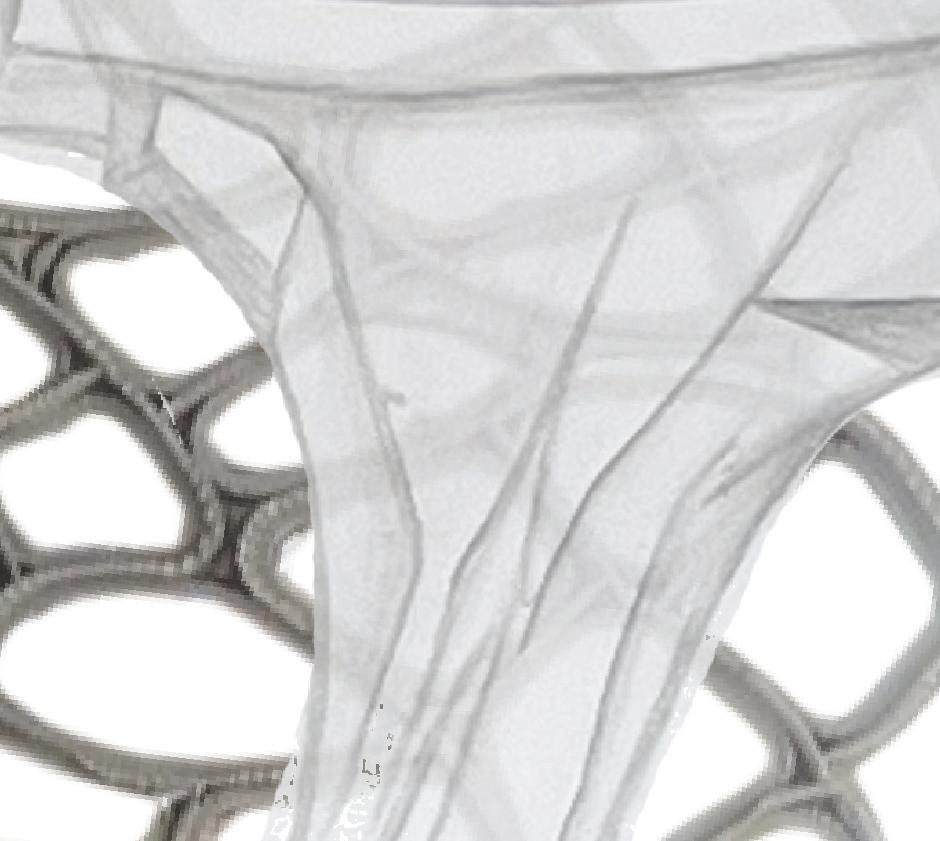
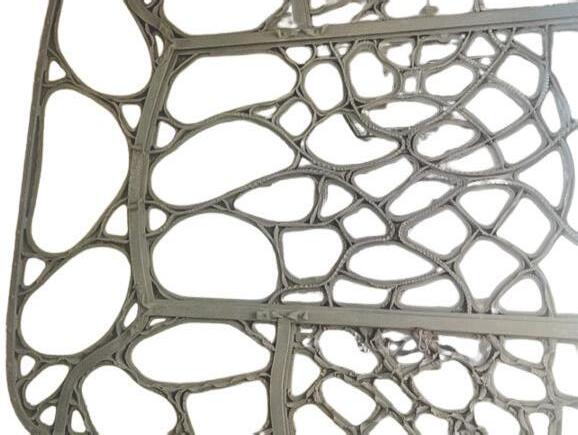

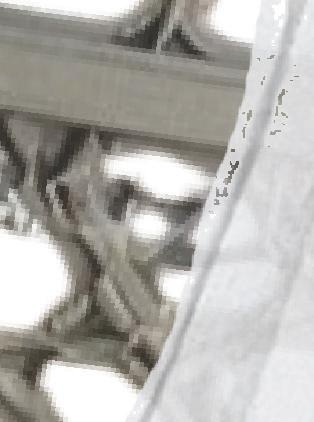
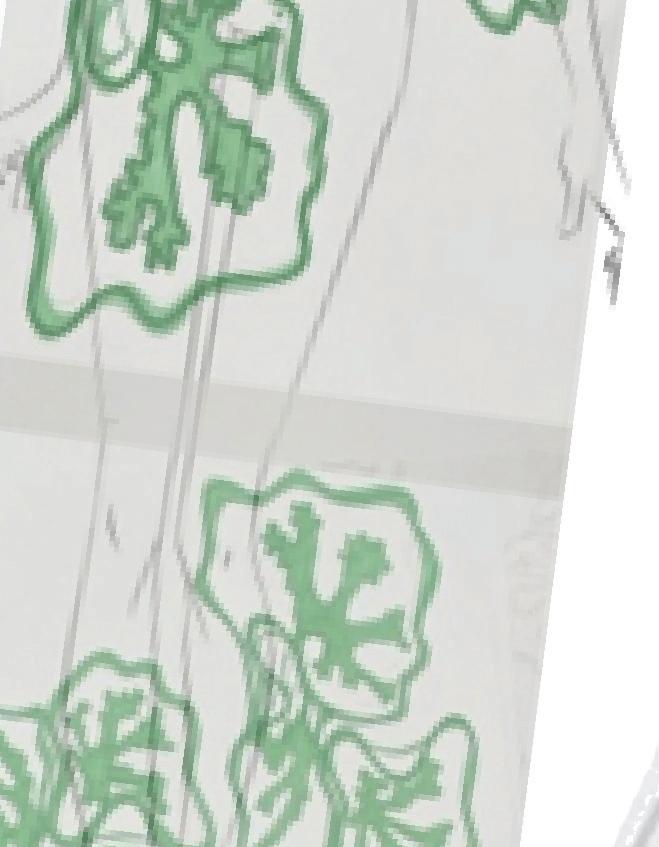



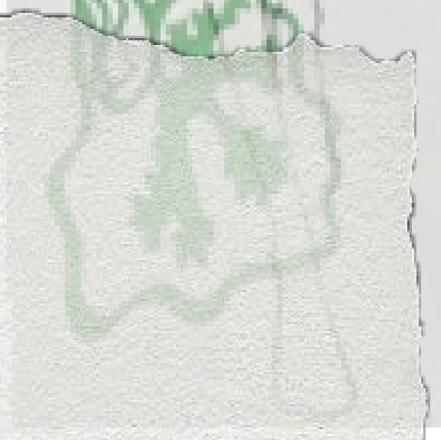

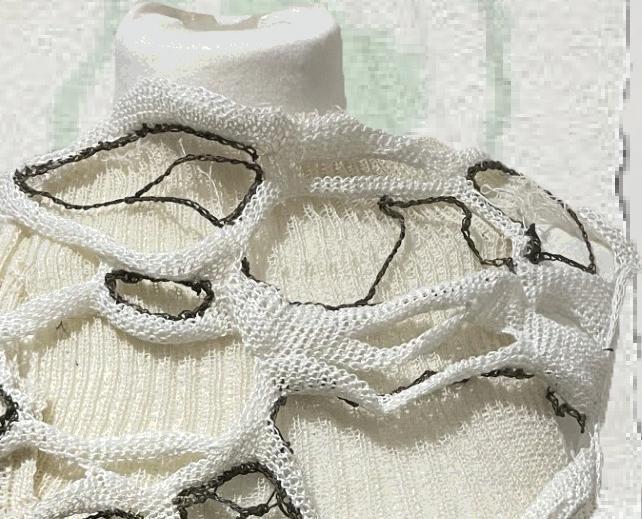
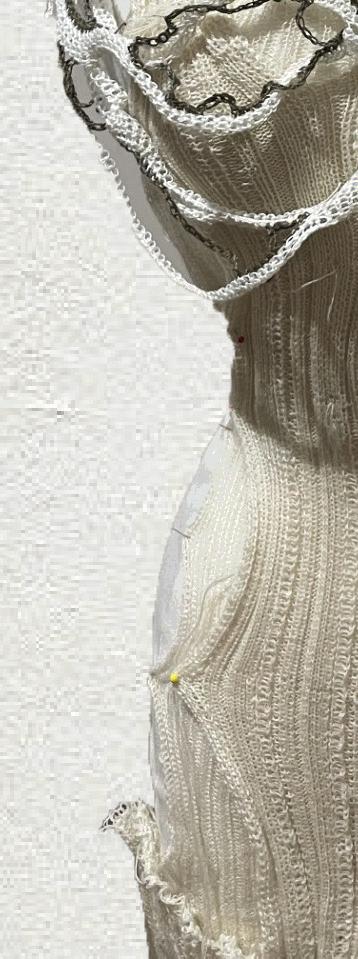
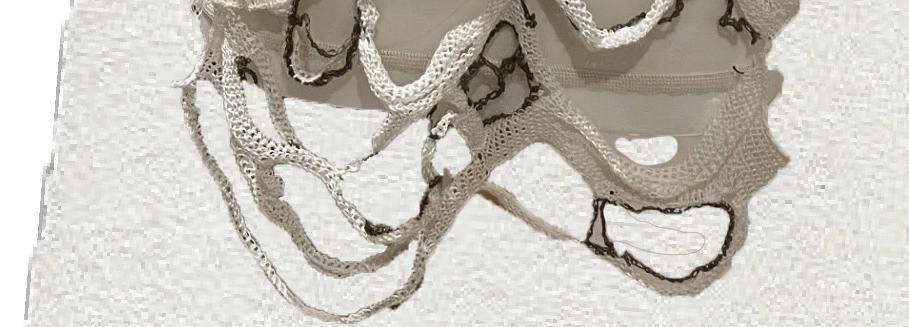
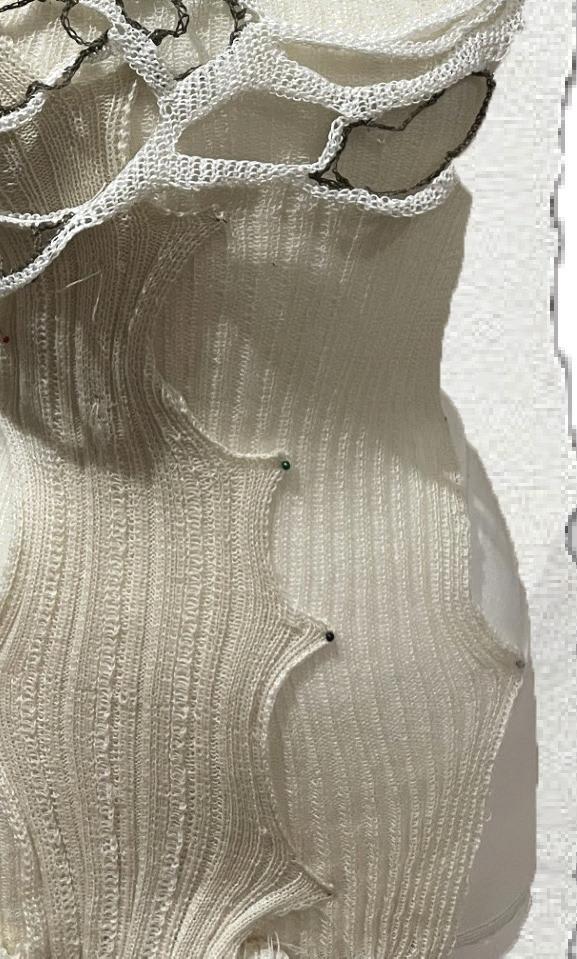

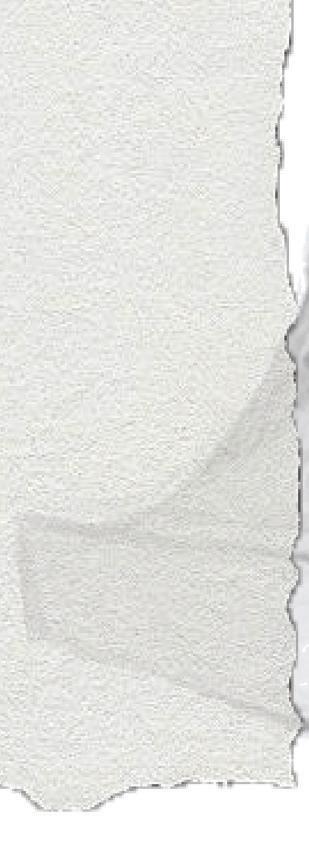
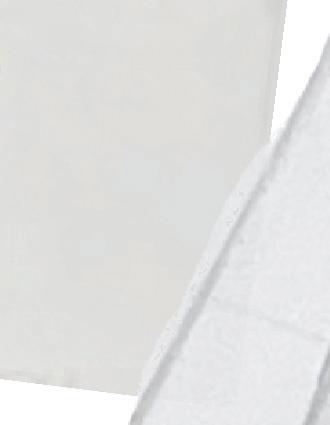
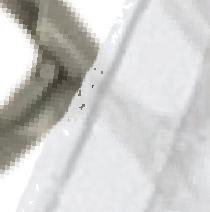






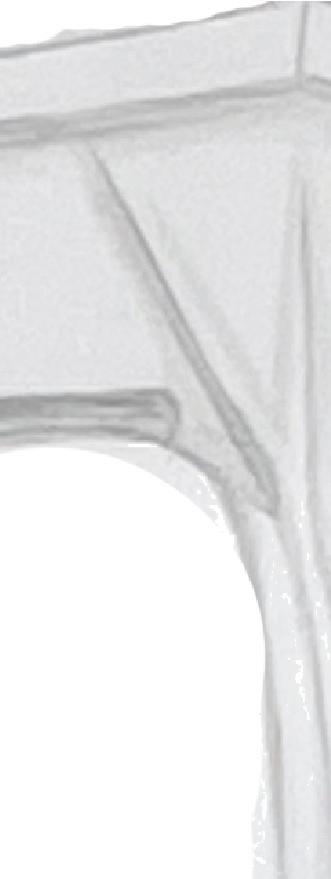
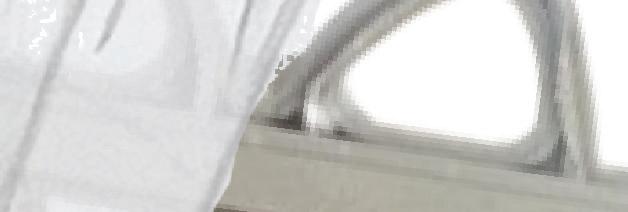
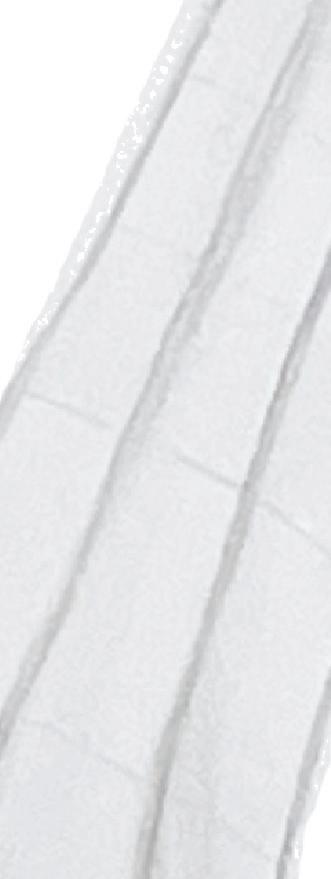



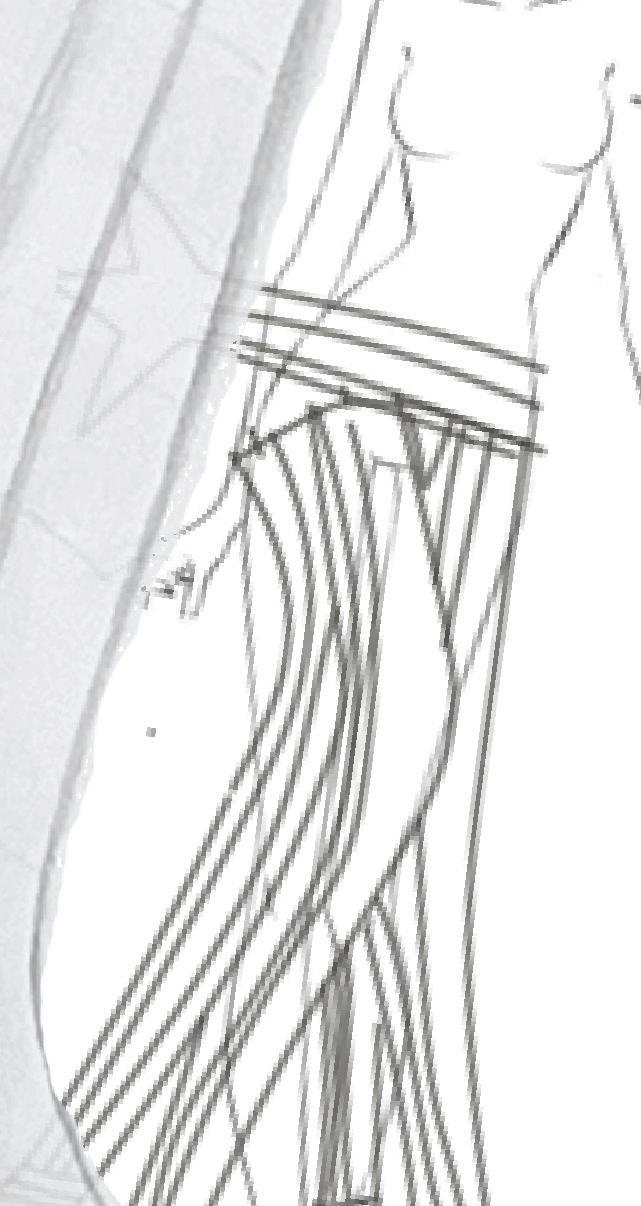


Process
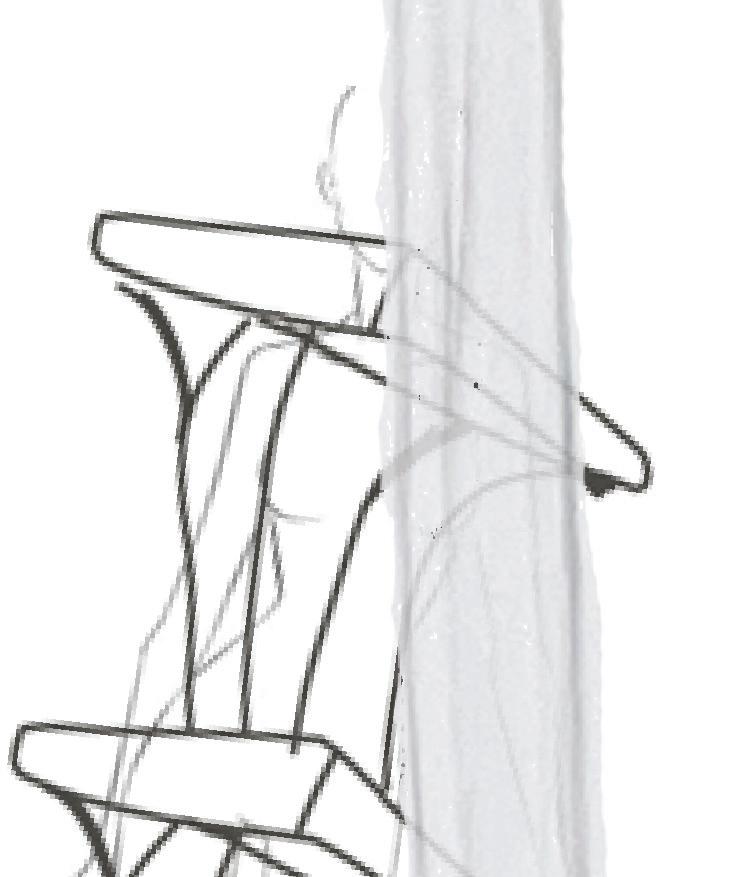
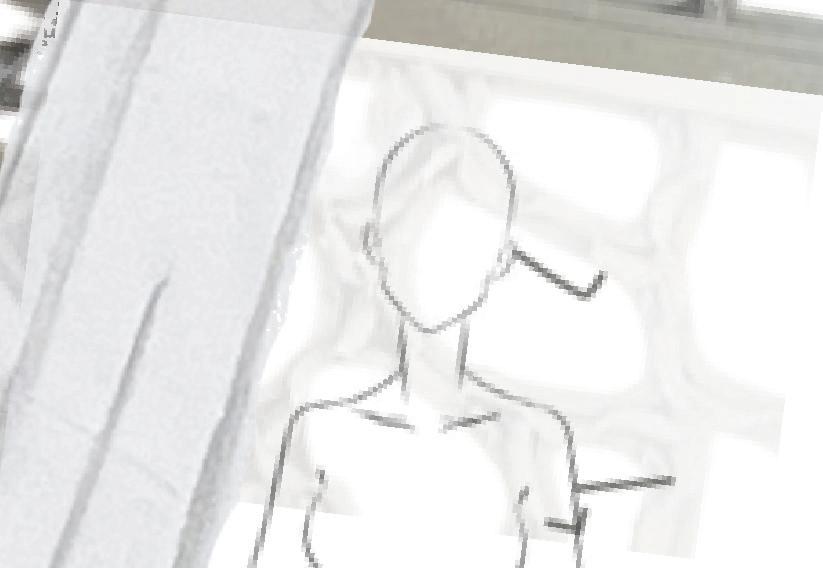
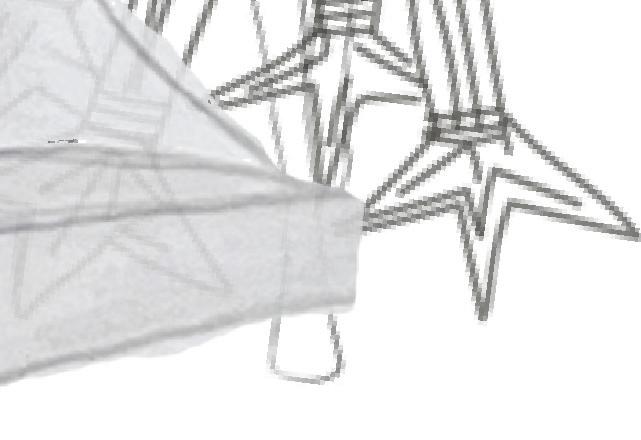
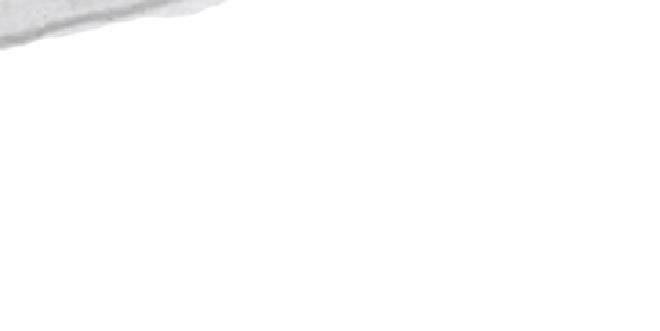







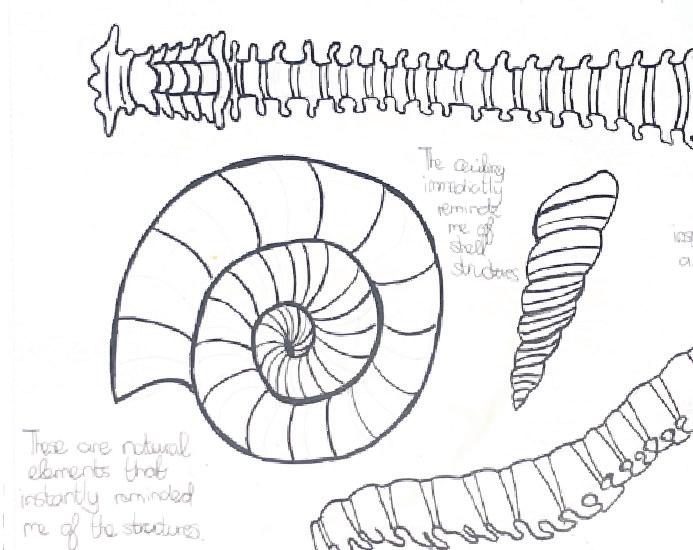
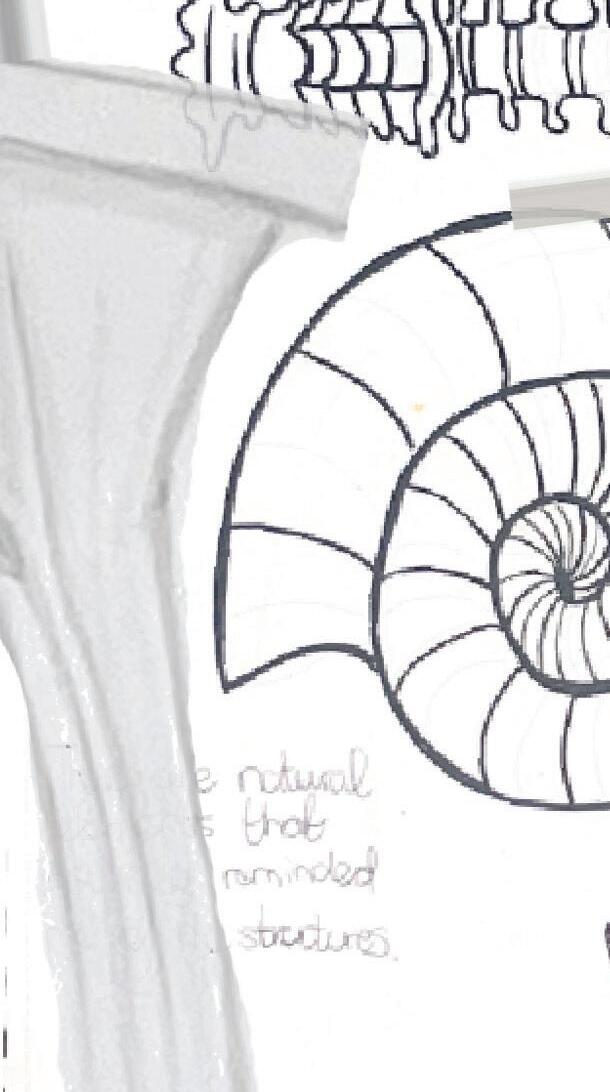
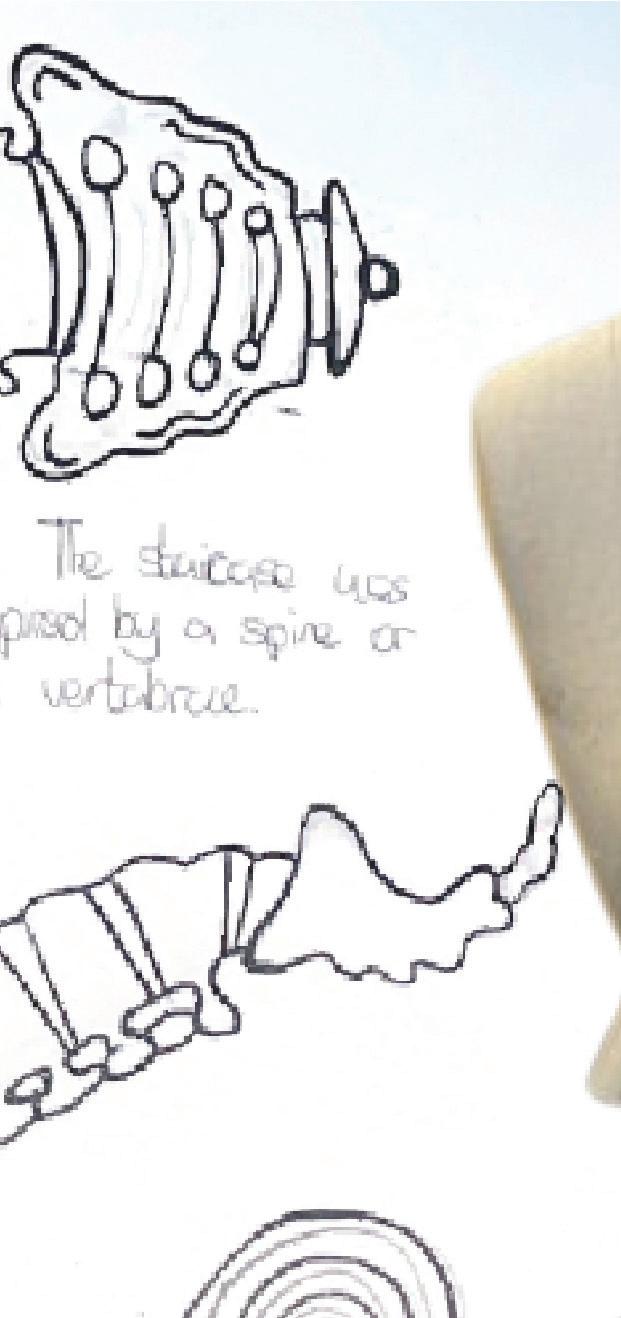

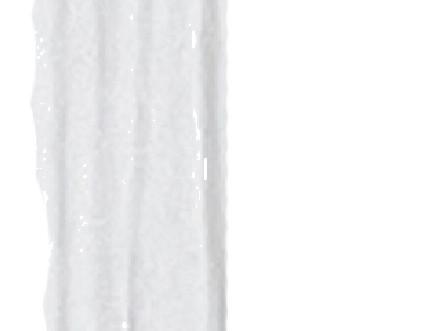

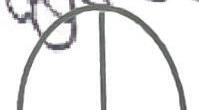
Process Pages


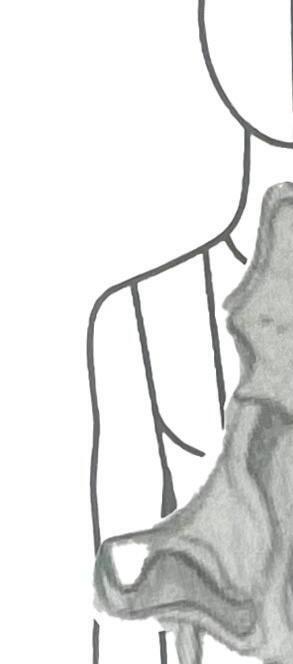
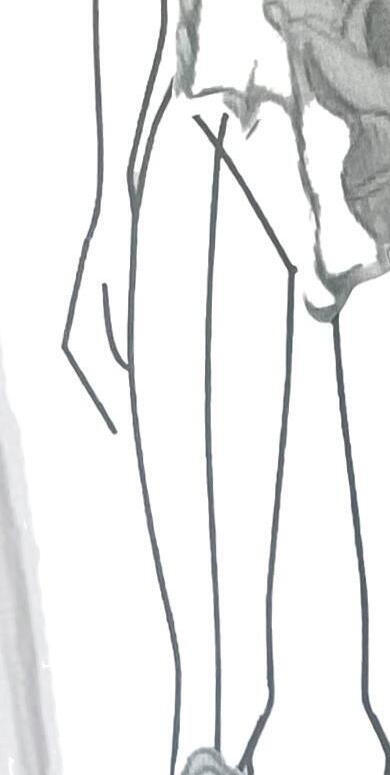
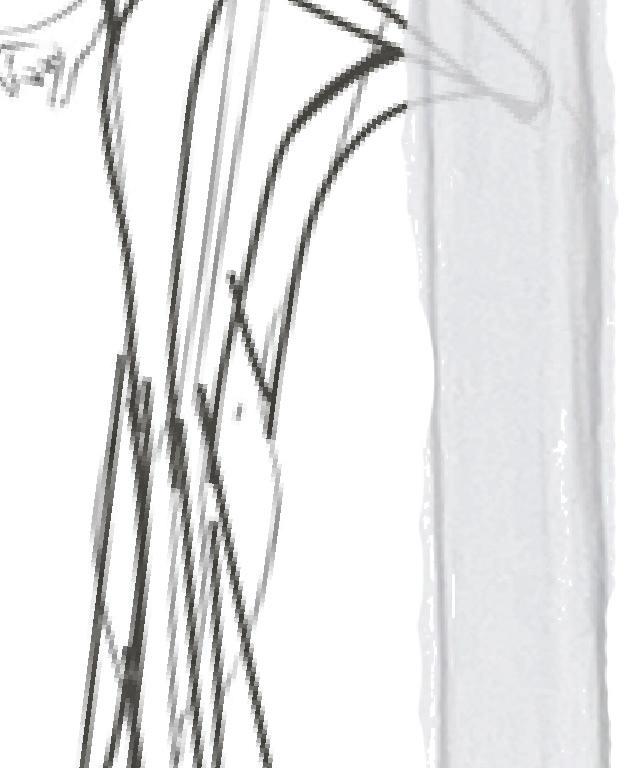

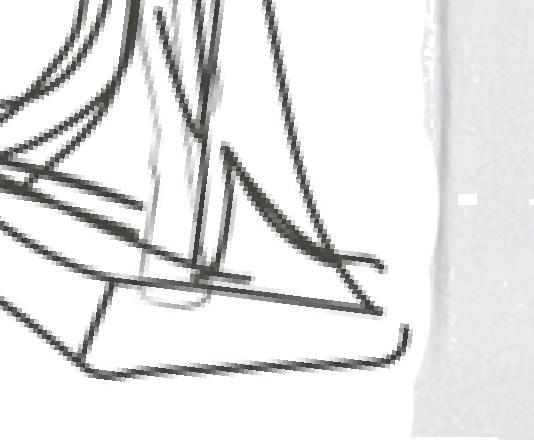


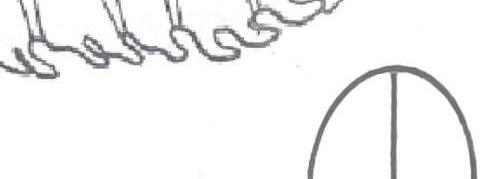

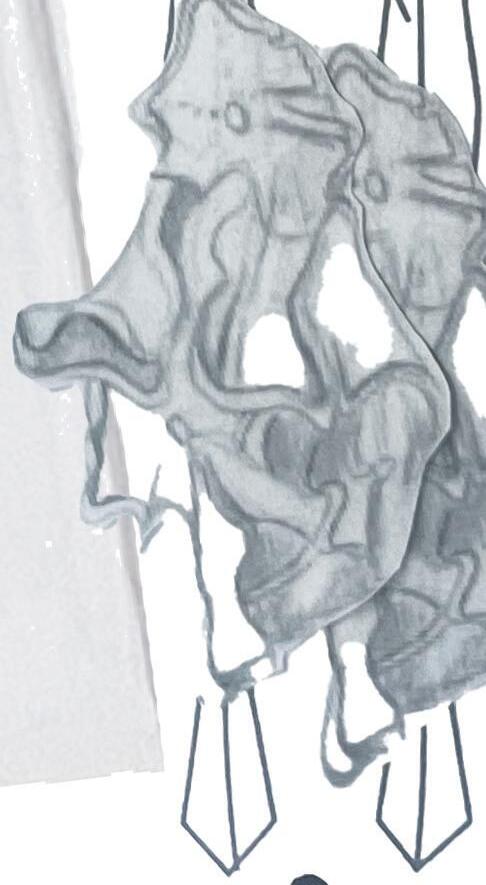





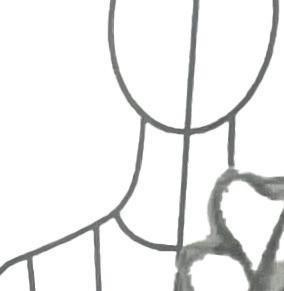


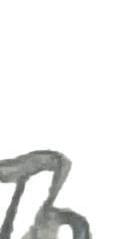
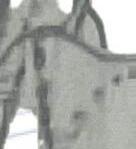

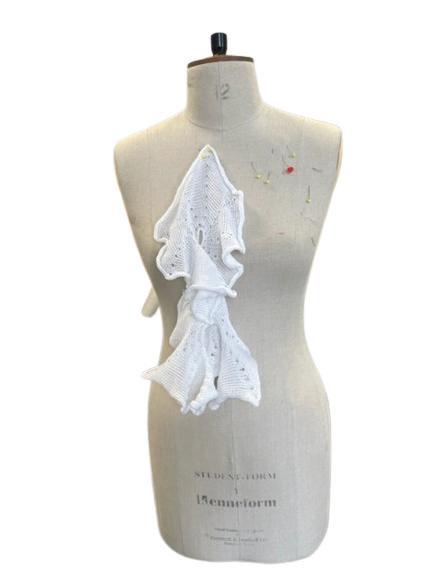

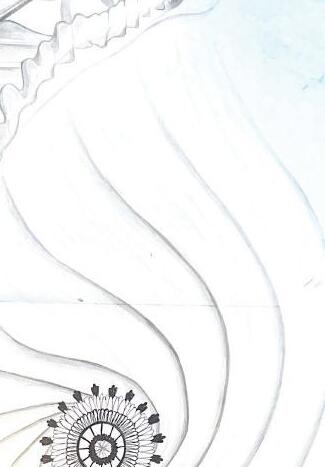
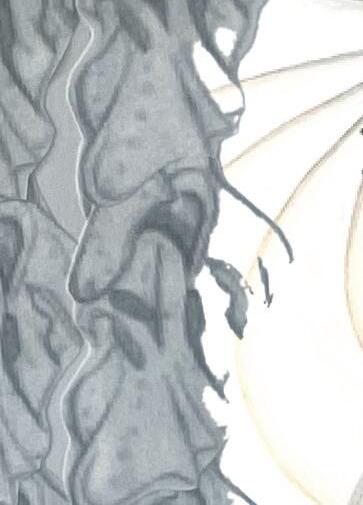
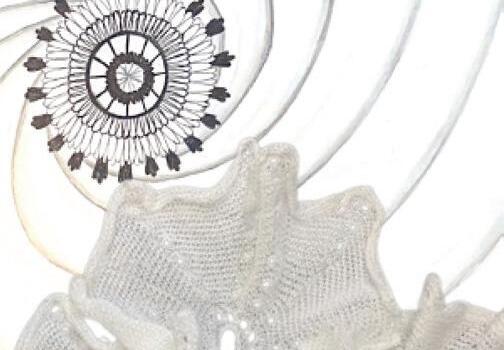
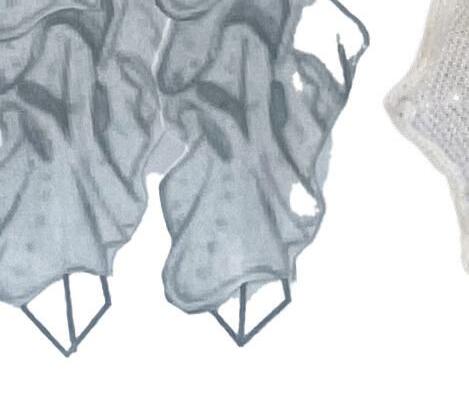
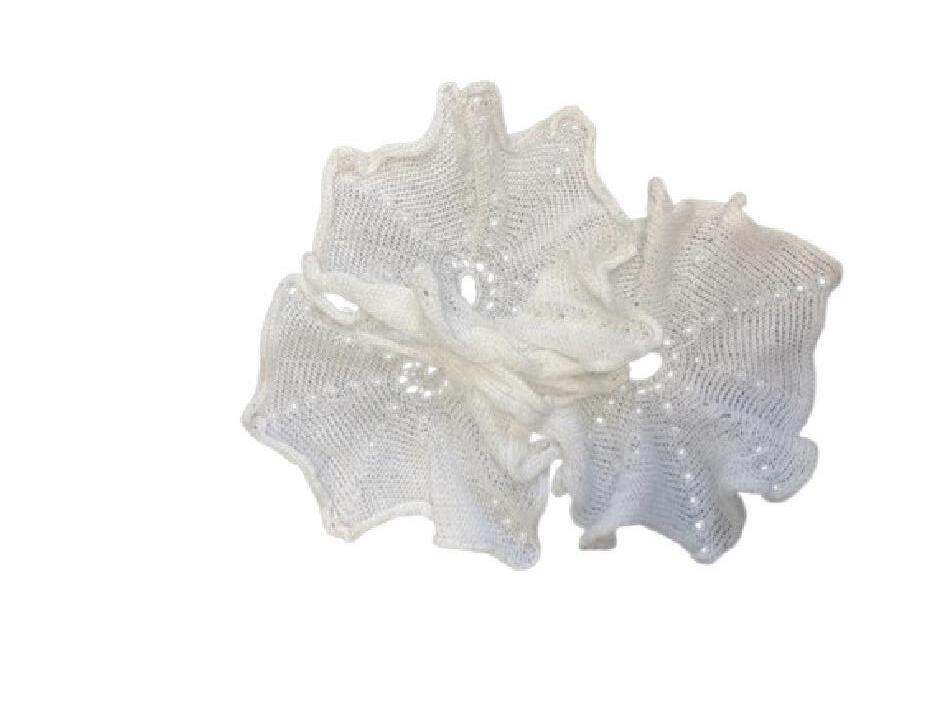
Statement of Intent
“Symbiosis” is an exploration of the relationship between human design and the natural world through the medium of knitwear. Crafted entirely from natural fibres — linen, cotton, and 100% biodynamic mohair — the collection represents a return to nature and a commitment to sustainable practices. The collection is structured in layers: The base layer consists of simple, rib-knit pieces that represent the foundation of human design — pure, functional, and structural, much like the essential frameworks humans create. These minimalist pieces reflect the innate human drive for order, purpose, and construction. The overlay pieces are vibrant, textured forms inspired by biomimicry — the imitation of nature’s genius in human innovation. These pieces layer over the simple rib knits, representing how nature’s complexity, colour, and organic beauty weave themselves into human systems. They draw heavily from Antoni Gaudí’s architectural philosophy.
The concept of symbiosis is at the heart of this collection: each piece is designed not as an isolated garment, but as part of a living system of layers. Just as in nature, where different organisms interact and depend on each other for survival, the simple human-designed base pieces and the biomimetic, nature-inspired overlays exist in mutual enhancement.
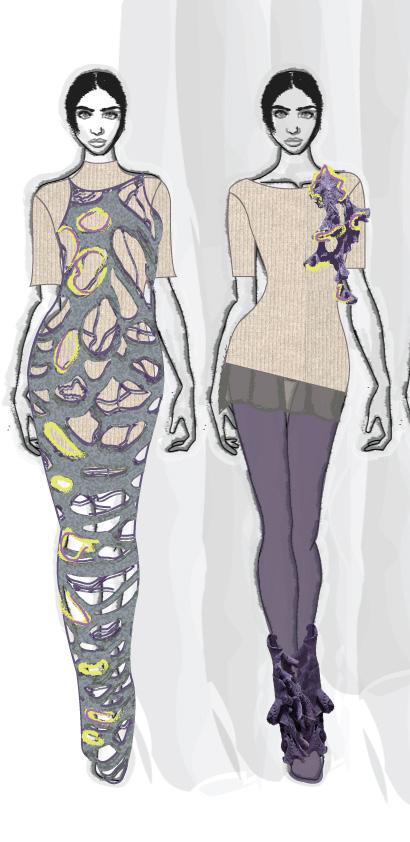
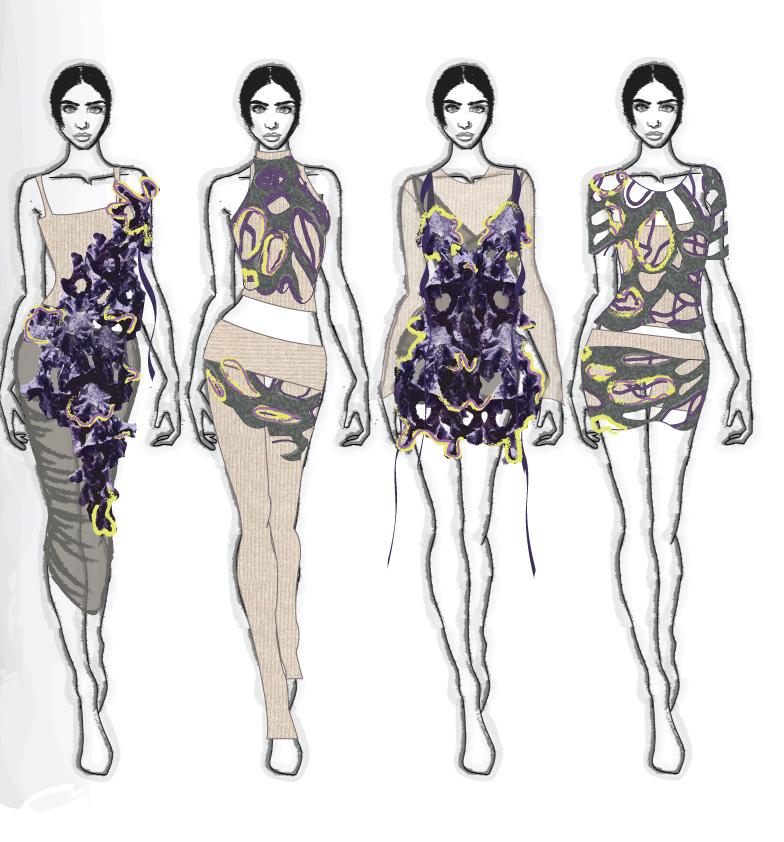
Regenerated Yarn
I bought a knit machine over the summer and the previous owner gave me bags of small spools of yarns. I wanted to see if I could combine the different spools of yarn to create a new regenerated yarn. I researched different ways to make new yarn, and I got a drop spindle. I carded the different yarns to make felt, and then I combined the different felted colours together on the carding brush to make rolags that could be spun into yarn. It is very time consuming to hand card, and hand spin. On a larger scale if this process was industrialised, it would be an effective way to use up old yarn or upcycle old knit clothes.
This process also made my collection brighter as my colour scheme was subdued because everything else was naturally dyed. I was also designing for biodegradability so I crocheted the yarn I spun on my clothing so that at the ends of its lifecycle it could be removed.
A lot of knitwear is now made from acrylic yarn which can’t be biodegraded. Acrylic yarn can be detrimental to the environment because of it shedding microplastics, the resources needed for its production can also be toxic. Acrylic yarn is a synthetic fibre made from petroleumbased products, and it sheds microplastic particles during use and washing, contributing to plastic pollution. This type of yarn can contaminate waterways, soil, and even the air. These microplastics persist in the environment for a long time and can harm marine life.
By repurposing materials like post-consumer textile waste or manufacturing remnants, upcycling minimizes the need for new yarn production, thus decreasing the environmental impact of creating new textiles. Upcycling yarn is beneficial for a circular economy because it extends the lifespan of materials and minimizes waste, aligning with the core principles of keeping resources in use as long as possible.
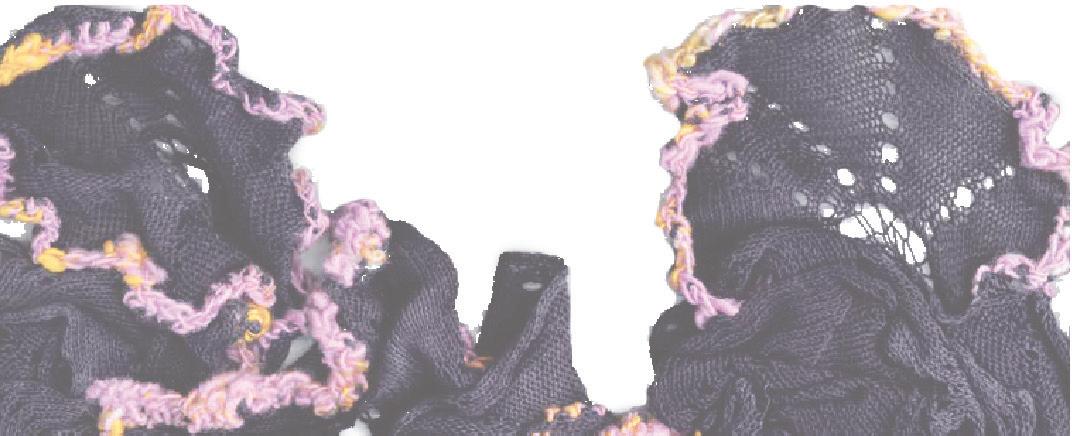
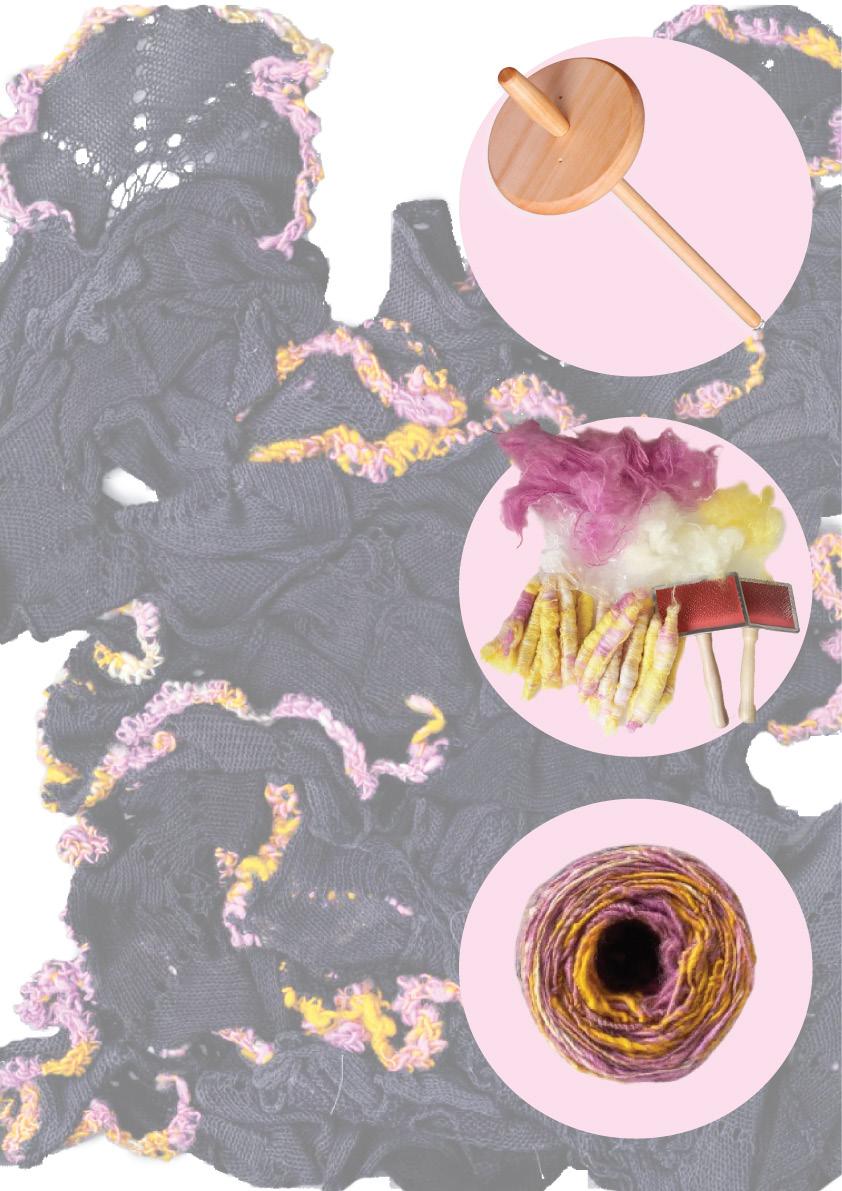
Natural Dying
The next sustainable process I implemented in my work was natural dying. I did start off creating my own dyes from coffee beans, turmeric, and blackberries, but the colours never came out as even as I wanted them to. I sourced my natural dyes from a local company, Appleoak Fibreworks. I knew if I wanted consistent colours, buying powdered dyes I could measure out would be the best way to have a consistent colourway in my project. I knew I wanted strong colours in my project to represent the beautiful bright colours and mosaics Gaudi used in his work. I made little swatches of my yarn that consisted of cotton, mohair and linen yarn and used them to decide my colour scheme. I also bought an iron mordant to change the PH in the dye baths, to see if I could come up with more than one colour with a dye. My rhubarb root dye was yellow without the iron, and green with the iron.
Synthetic dyes are hazardous to the environment because they often come from petrochemicals and heavy metals, which can pollute waterways, soil, and destroy local ecosystems. Their creation and disposal release harmful chemicals, and the dyeing process often requires a large amount of water and energy. This adds to water scarcity, carbon emissions, and long-term environmental degradation. Natural colours, obtained from plants, minerals, and insects, are biodegradable, non-toxic, and use less water and energy to manufacture. They have a far reduced environmental impact and may frequently be sourced responsibly. Using natural colours promotes environmentally responsible activities and helps to protect our planet.
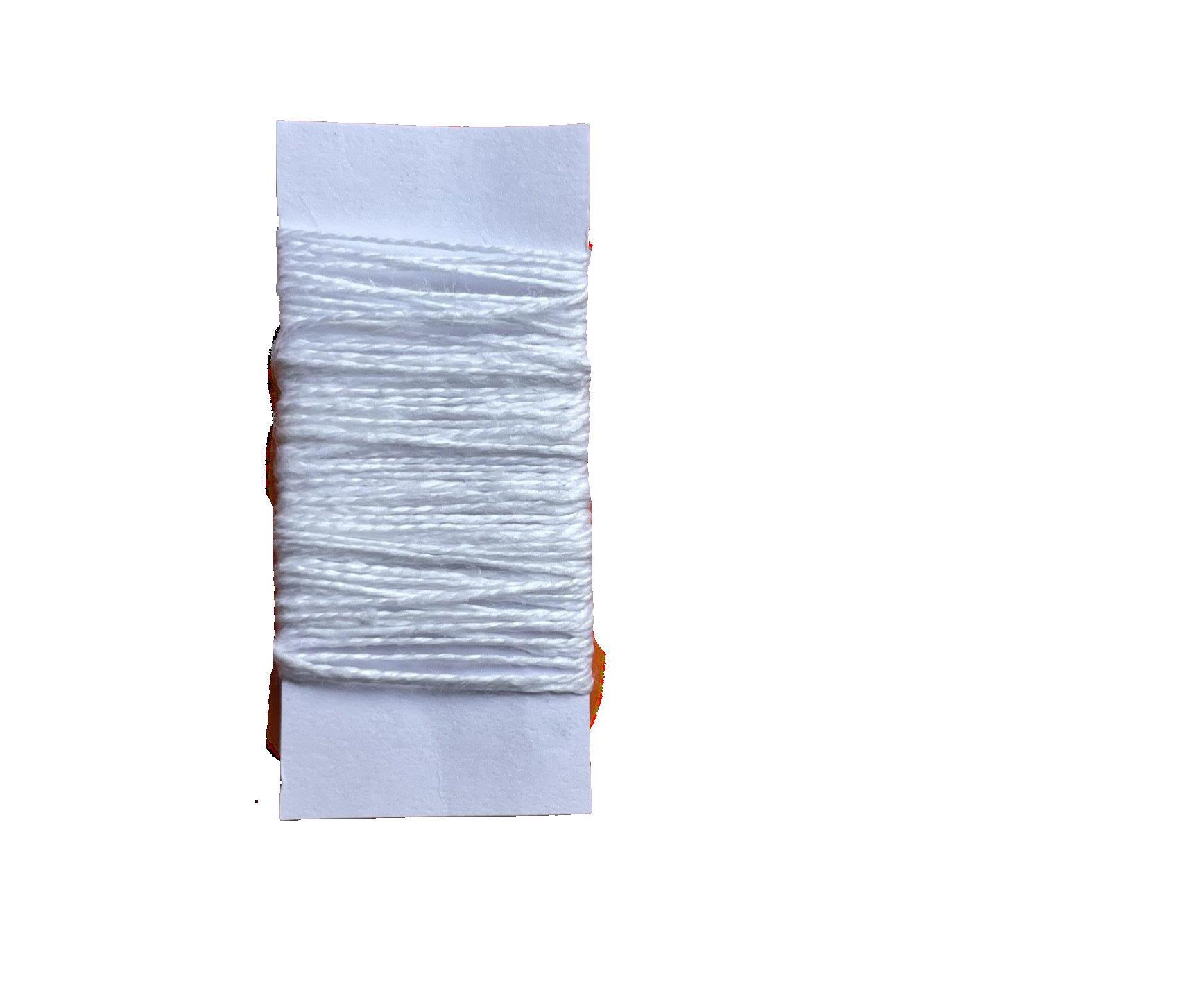
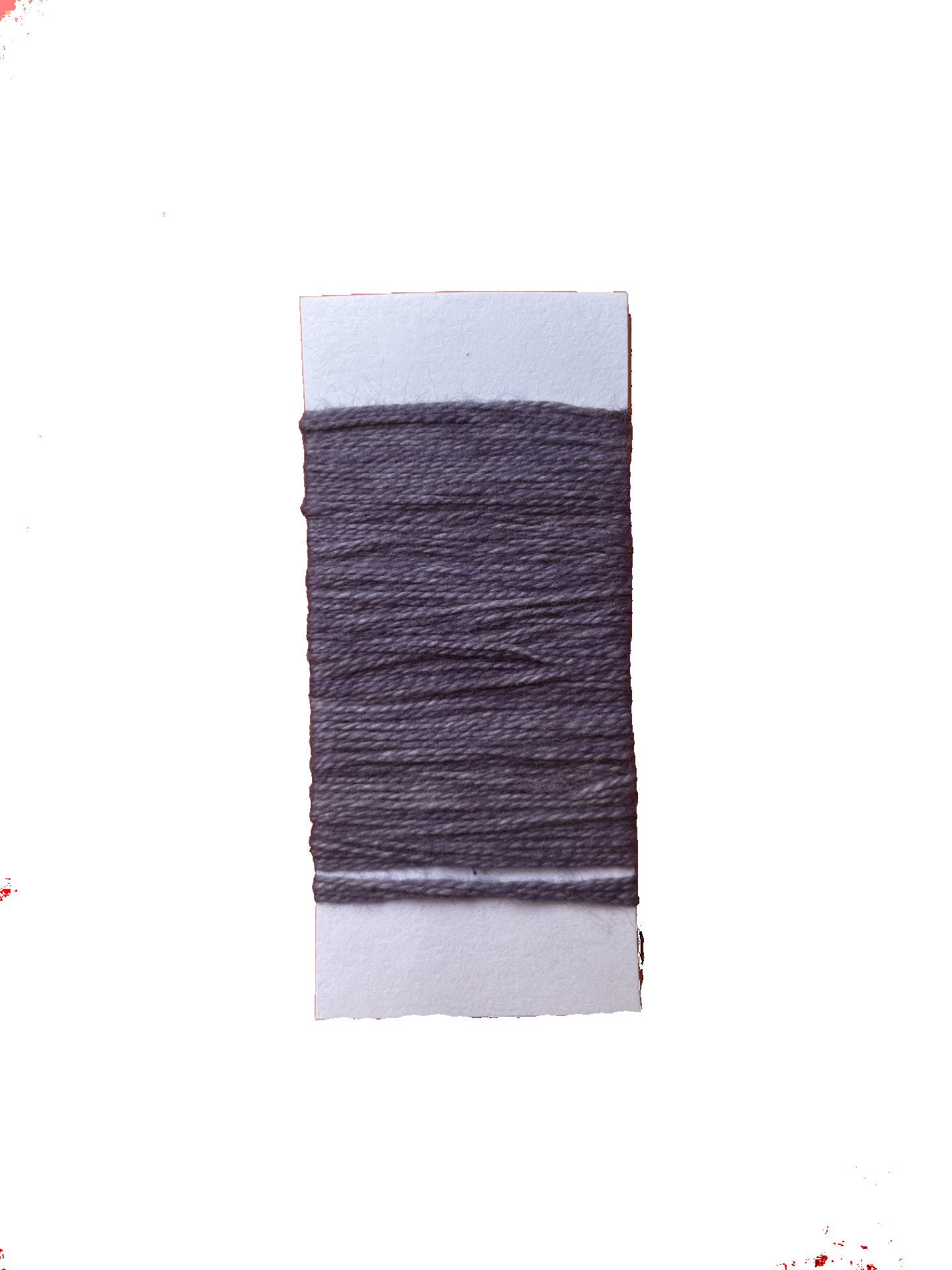
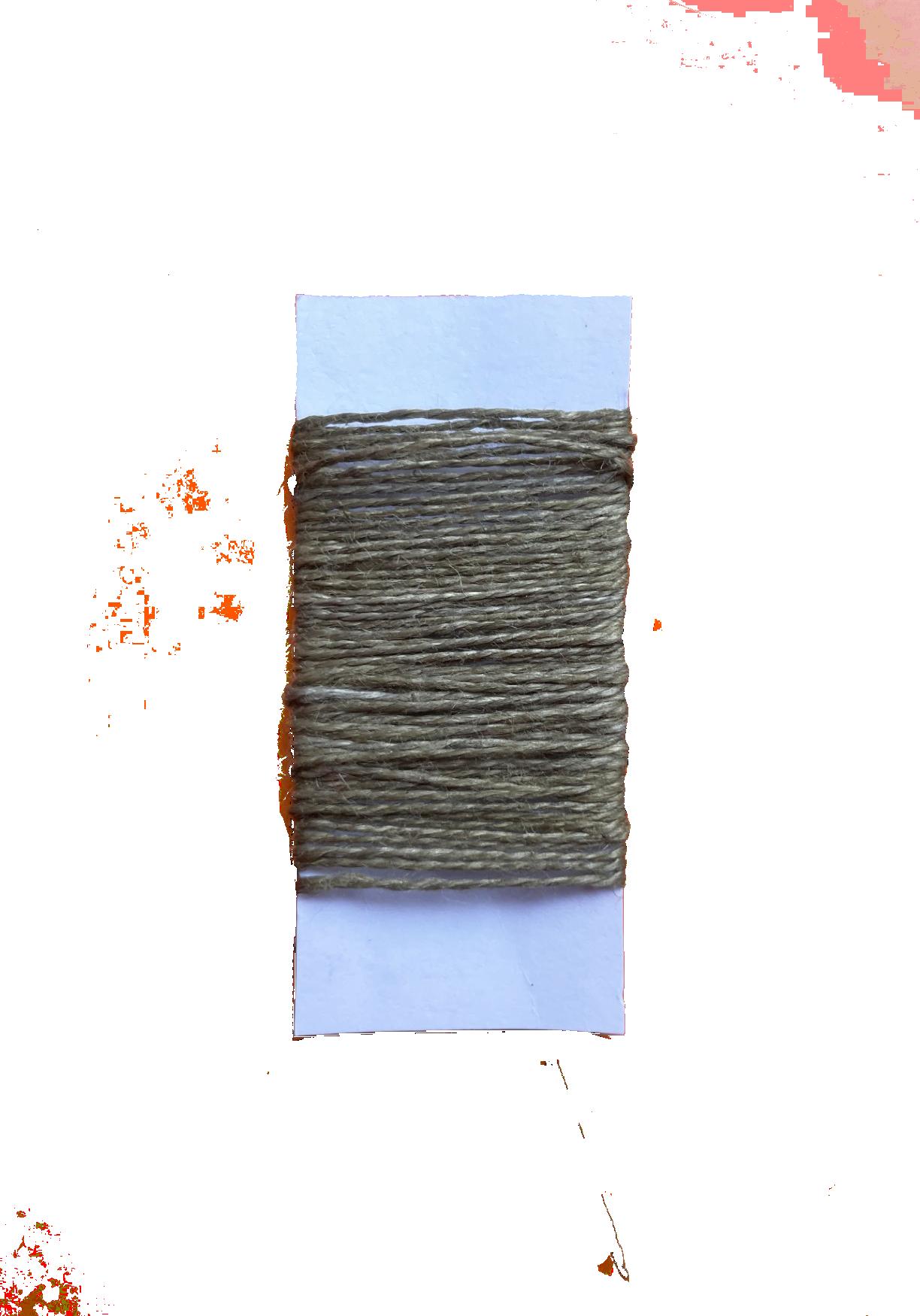
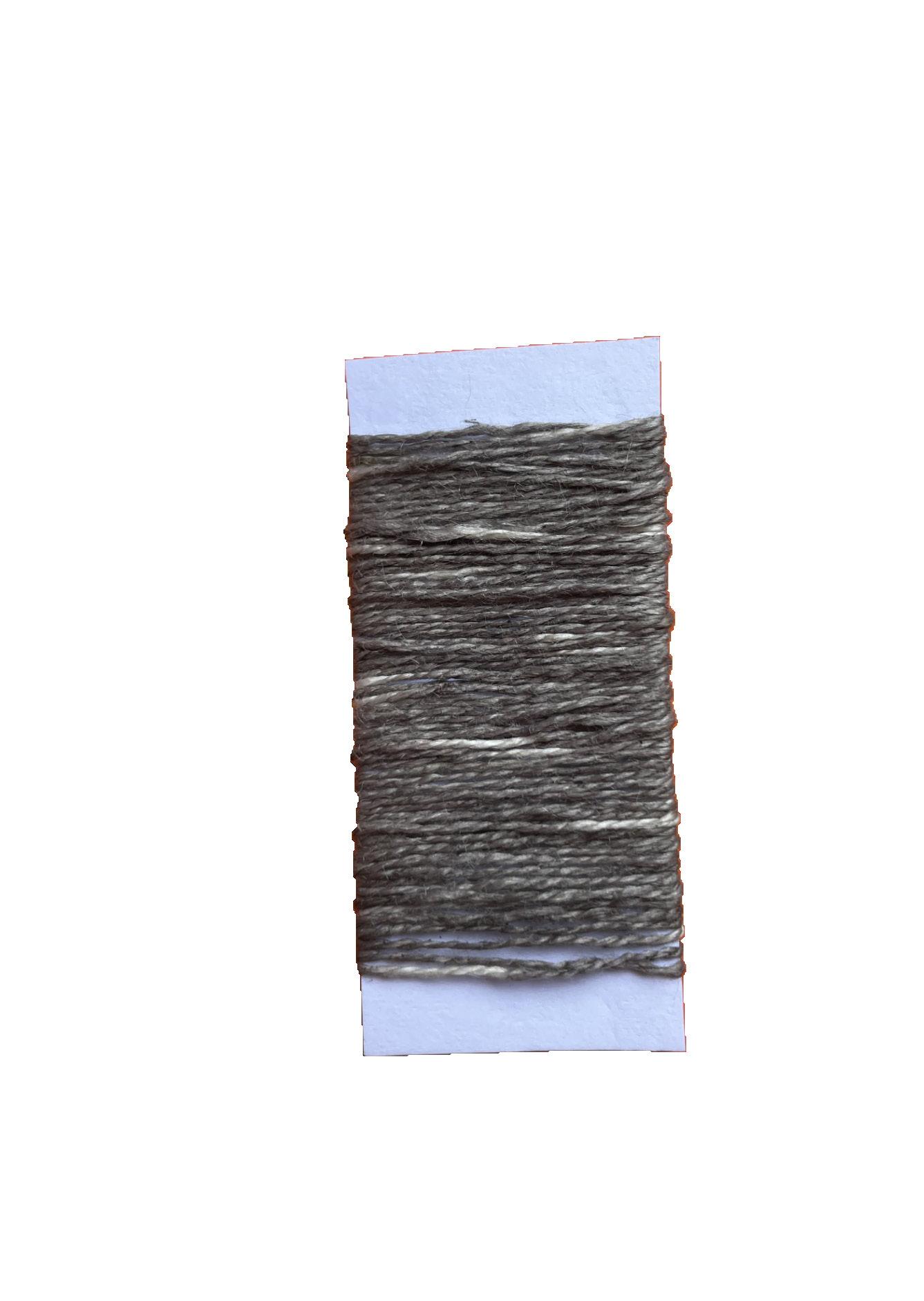
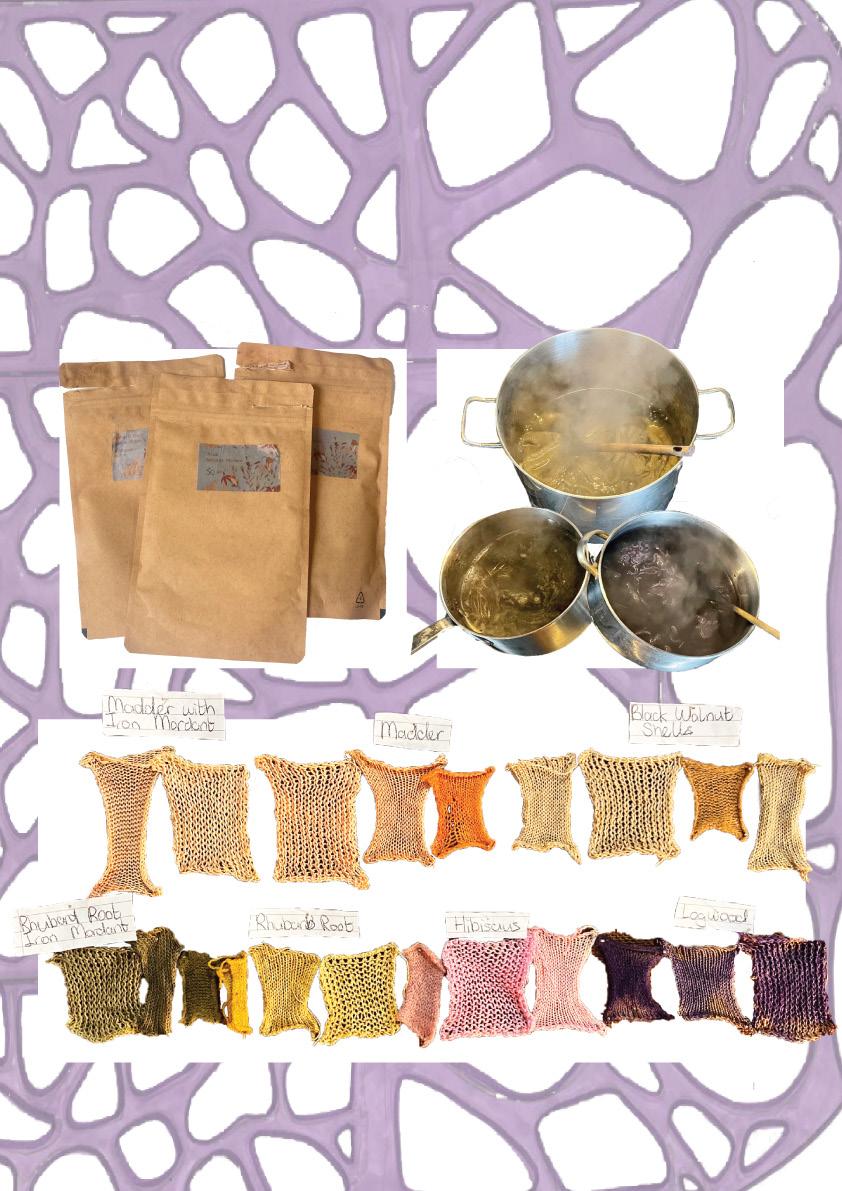
Sustainable Fibres
I selected 100% cotton yarn, 100% linen yarn, and 100% biodynamic mohair yarn because all three are natural, renewable, and biodegradable — crucial factors in designing for a future with less textile waste. By using 100% pure fibers with no synthetic blends, every fibre is designed to eventually return to the earth. These materials will biodegrade naturally, contributing back to the soil rather than lingering for hundreds of years as waste.
Cotton is a natural fibre, cotton decomposes much faster than synthetic fibres when disposed of properly. It is plant-based, breathable, and versatile, making it ideal for durable knitwear. Linen, made from the flax plant, requires less water and fewer pesticides to grow than cotton, making it one of the most sustainable crops available. Linen is extremely strong yet fully biodegradable, emphasizing long life and natural return to the earth. 100% Biodynamic Mohair: Mohair, sourced responsibly from goats raised through biodynamic farming practices, reflects the highest commitment to regenerative agriculture. Synthetic fibres like polyester, nylon, and acrylic are in much of todays’ fashion industry. These petroleum-based textiles are non-biodegradable. Shedding microplastics into the environment and accumulating in landfills, oceans, and ecosystems. They are a big factor in the problem of textile waste, where approximately 87% of disposed textiles either end up in landfills or incinerators, with very little being recycled or repurposed.
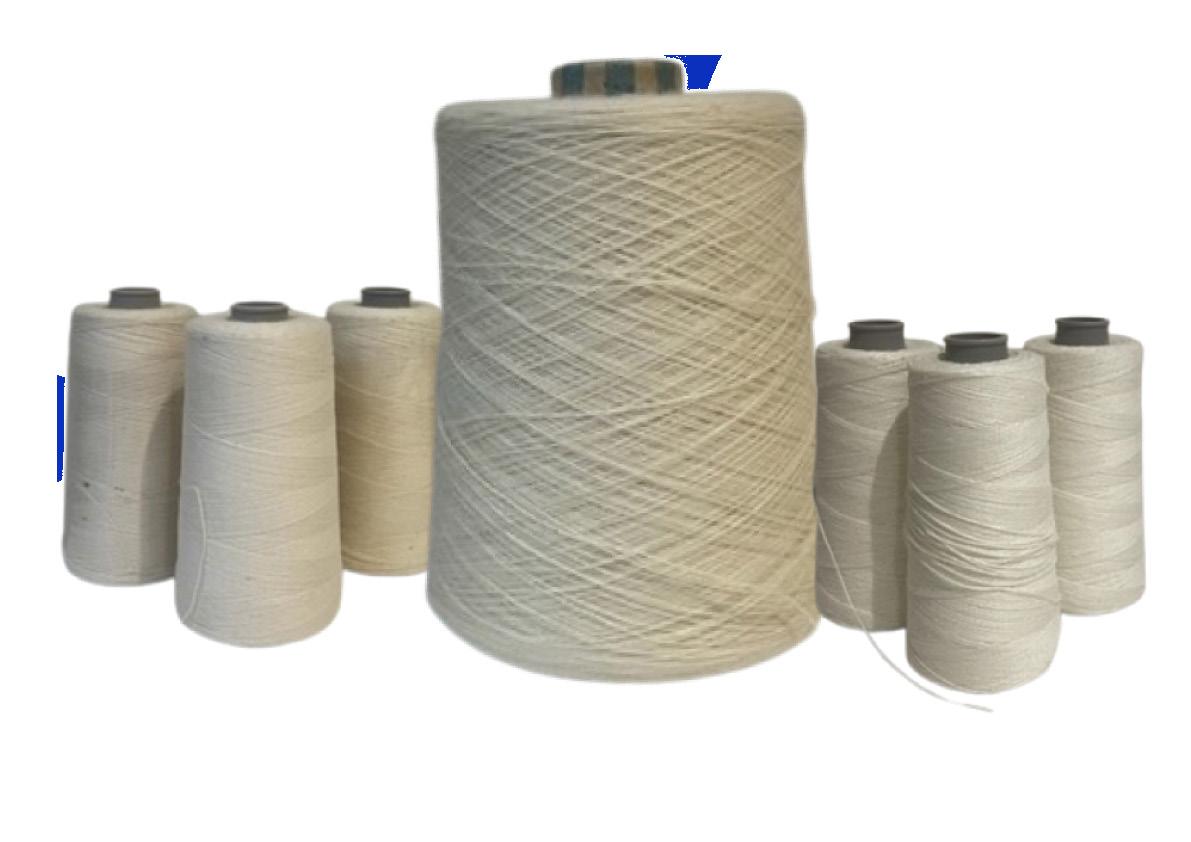
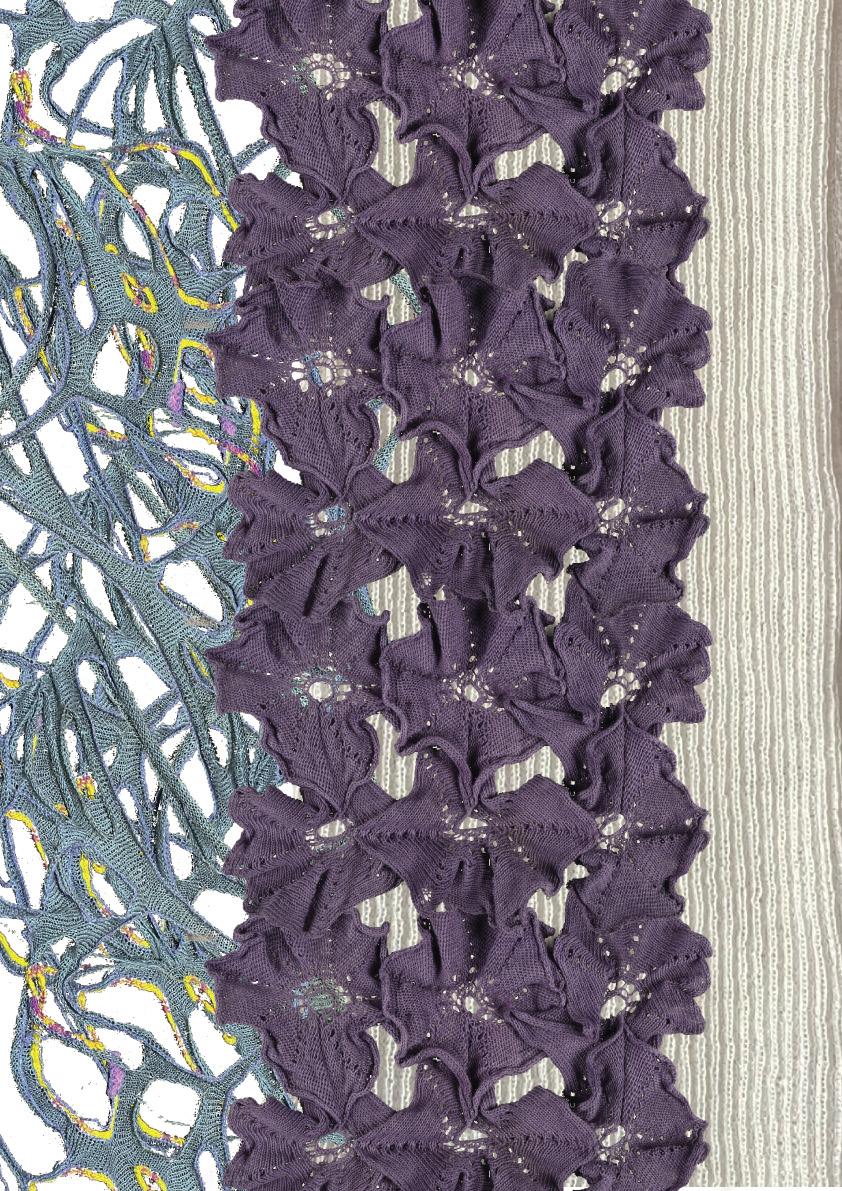
Zero Waste Construction
One of the benefits of creating an all-knit collection is that making the shape of the garment from scratch means you can knit the garment to shape. Most traditional woven clothing is cut out of rolls of fabric, that can result in unusable quantities of textile scrap that goes straight to landfill. Approximately 10-15% of fabric used in textile and garment production is wasted as scraps during the cutting process. This waste can be equivalent to one out of every ten pieces of clothing in your closet. I can make a knit pattern using a tension swatch that will tell me the exact row and stitches I need to create the shaping. With knitwear being a stretch fabric, the scraps won’t be cut off to create darts or other elements non-stretch fabrics need for construction.
There are alternatives to this amount of textile waste, with zero waste patterns being introduced, so that the amount of textile waste that would usually come from a pattern is reduced significantly. As designers we need to think outside of the box with the way we create our clothing. Industrialised knitwear isn’t made to shape a lot of the time and we have the technology to avoid that.
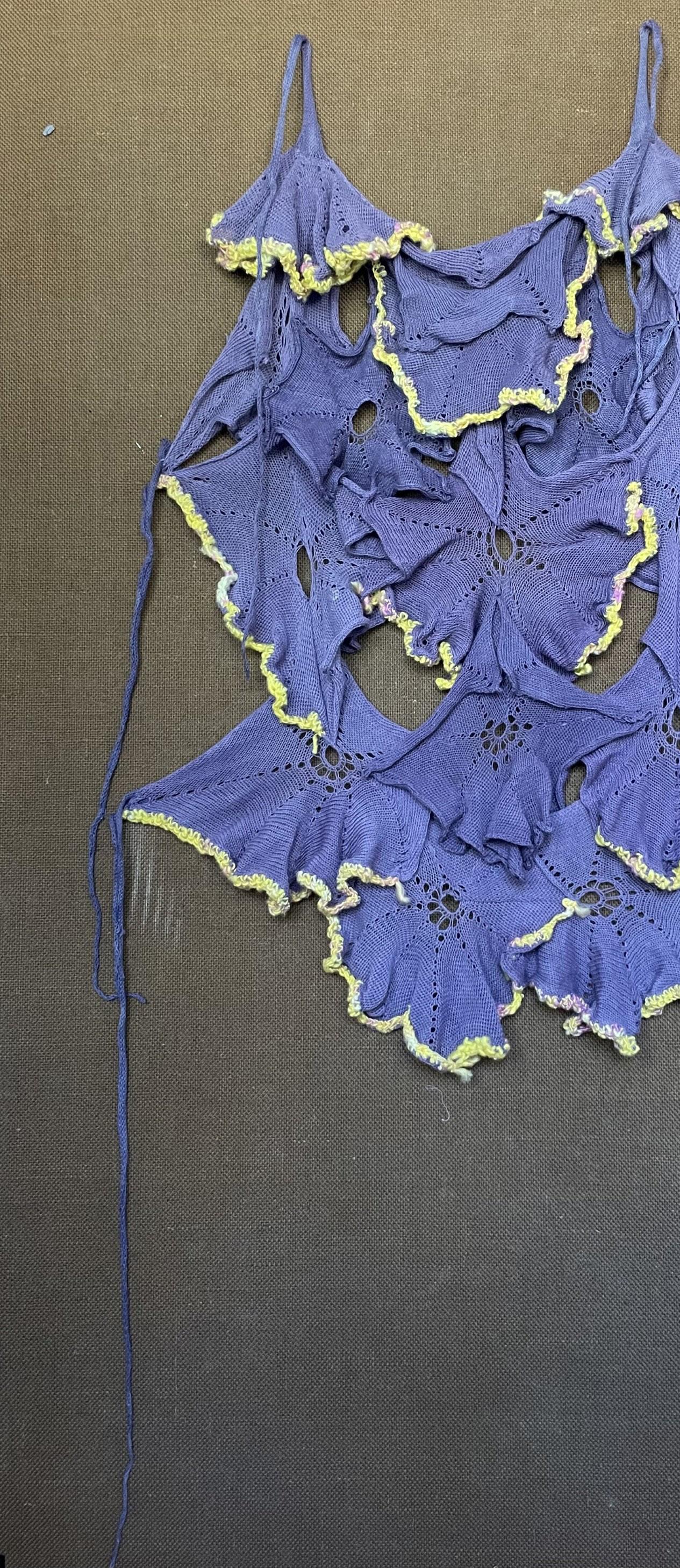

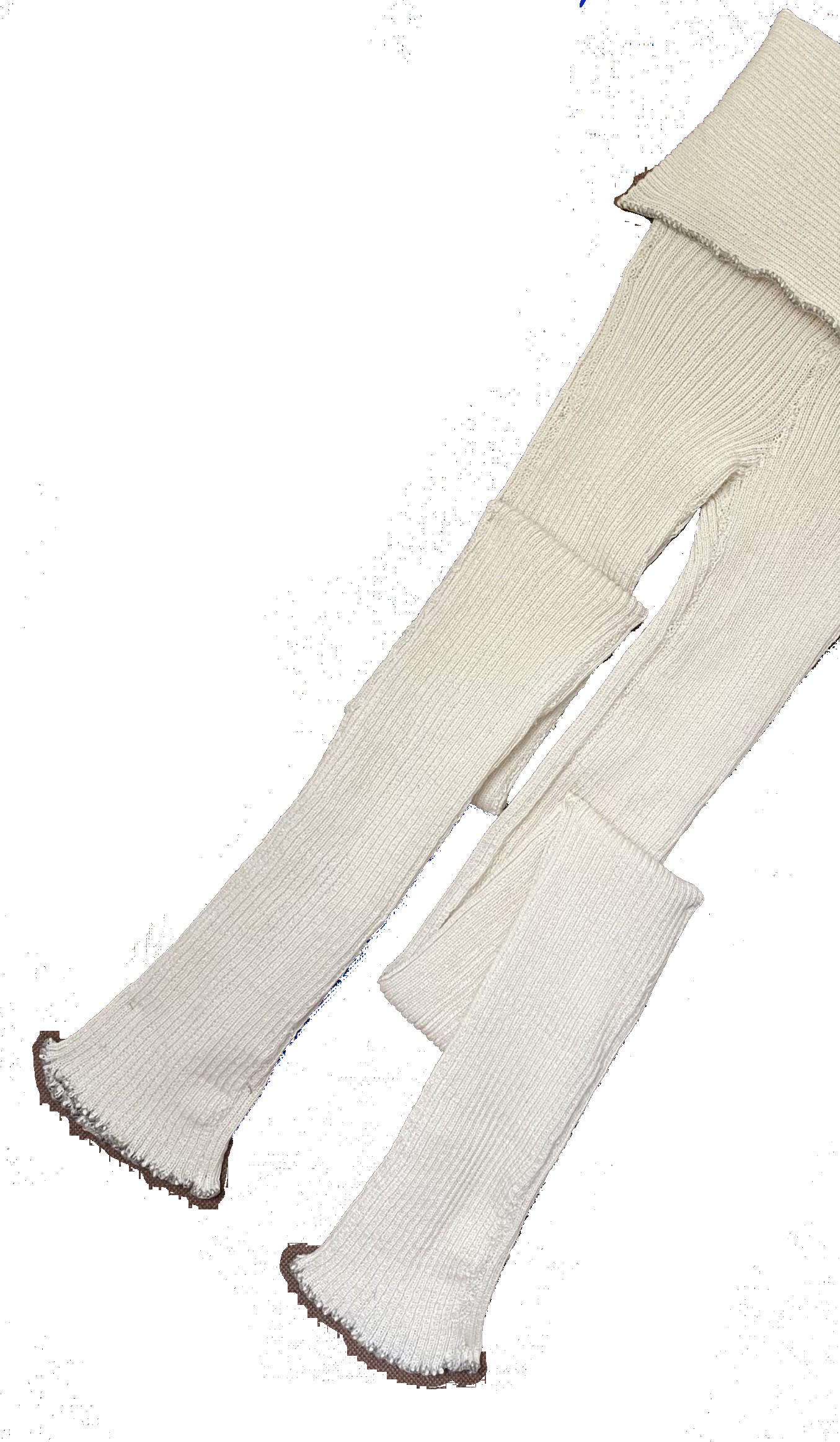


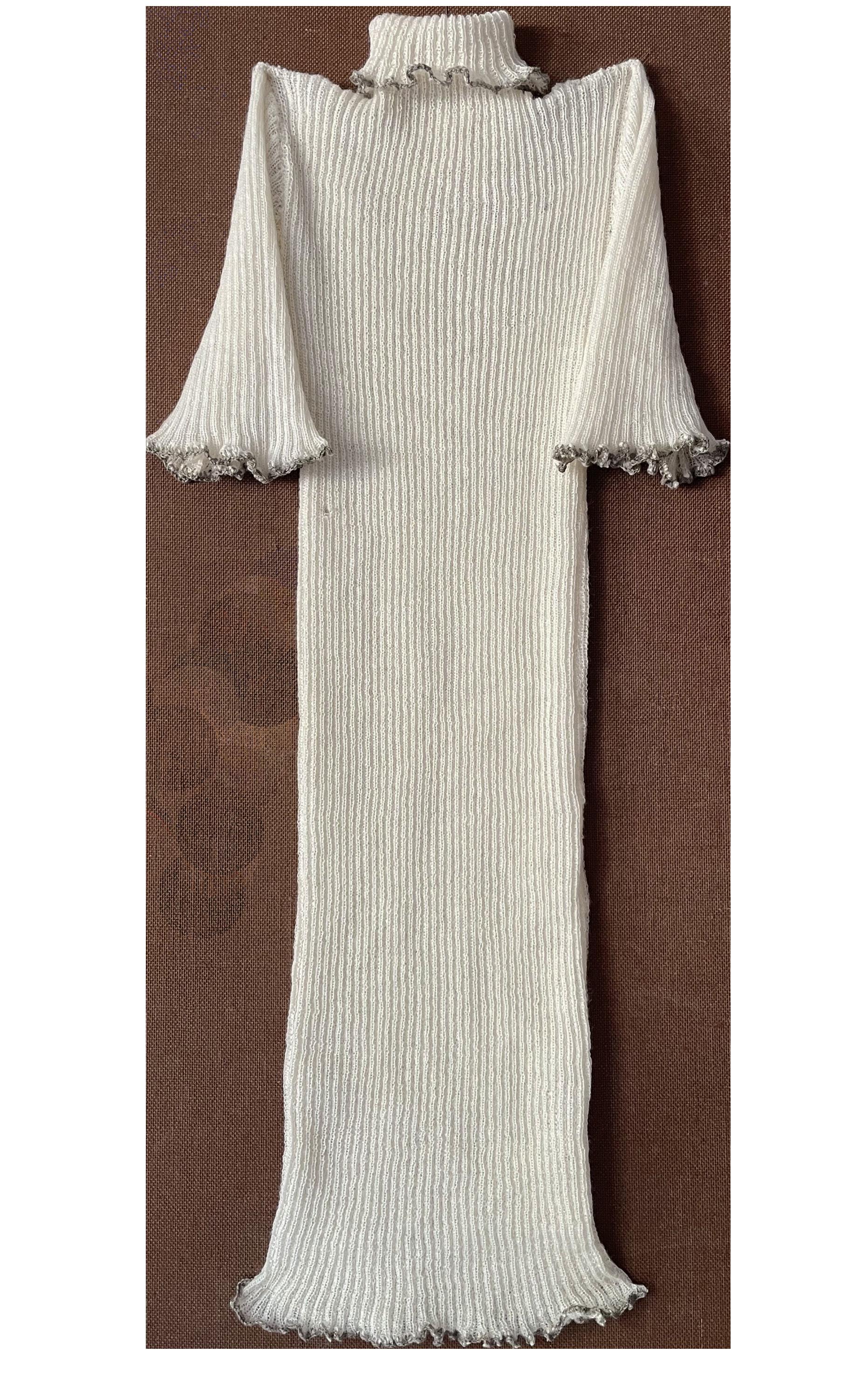

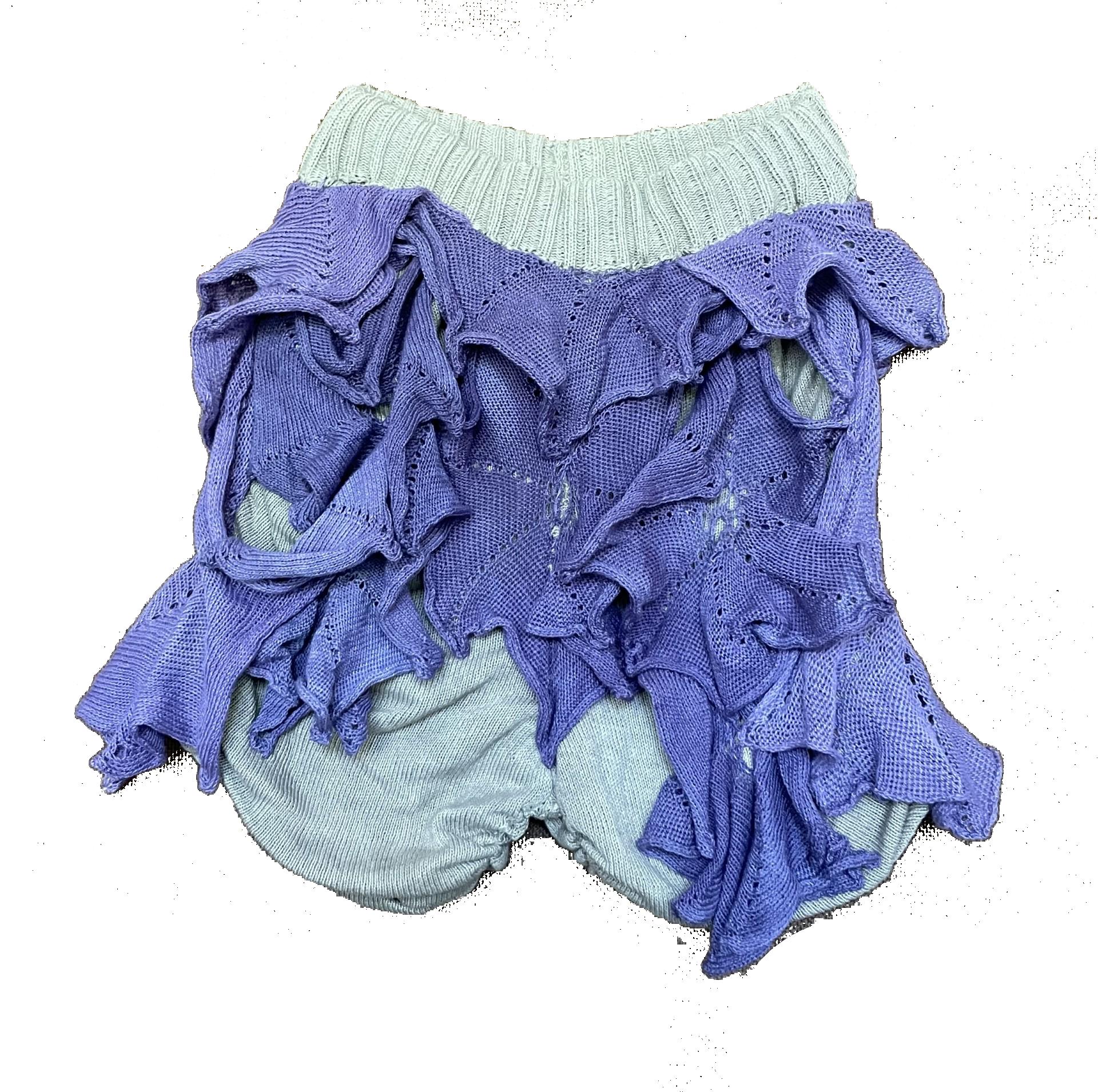

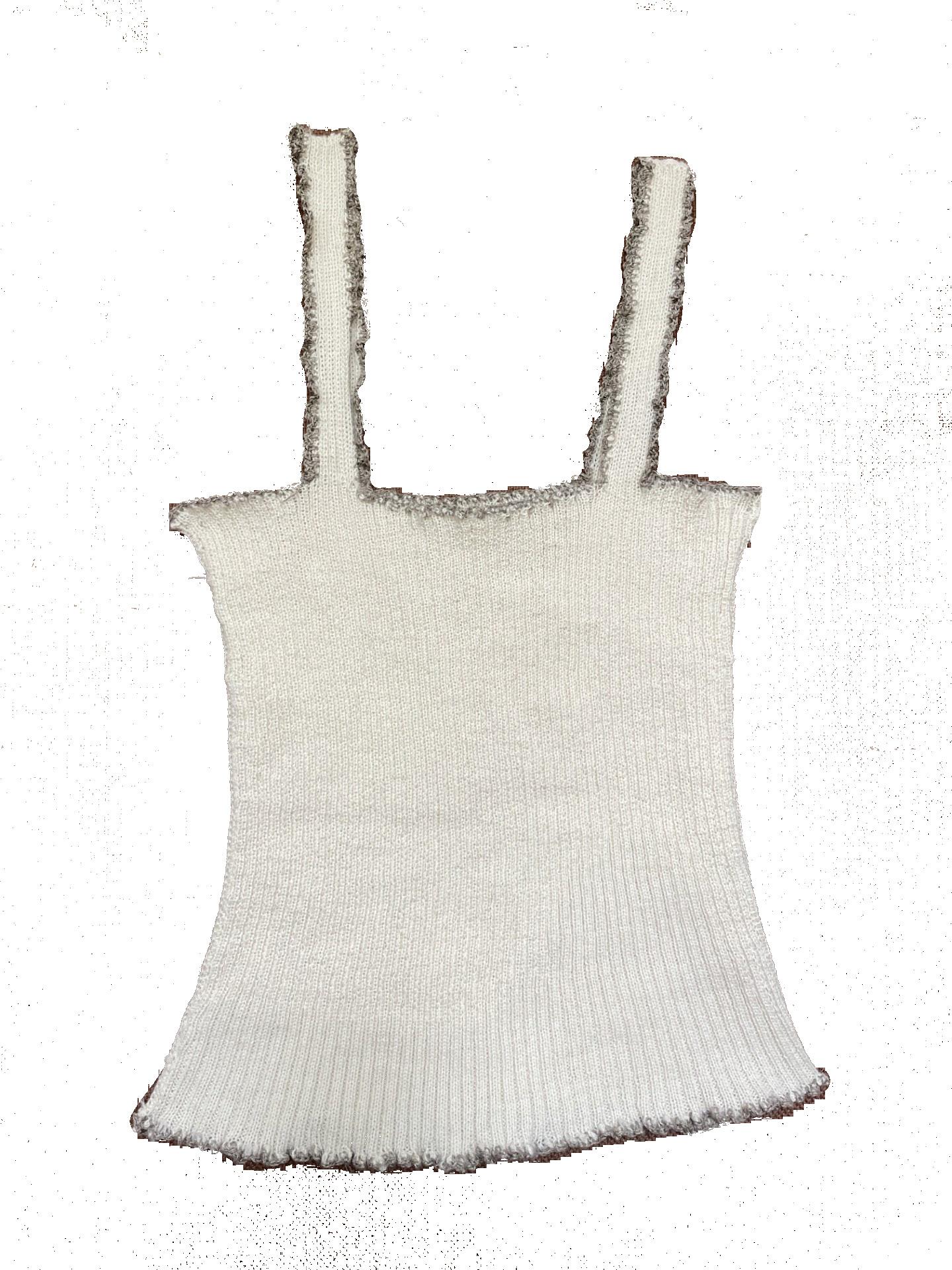
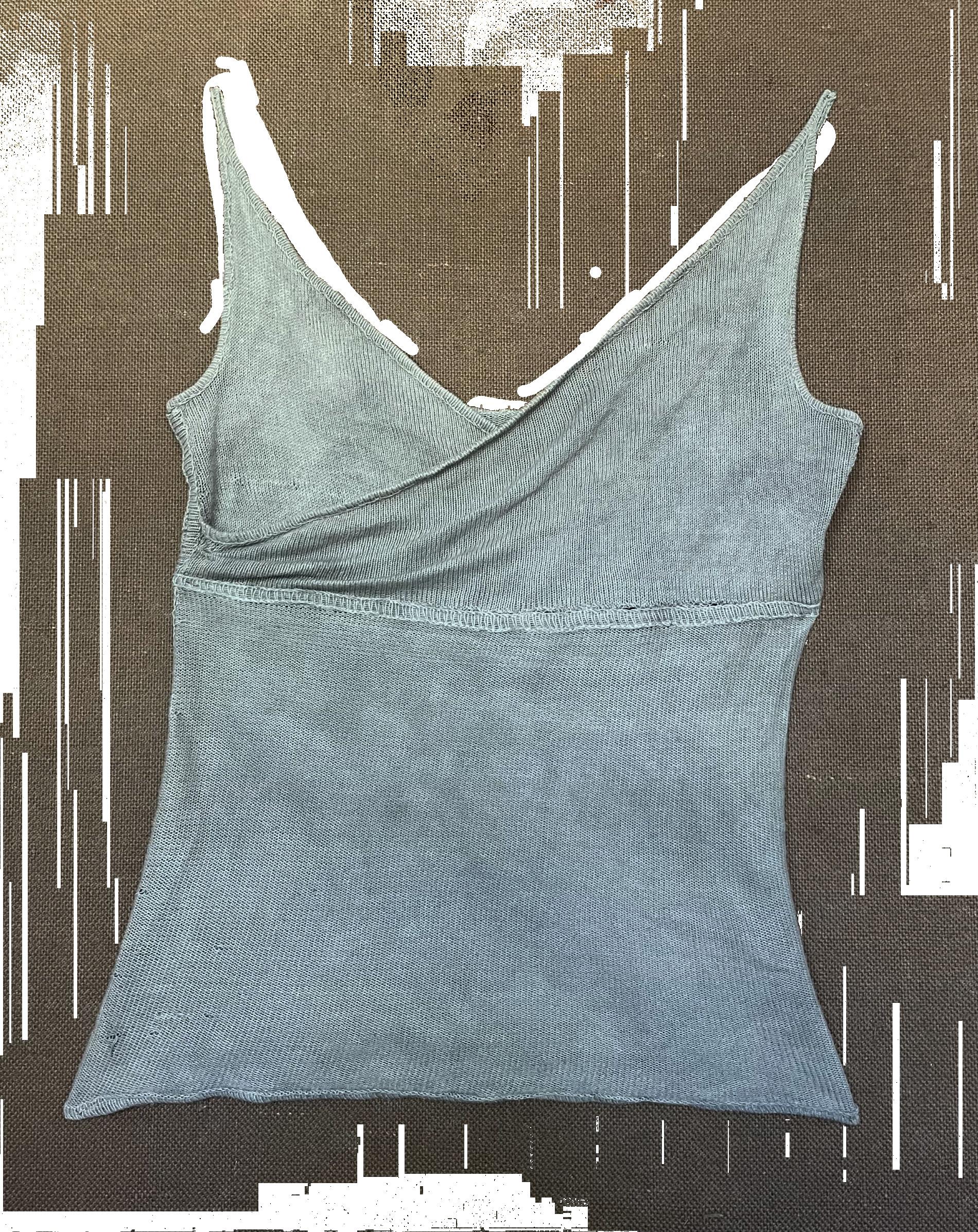
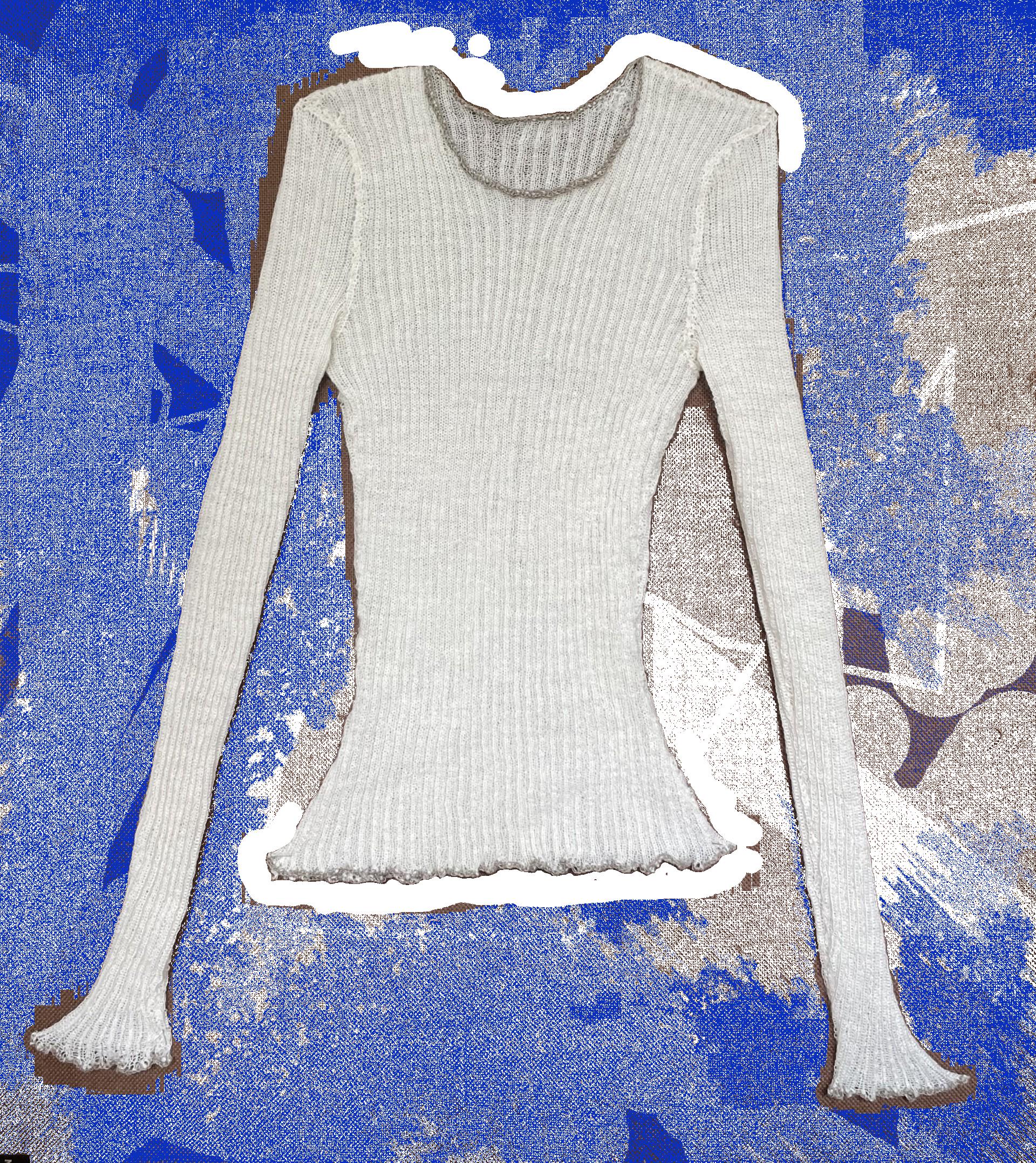
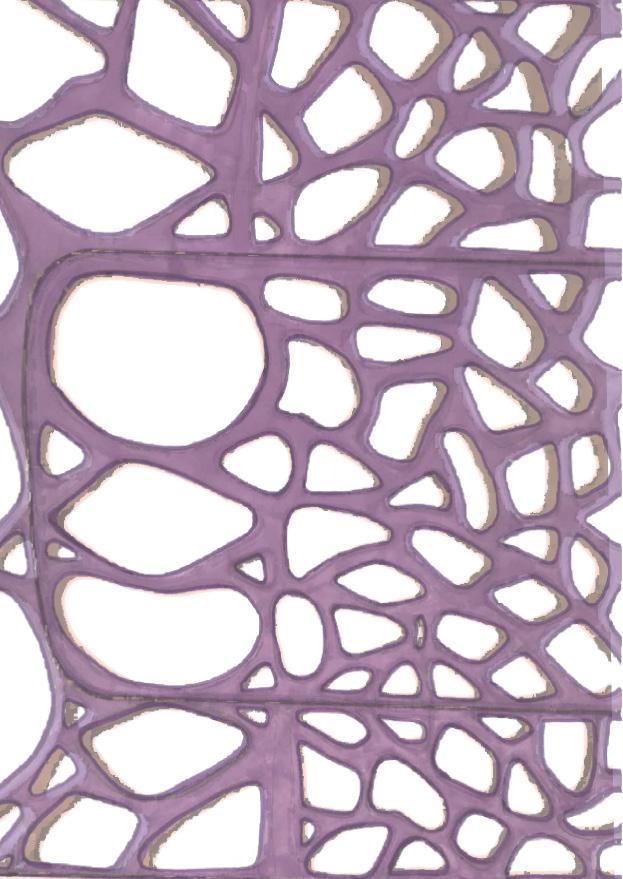
Modular Garments
I made two modular pieces of clothing in my collection that are sculptural so that it can be worn any way over other pieces. Modular design means creating garments that can be layered, reconfigured, and styled in multiple ways, allowing one piece to serve many purposes. Instead of buying more, the wearer can transform what they already own, creating new silhouettes, combinations, and functions from a core wardrobe. This flexibility not only extends the life of garments but also reduces the demand for fast, disposable fashion. The modular pieces align with the principles of a circular economy, where design is intended for longevity, versatility, and eventual biodegradation.
In my collection the modular clothing envisions a future where fashion is no longer static, wasteful, or linear, but living, circular, and regenerative.
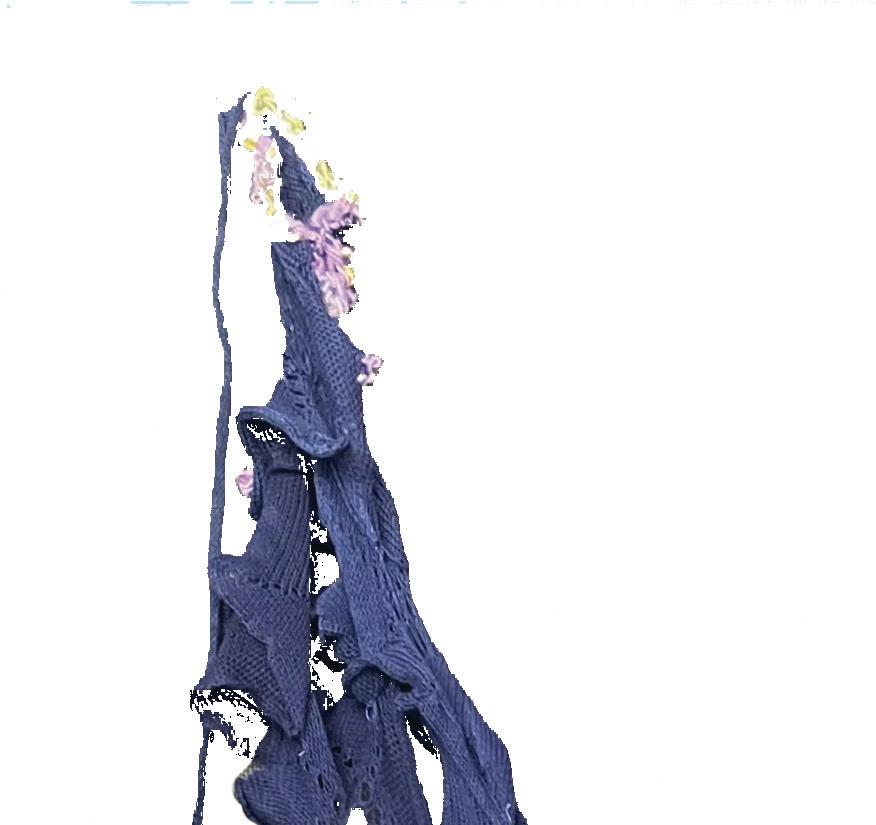
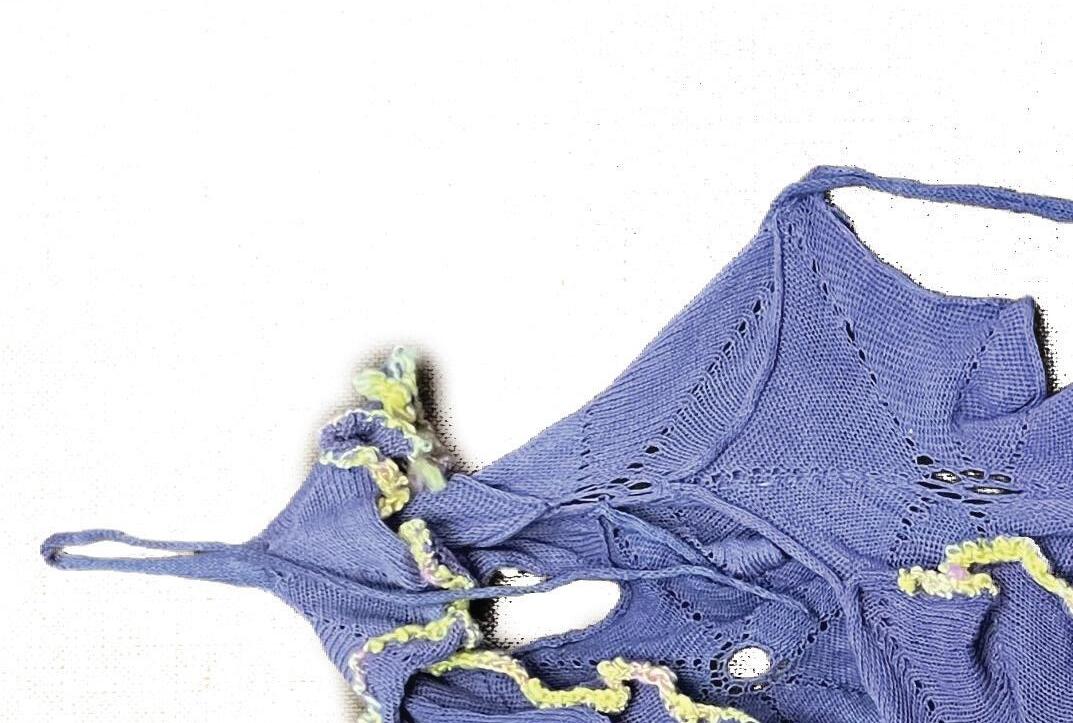
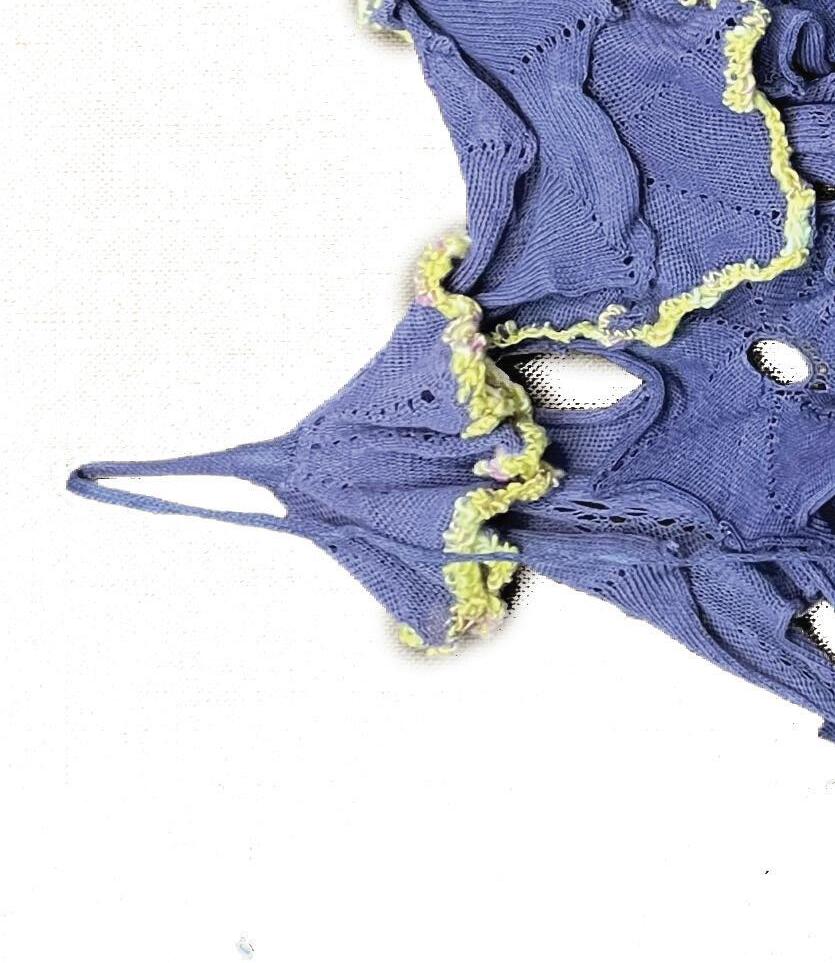
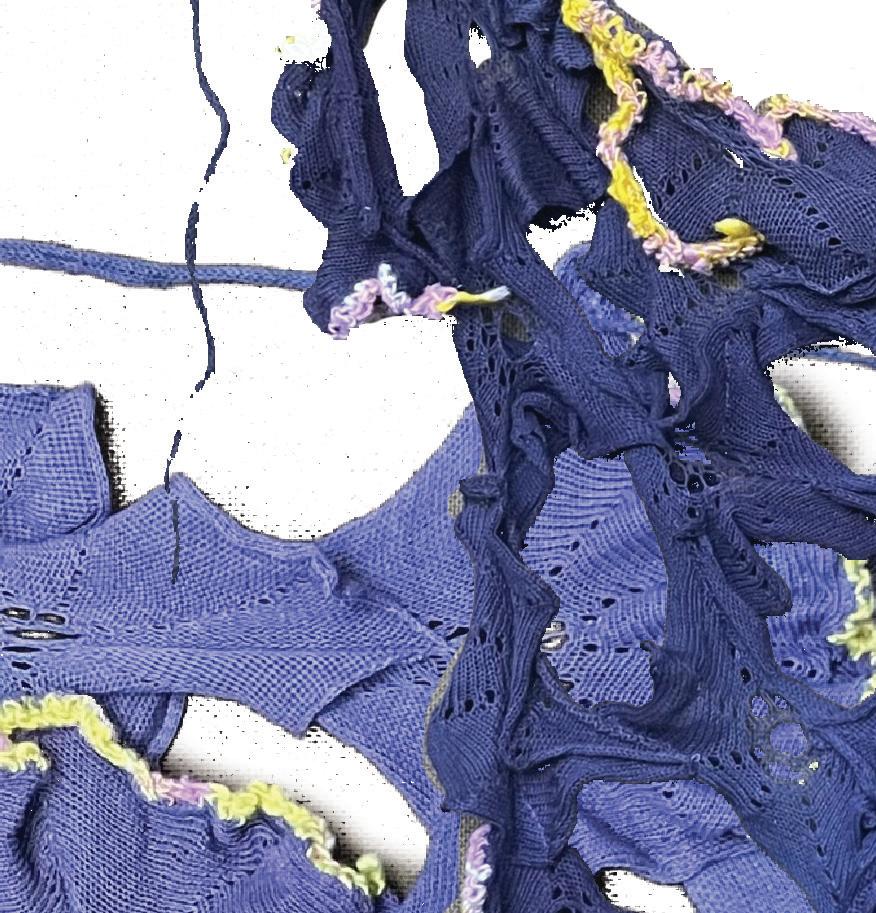

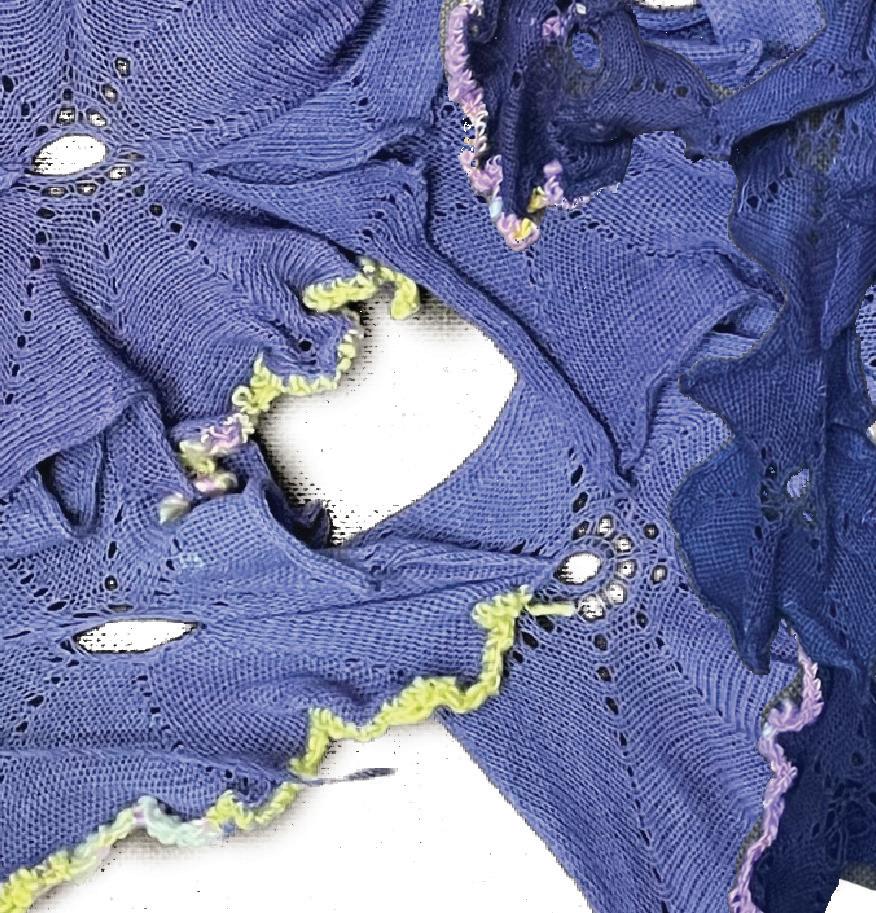
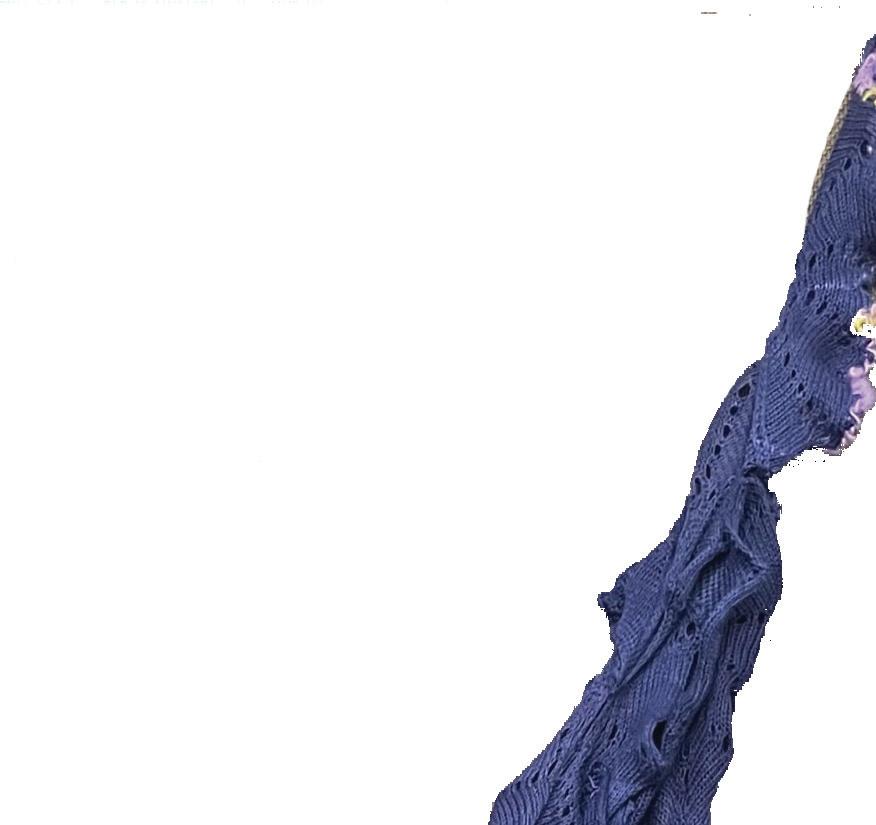
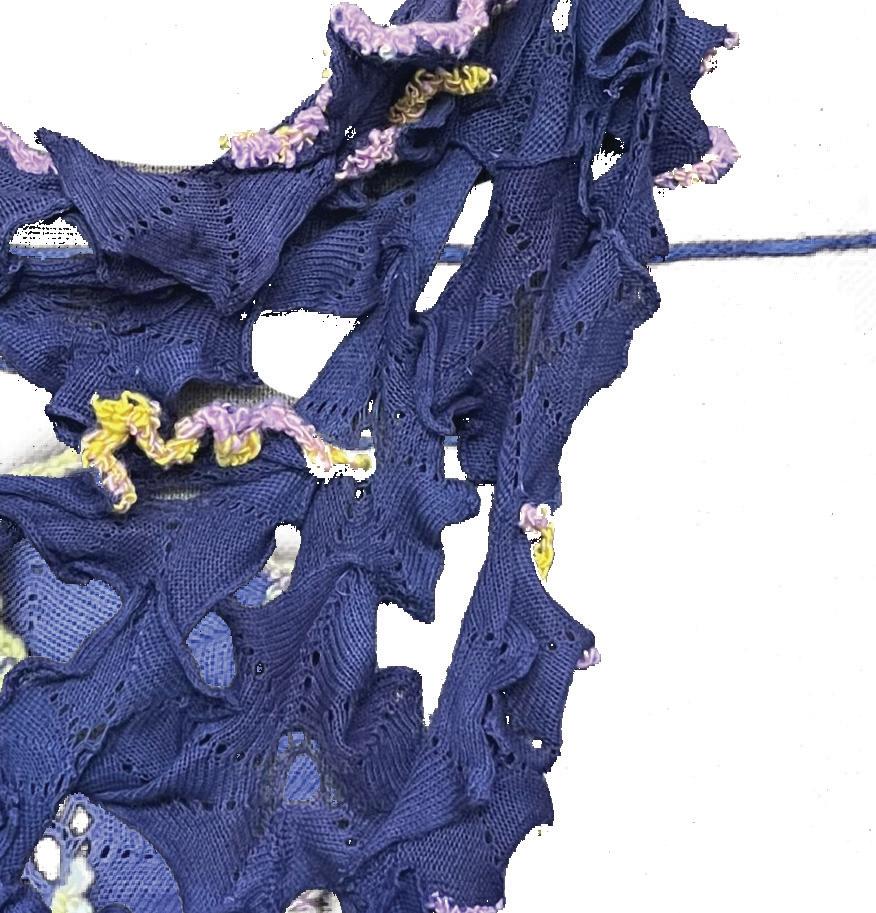
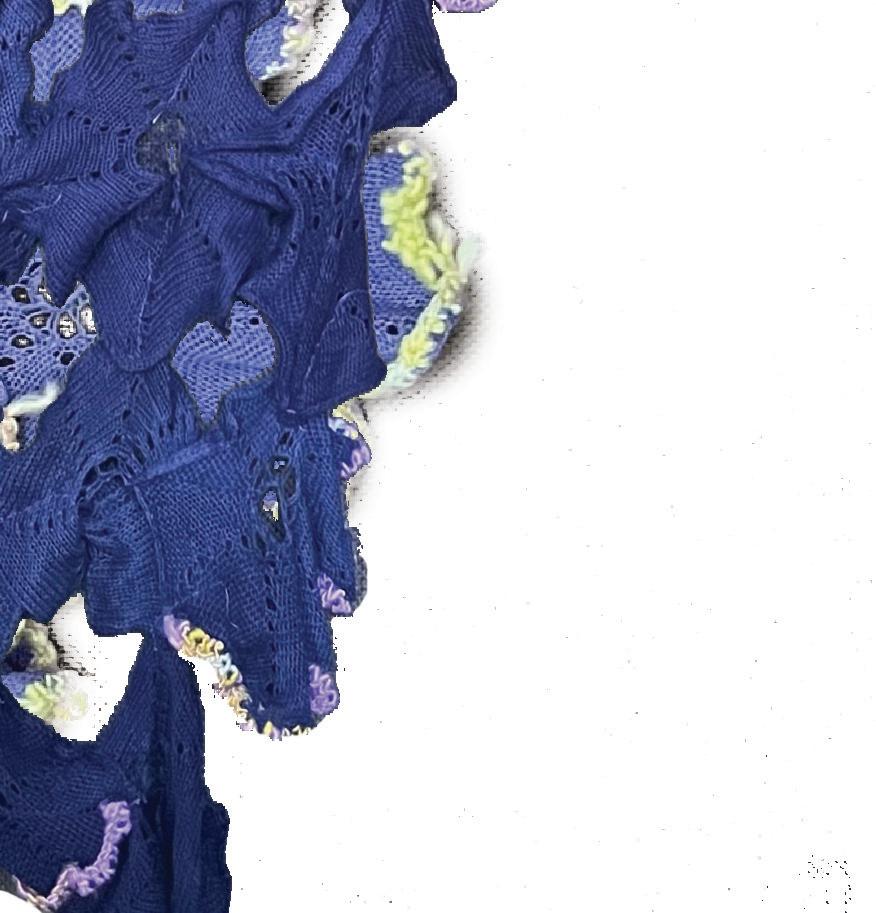




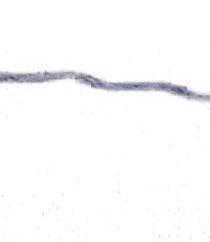
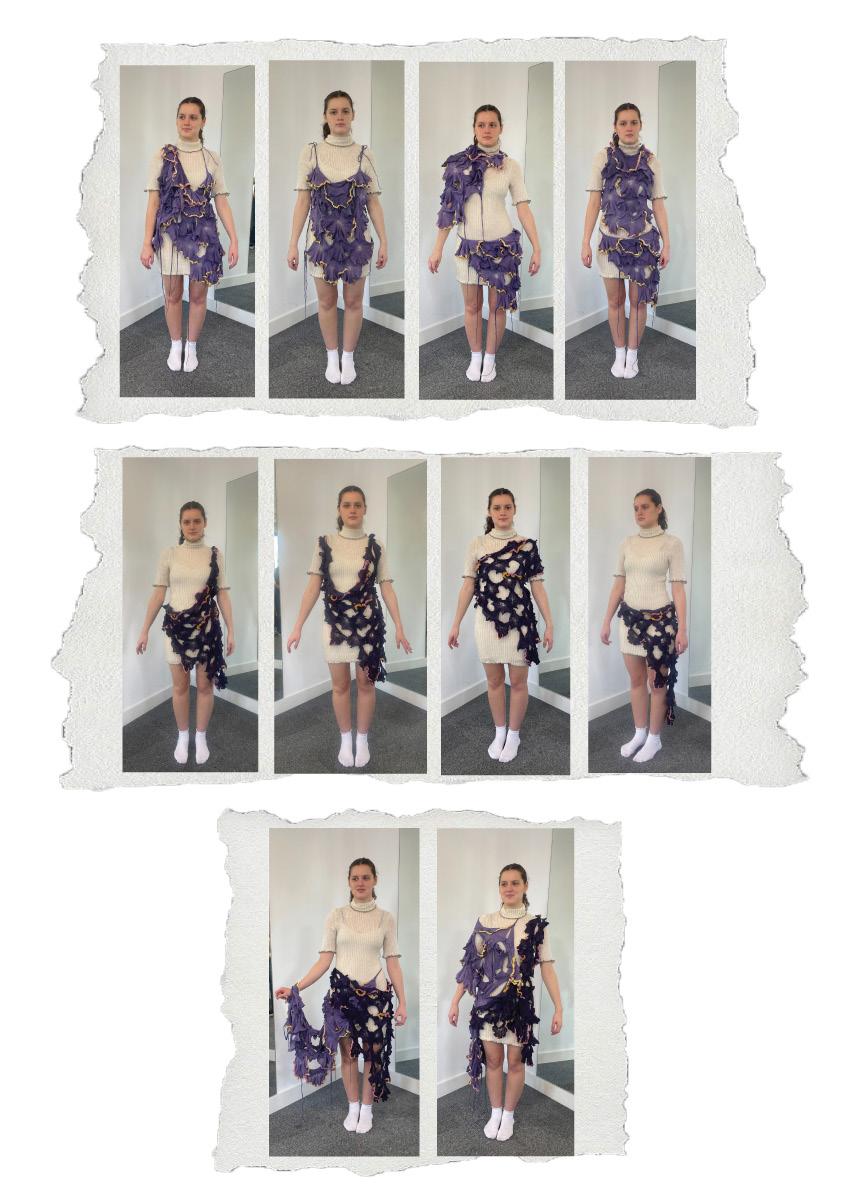
Market Research
The sustainable fashion market is growing now that people are aware of the climate crisis. Consumers are also becoming aware of the unethical labour practices that go into producing fast fashion clothing.
• Market Growth: The global ethical fashion market is projected to grow to around $15 billion by 2030 at a CAGR of over 9%. (Business Research Company)
• Consumer Awareness: Over 60% of consumers, especially Gen Z and Millennials, state that sustainability is an important factor in their purchasing decisions (McKinsey, “The State of Fashion” report).
Sustainable trends that are growing include, the rise of second-hand websites and markets, preference for artisan craftsmanship, transparent sourcing, and the clothes rental market.
Because of my use of 100% natural biodegradable fibres, natural dying, modular designs, and artisan craftsmanship, my collection would fit into the luxury sustainable fashion and slow fashion markets. Consumers seeking high quality, sustainable pieces with strong storytelling narratives. The type of person who might buy something that I’ve made would prioritize sustainability, ethics, and transparency. They would prefer personal expression through clothing, rather than mass trends. They likely support small brands and artisan makers

